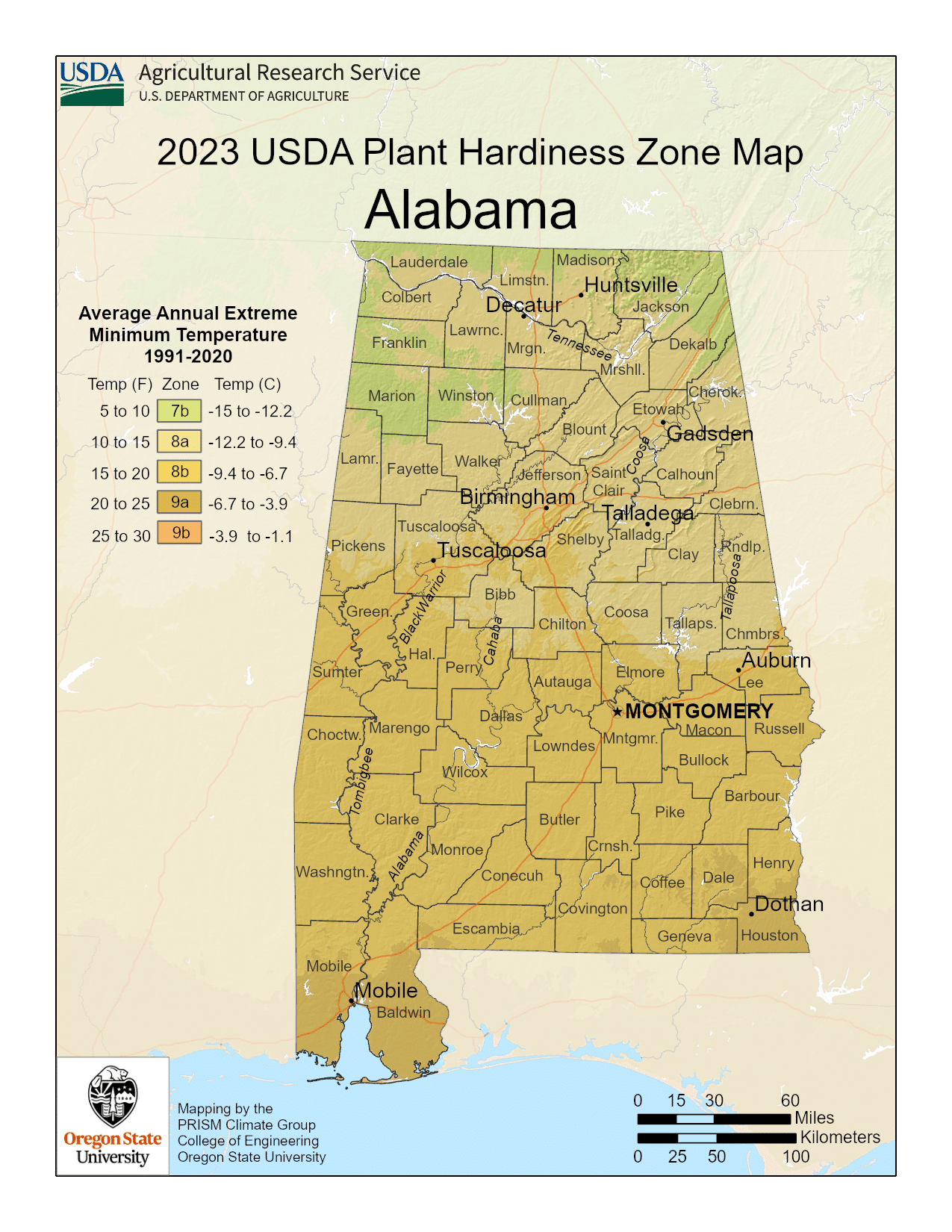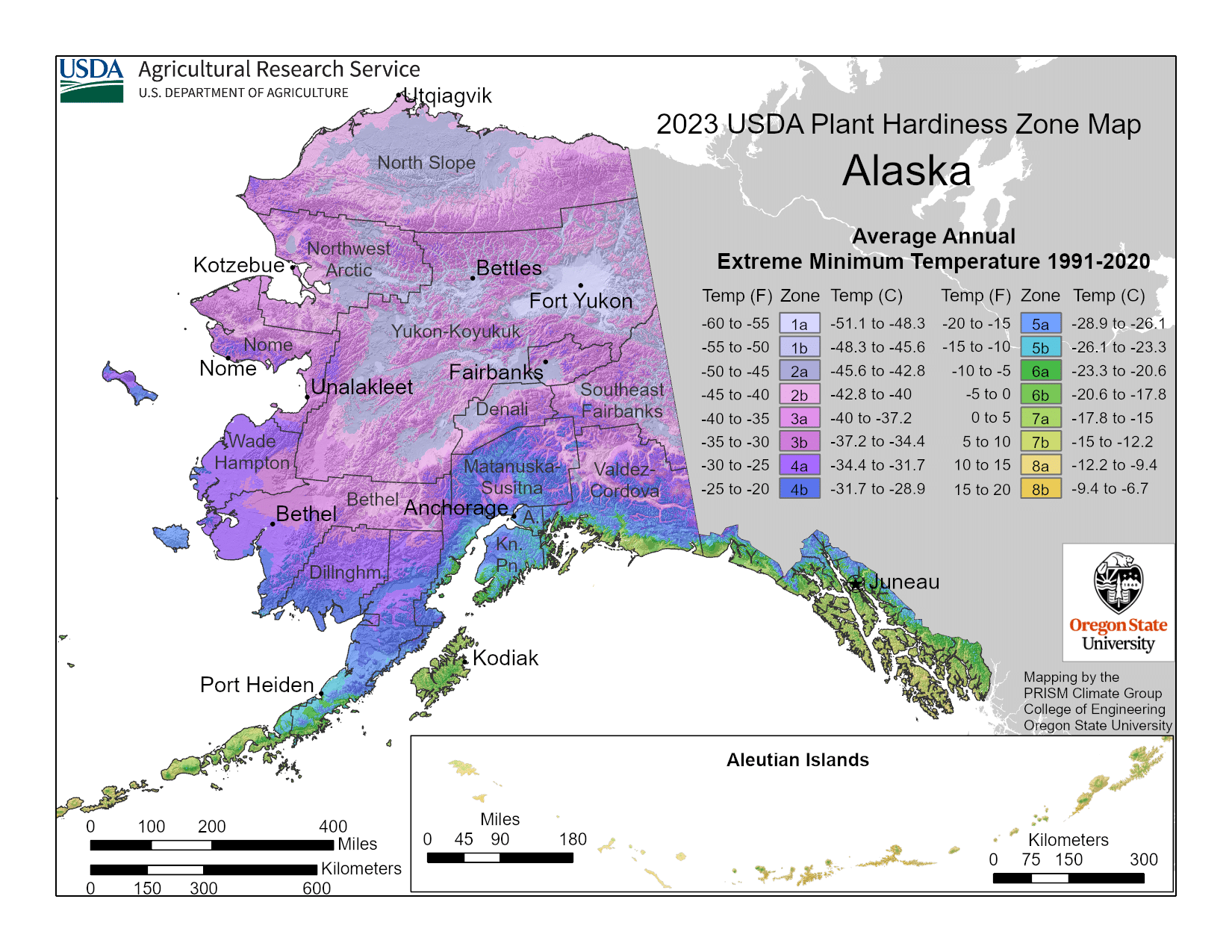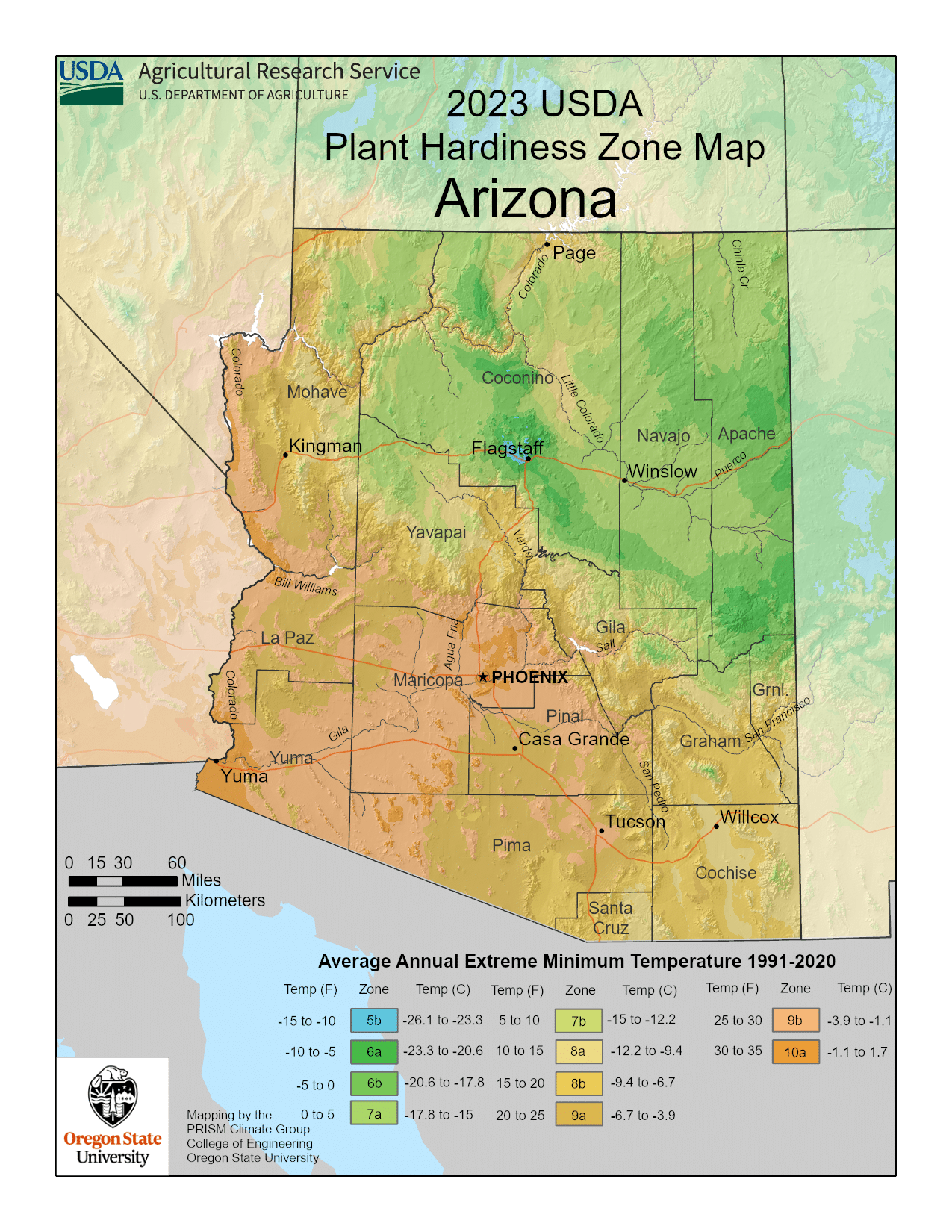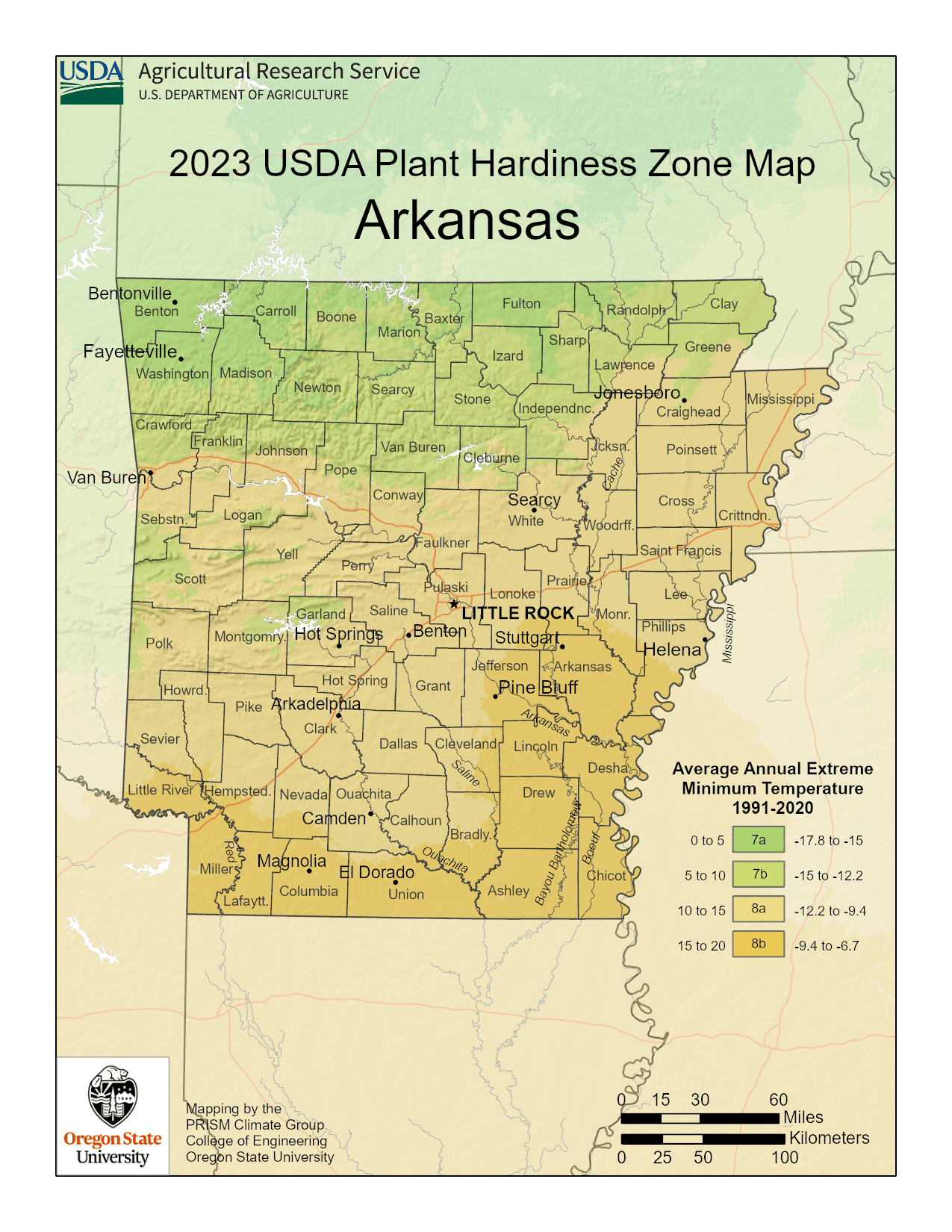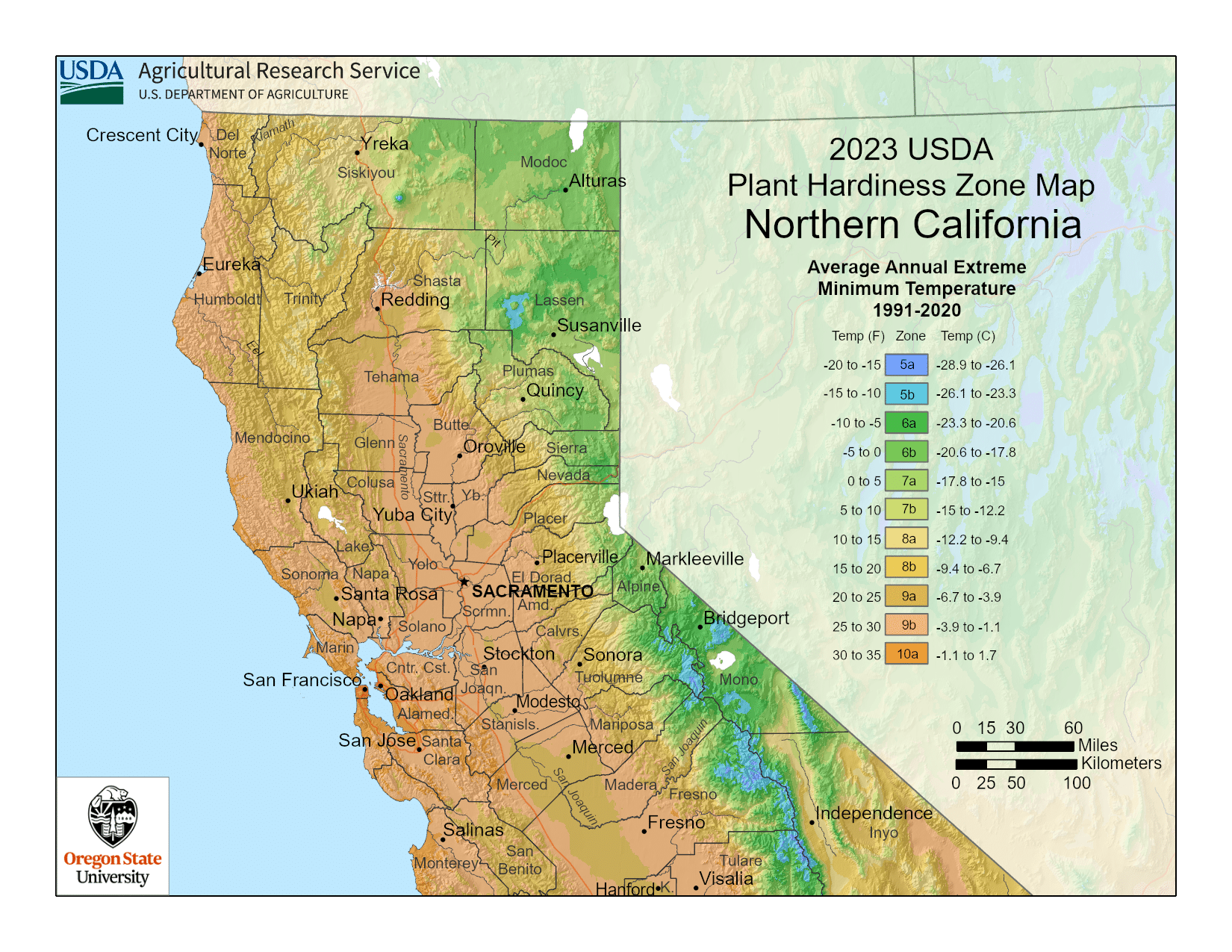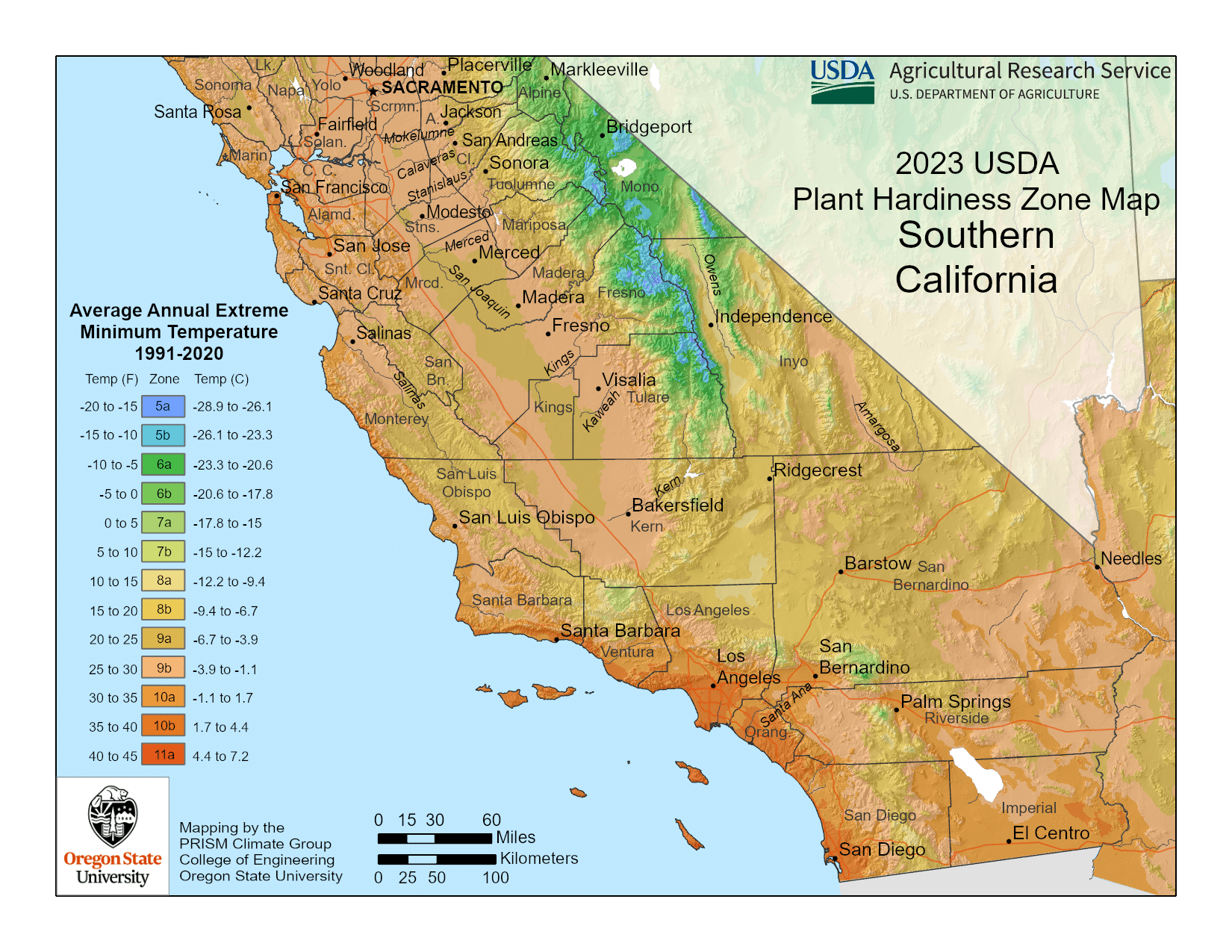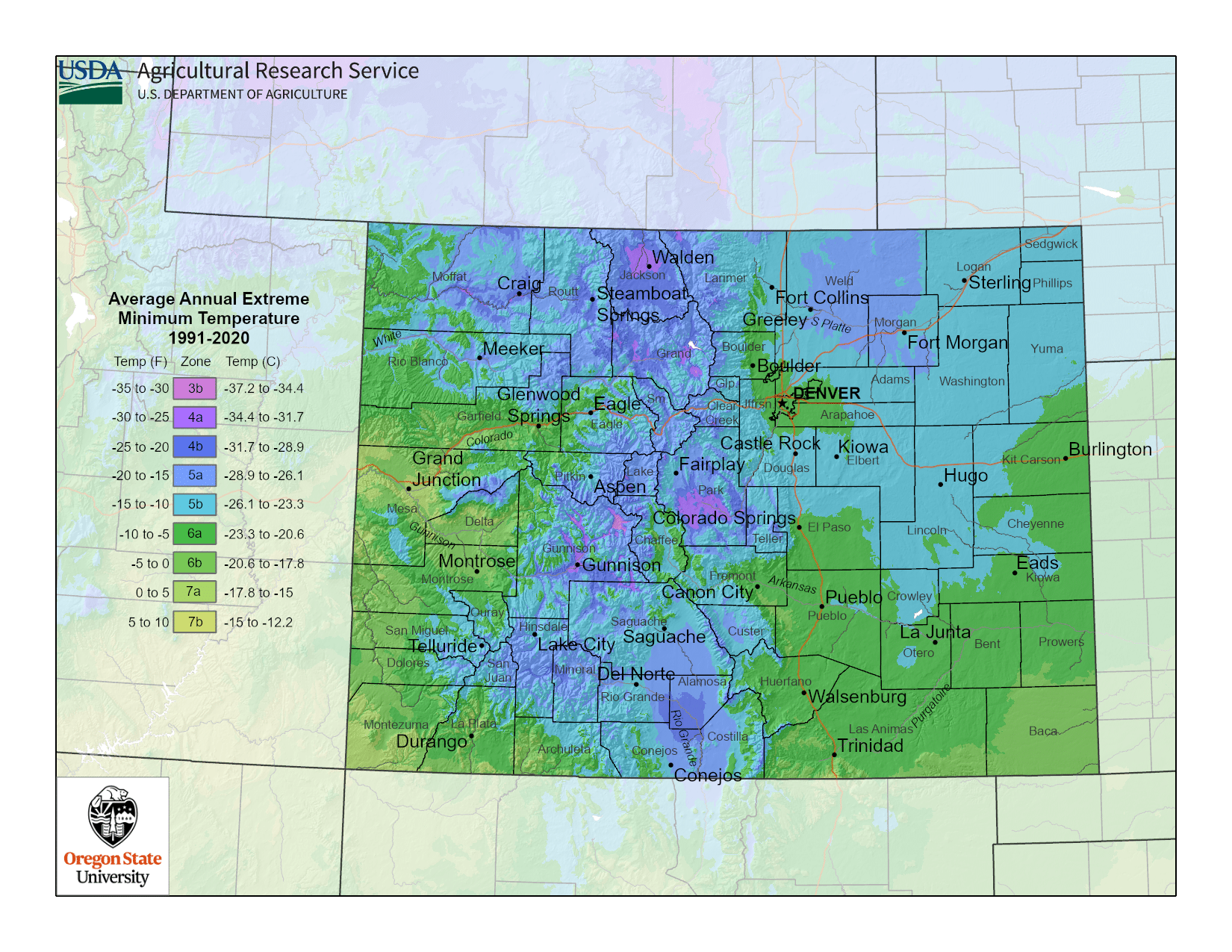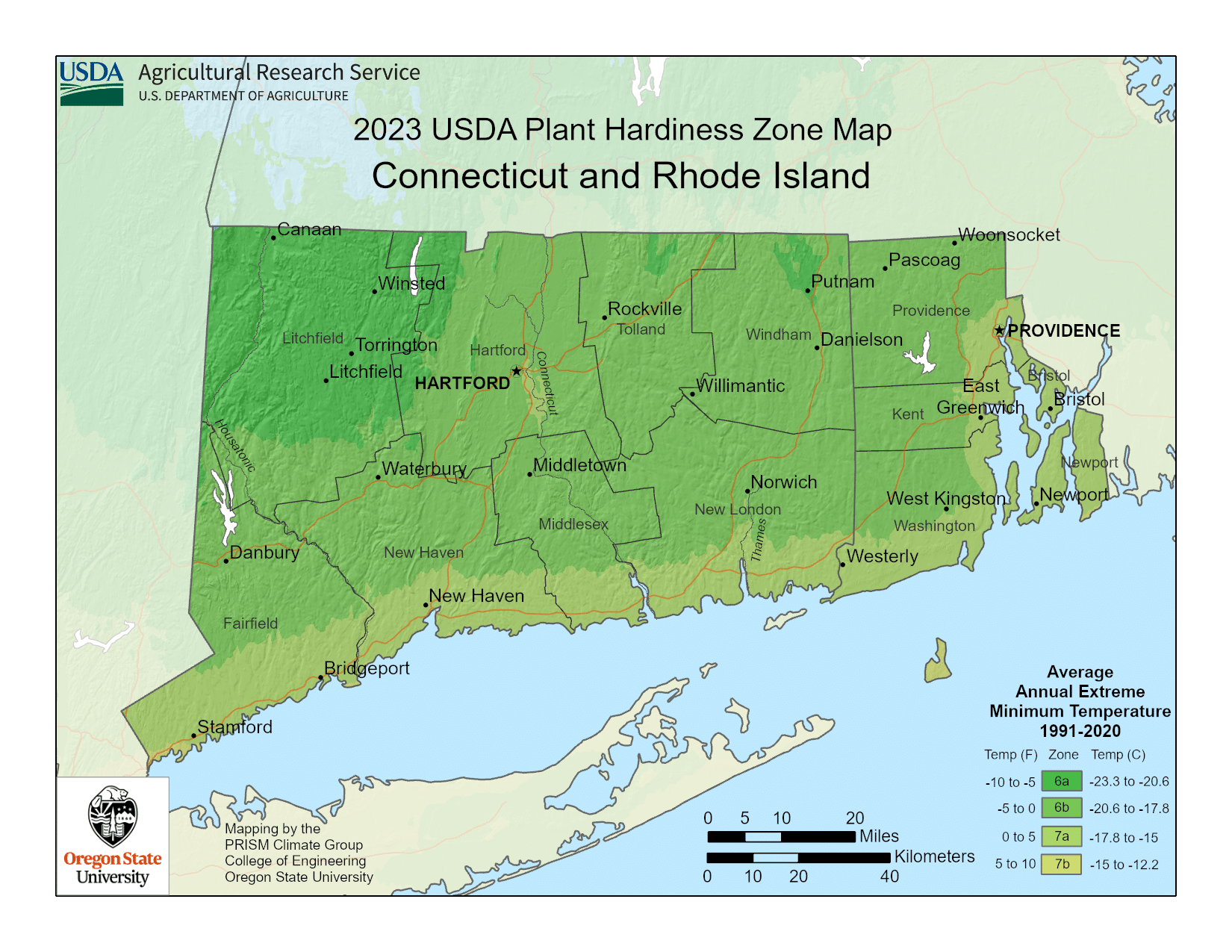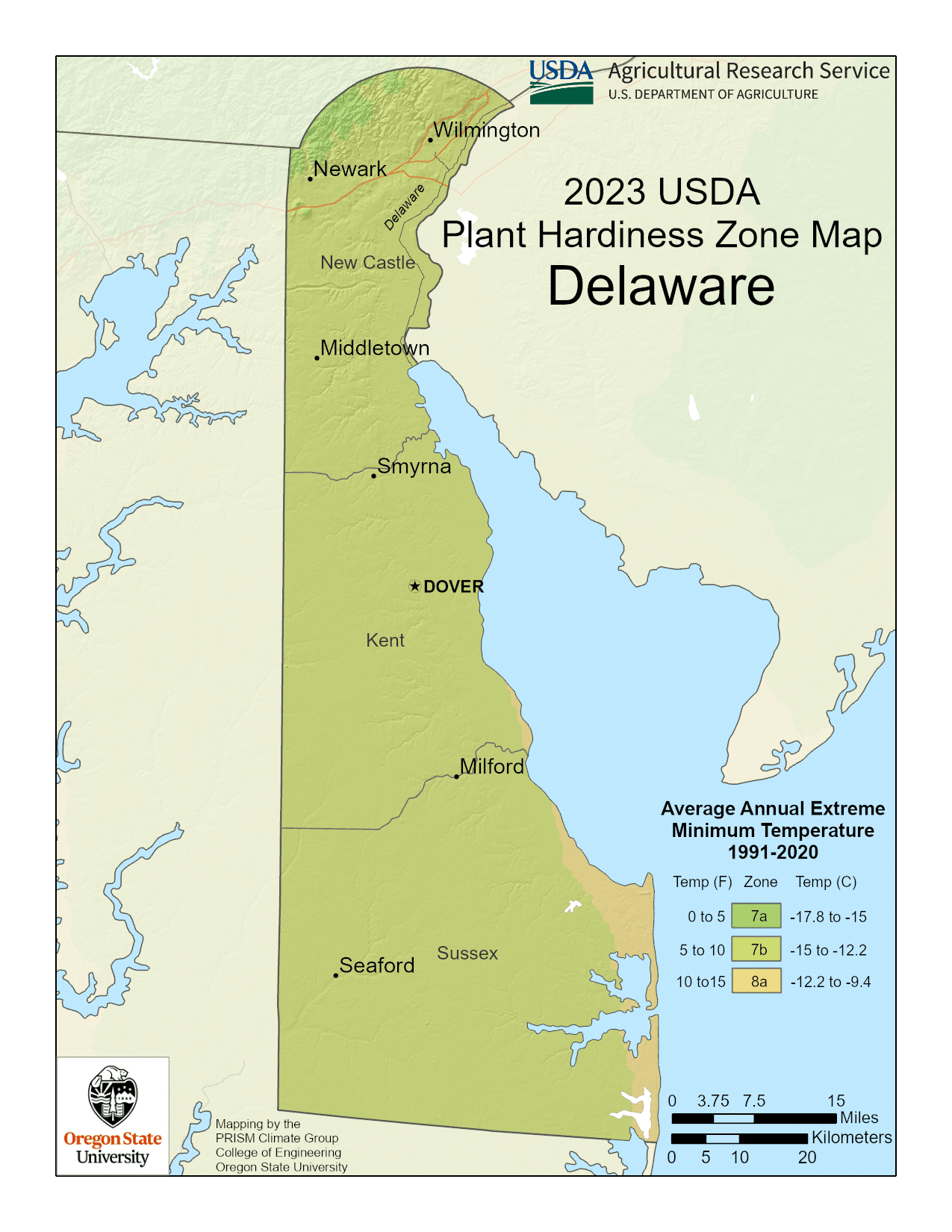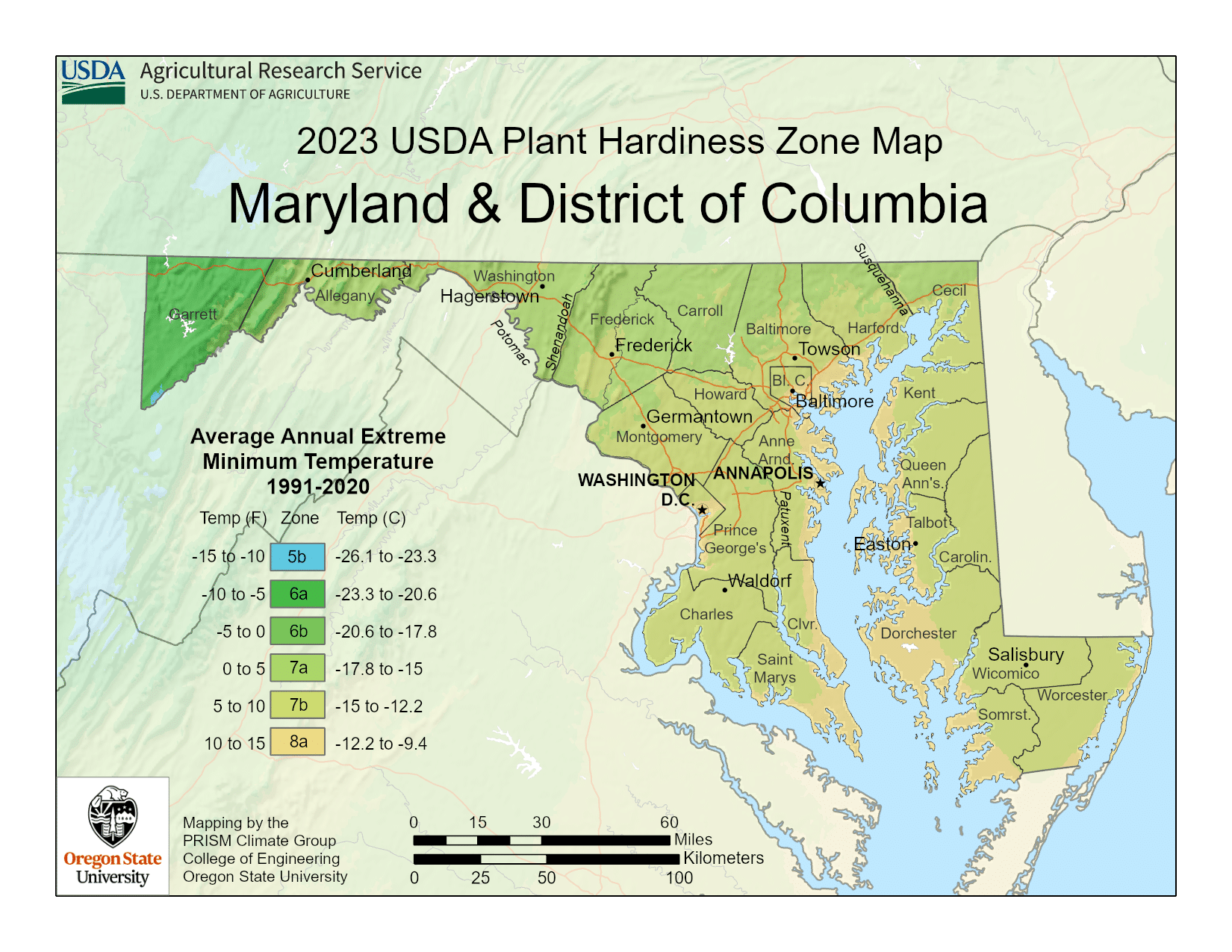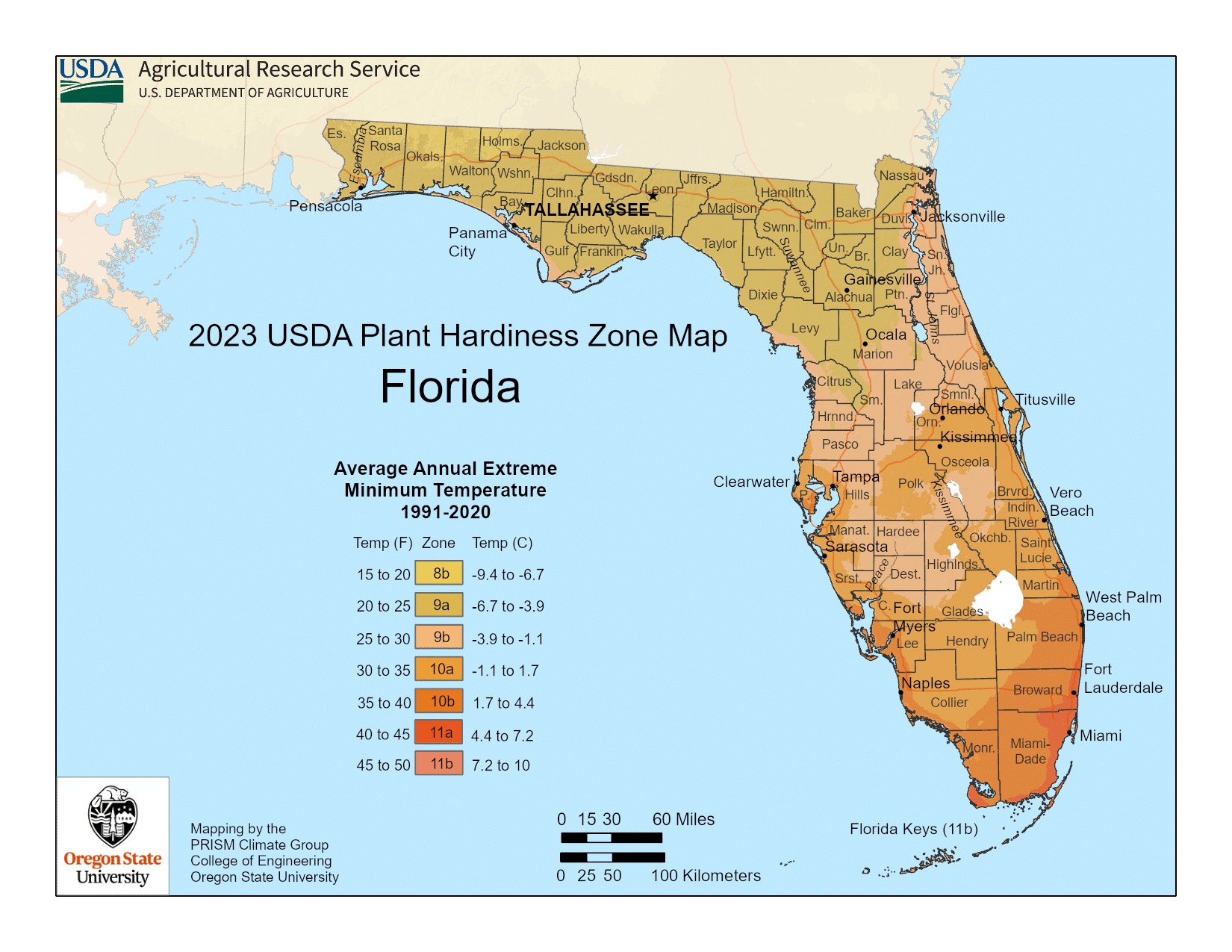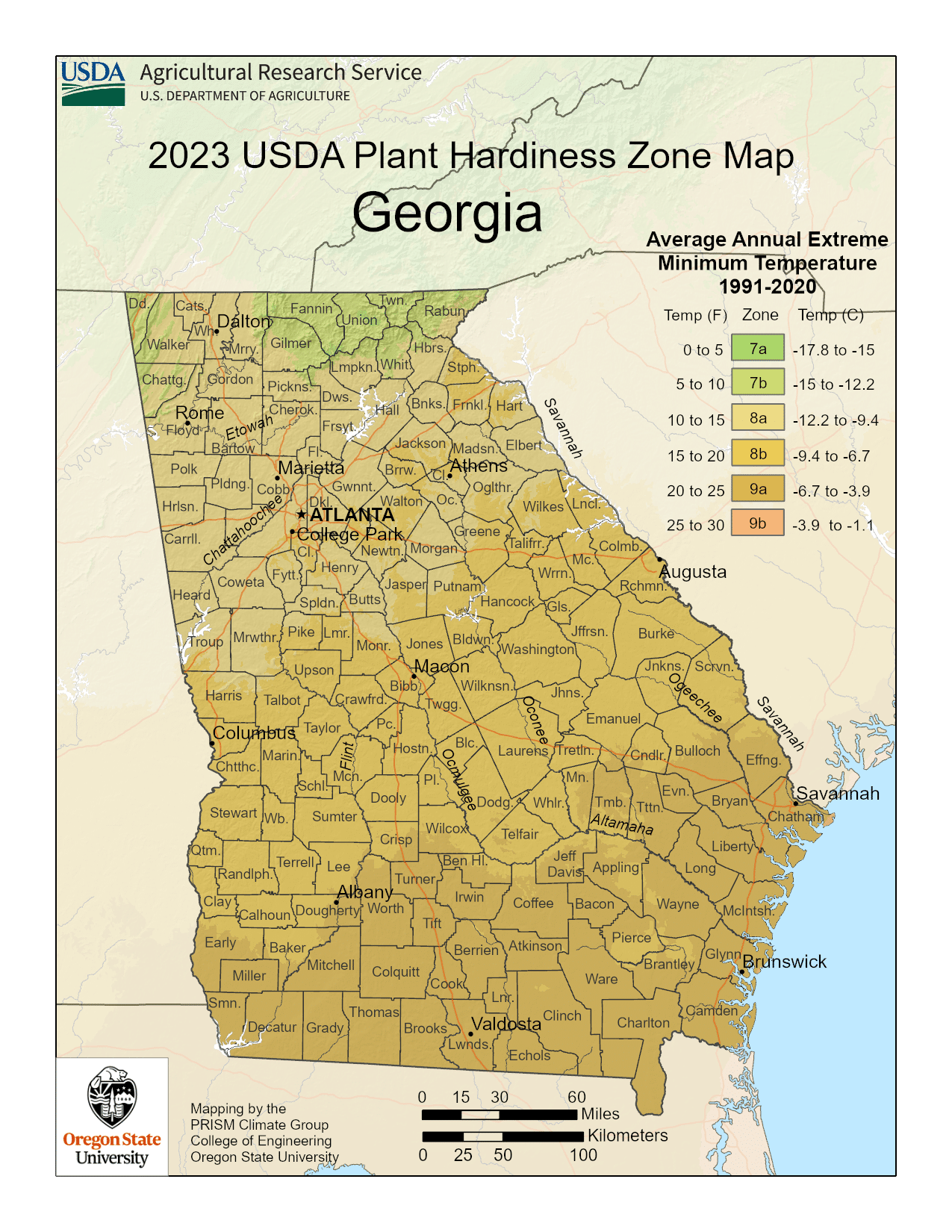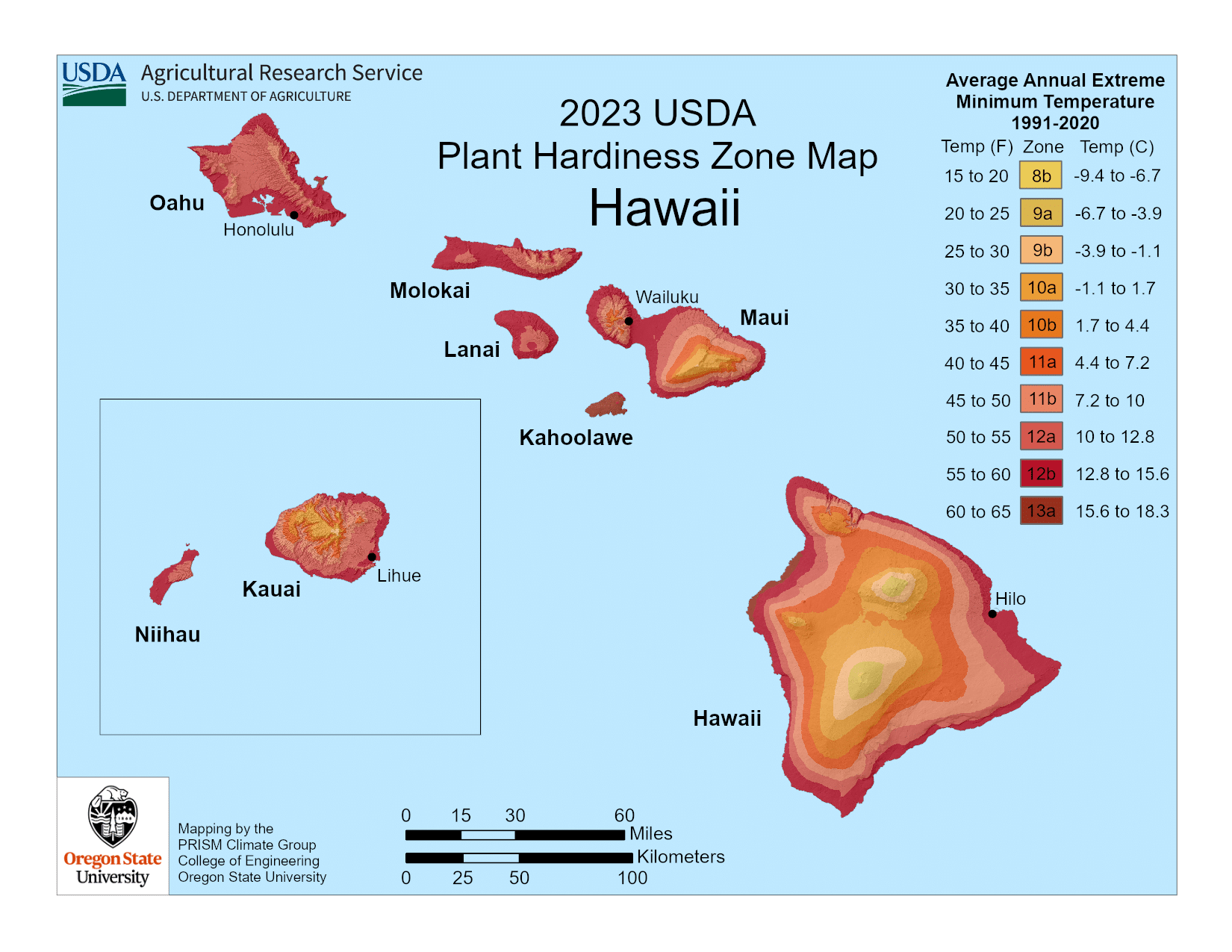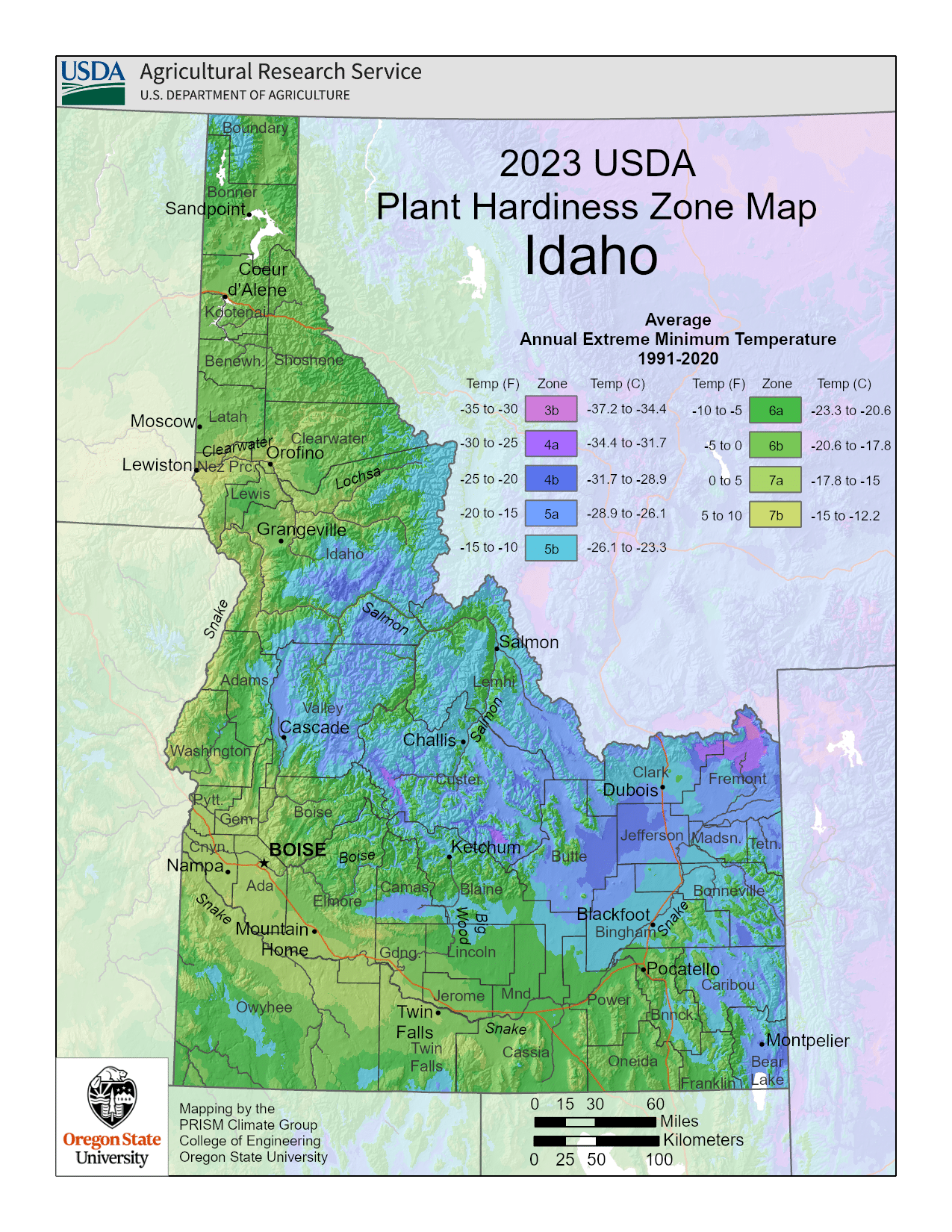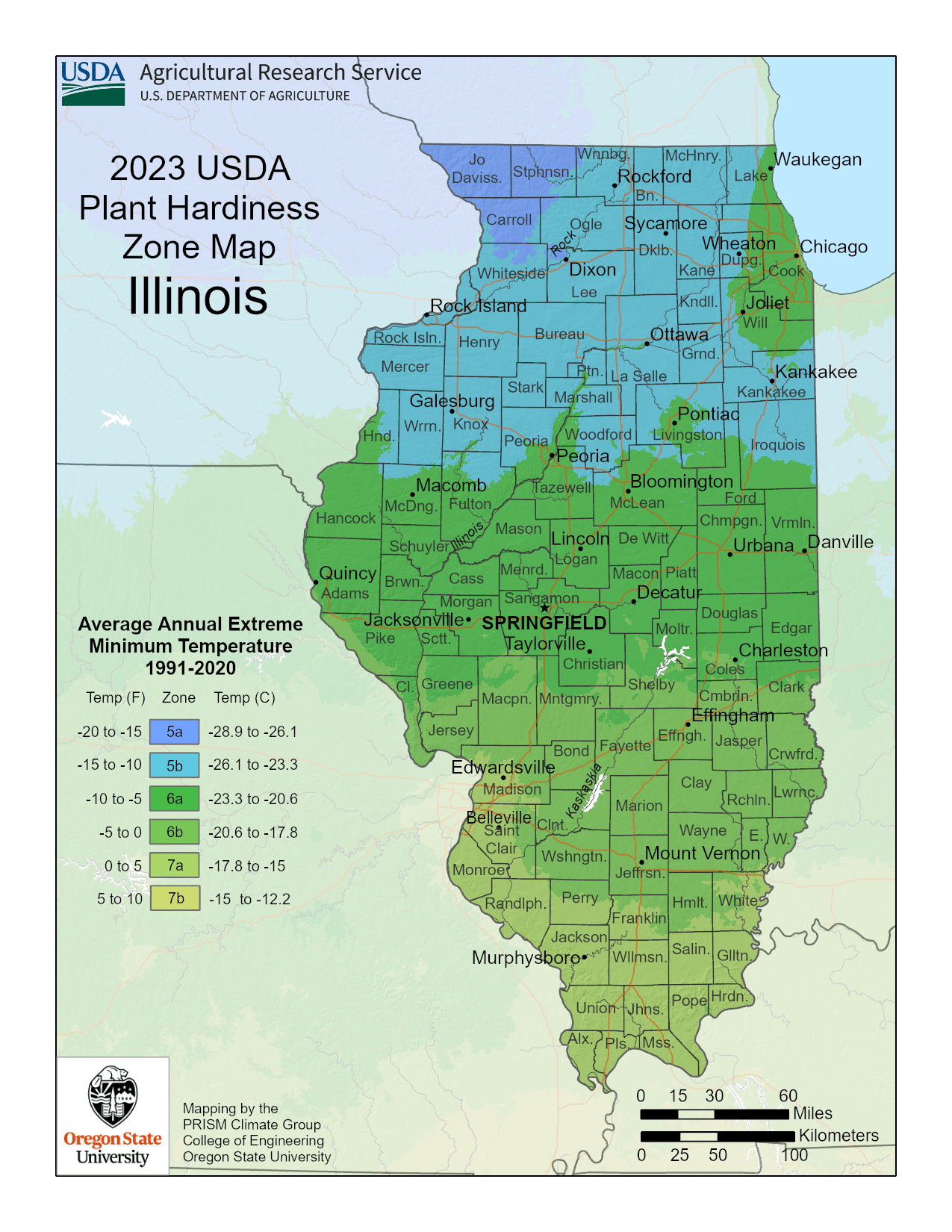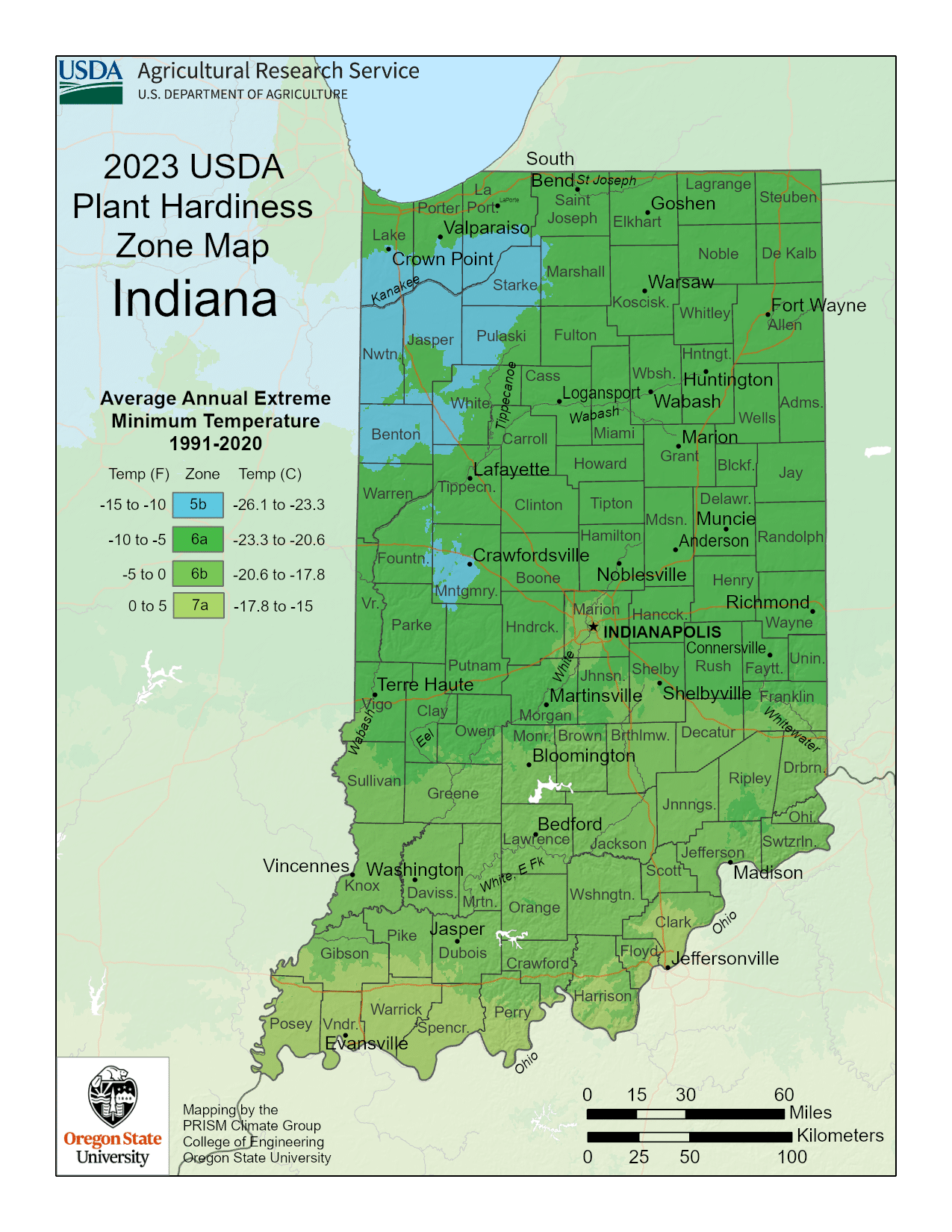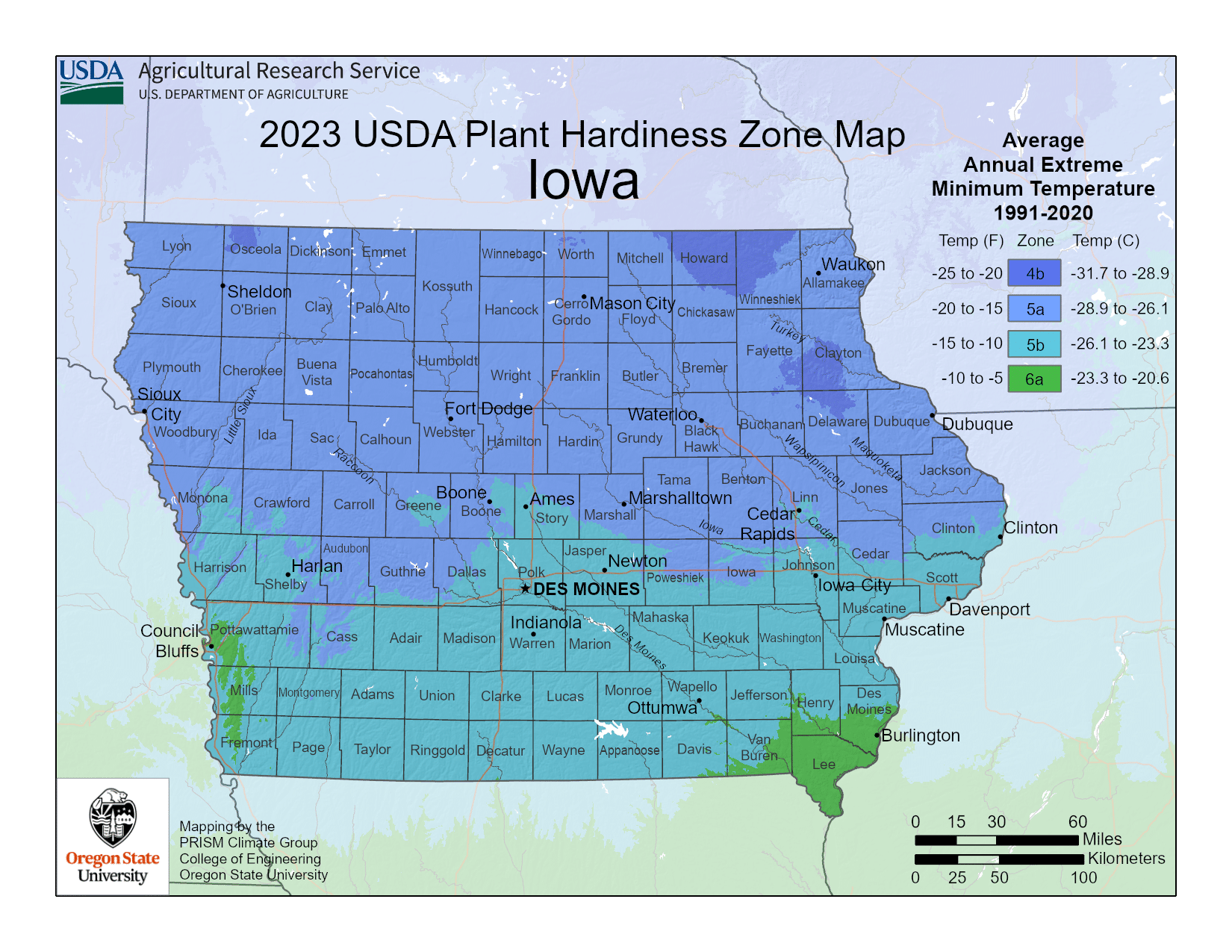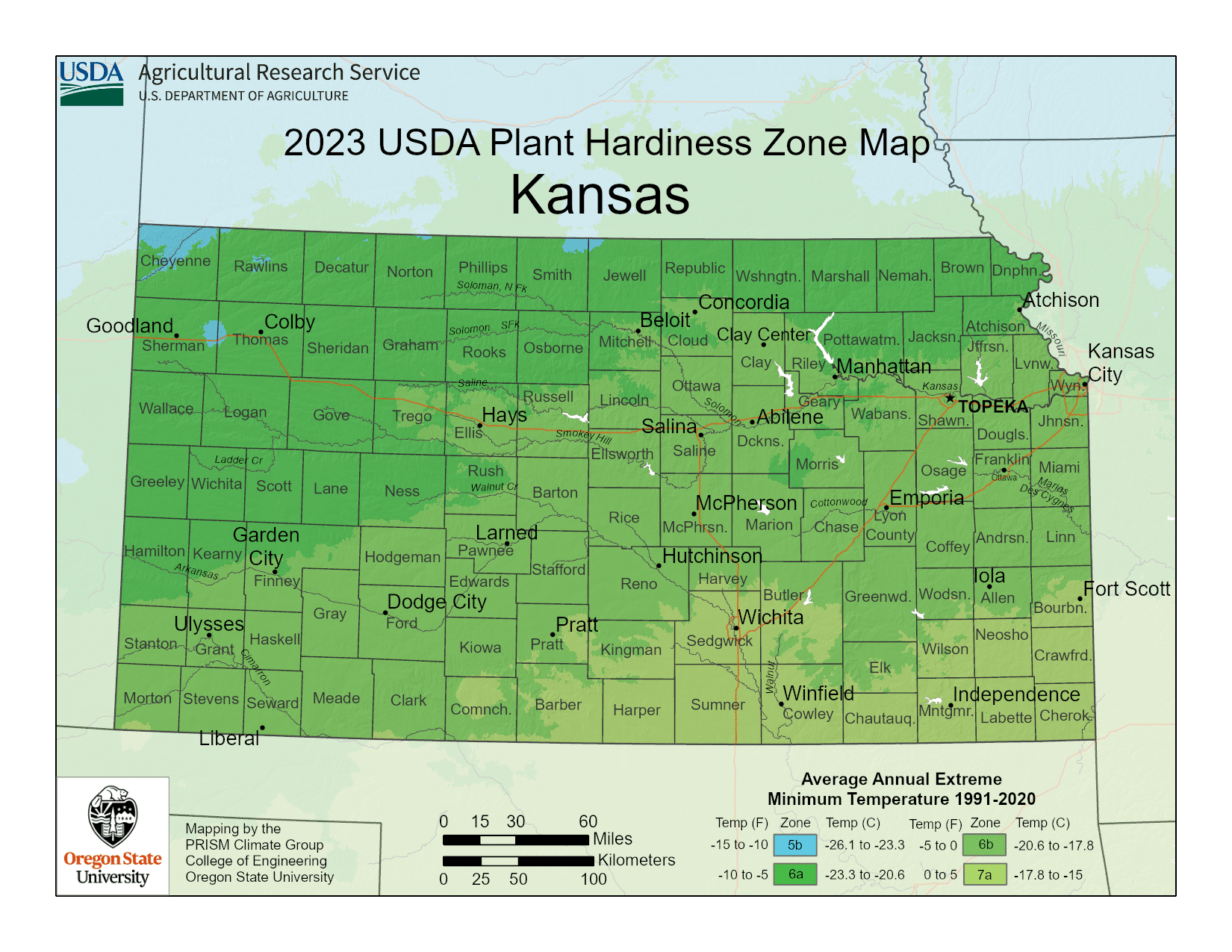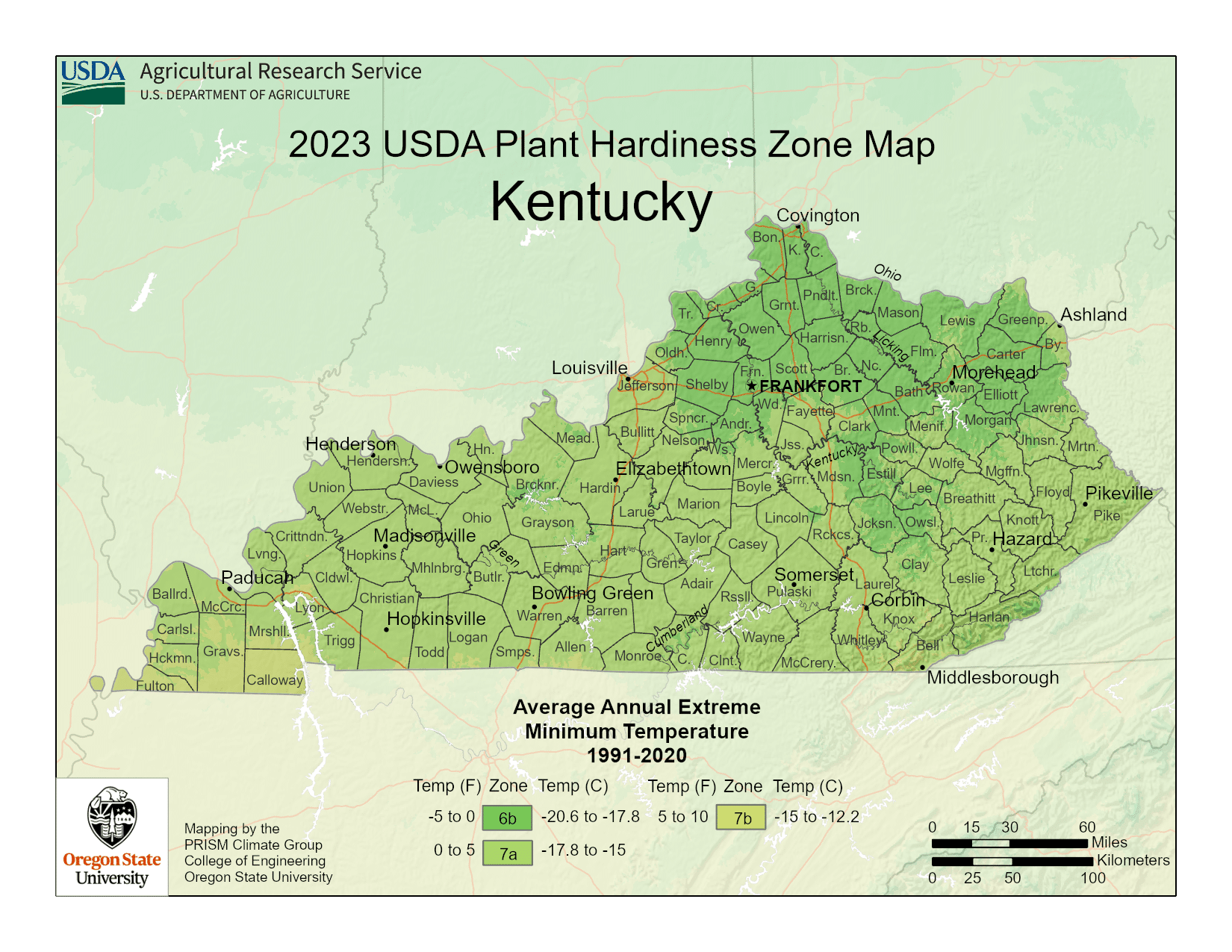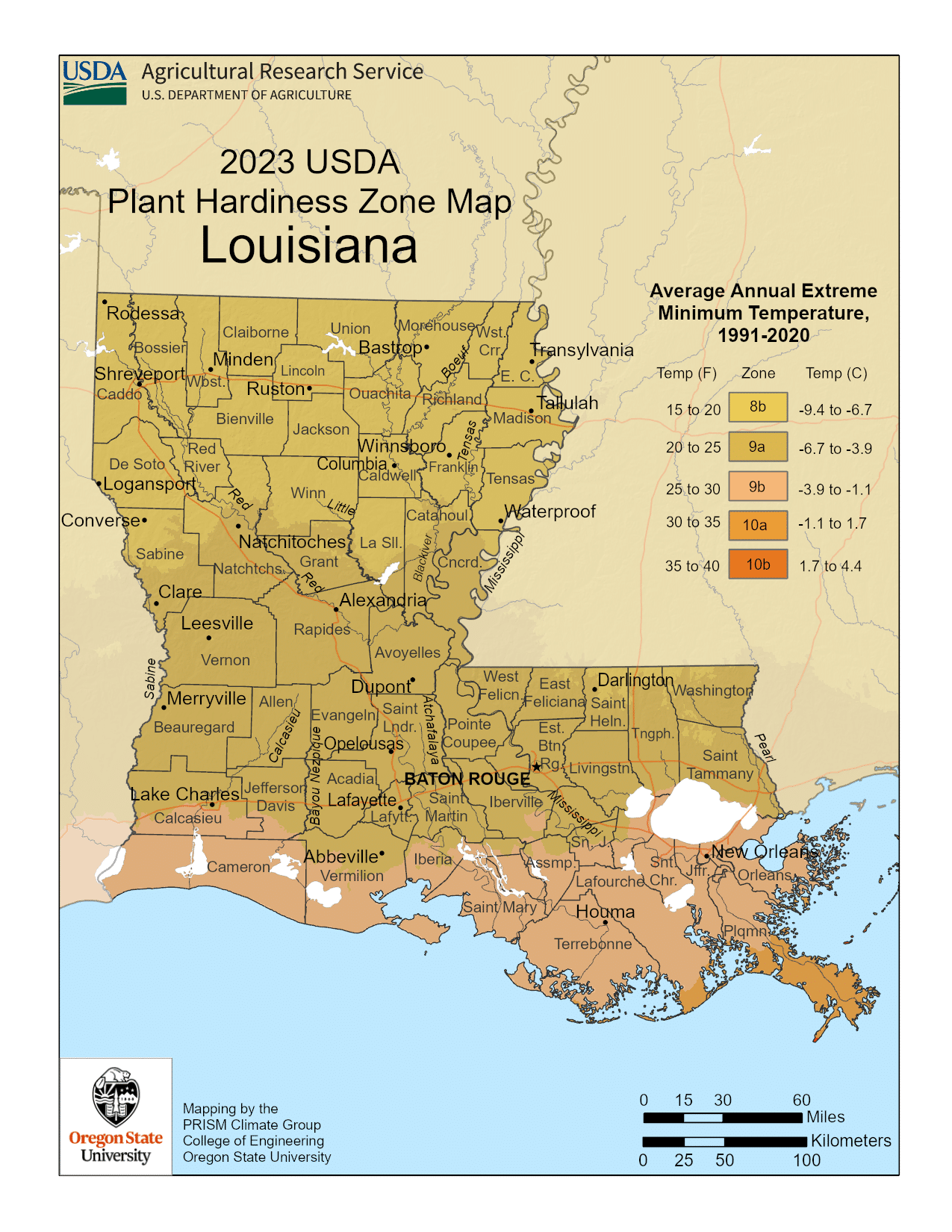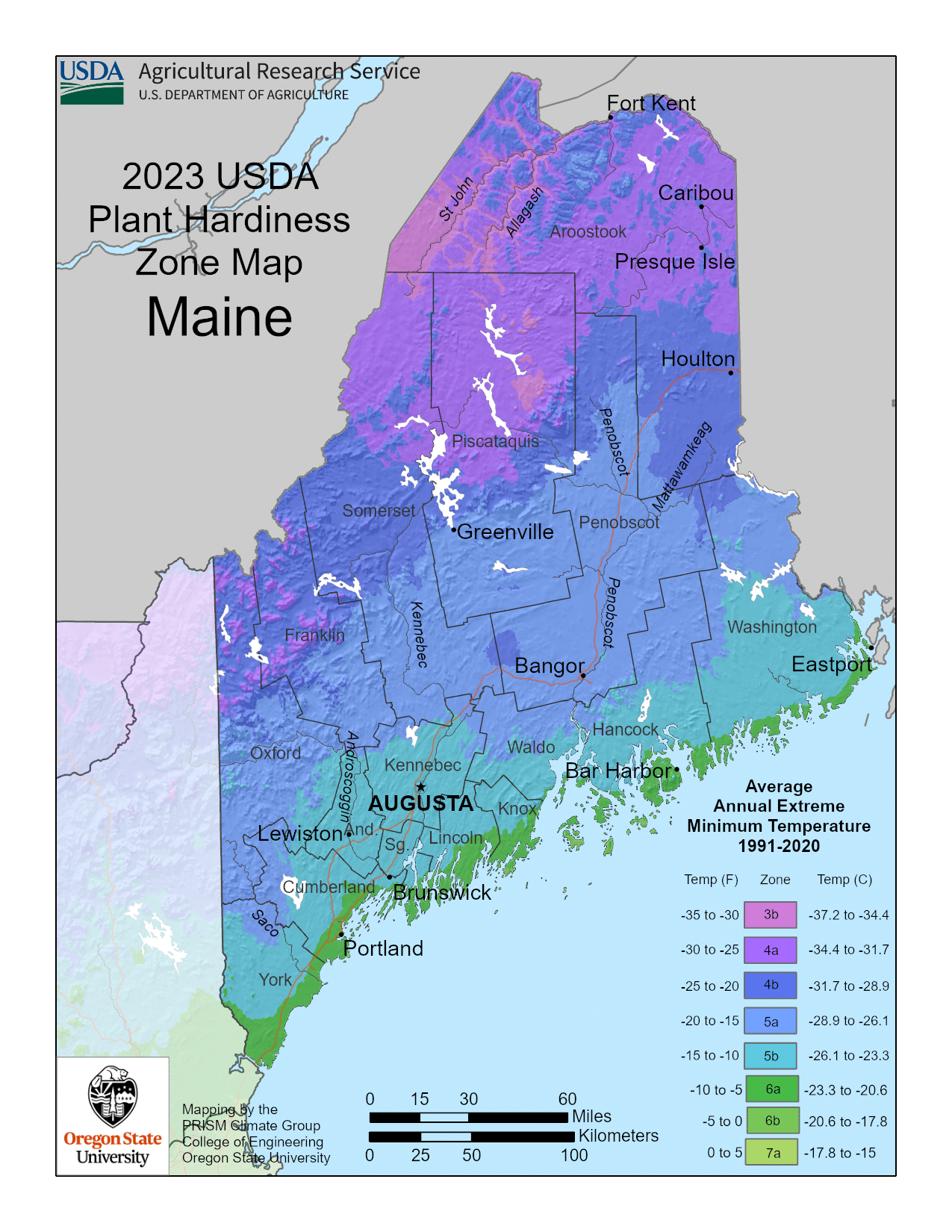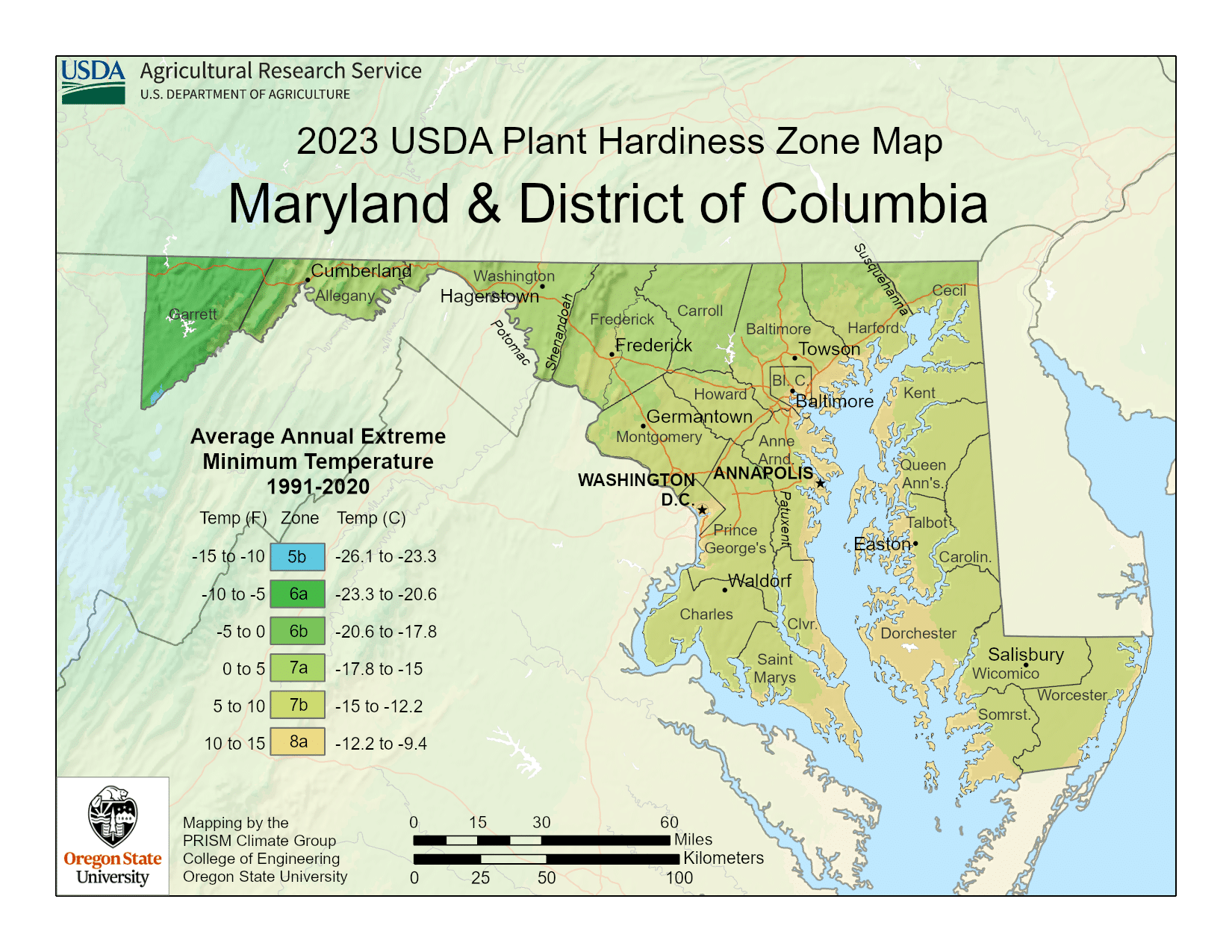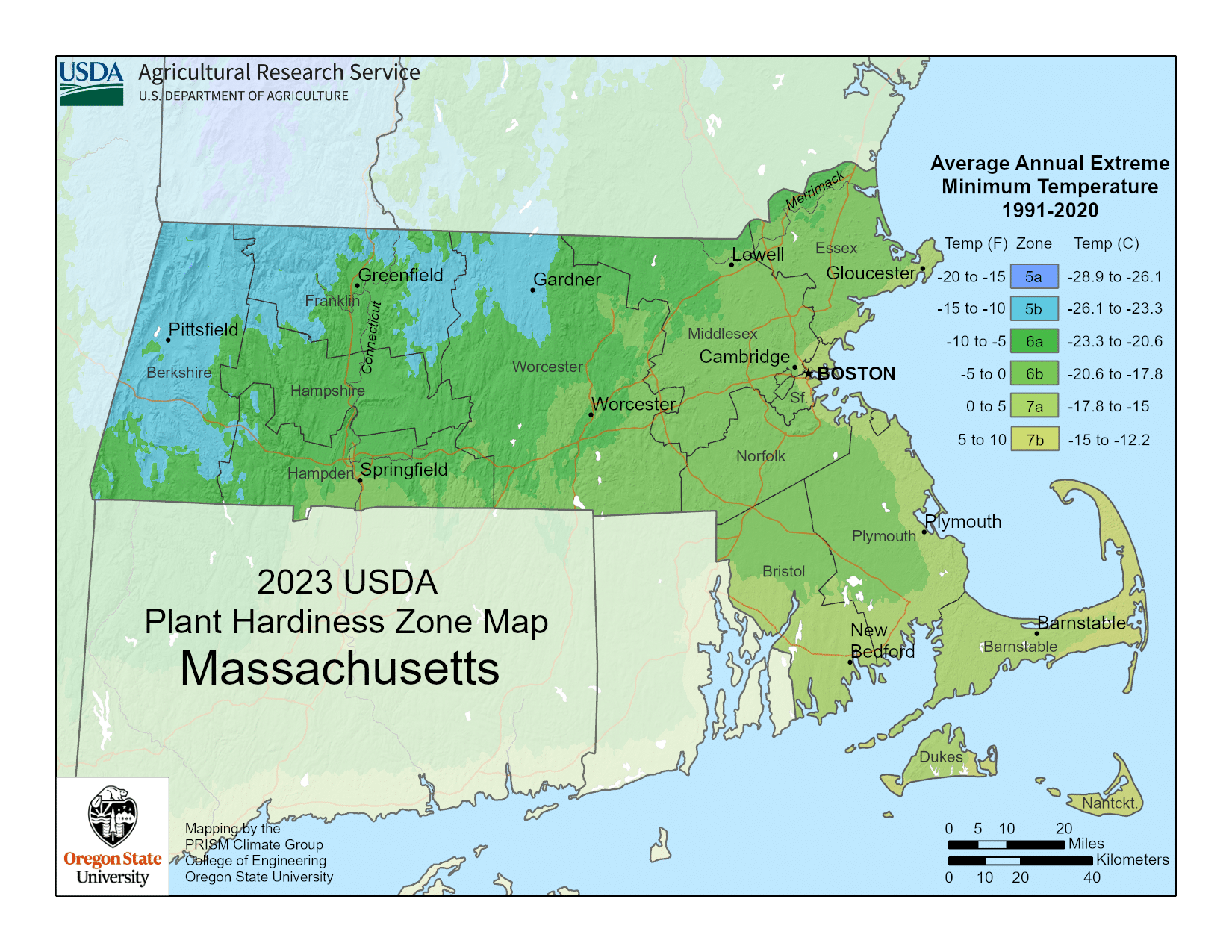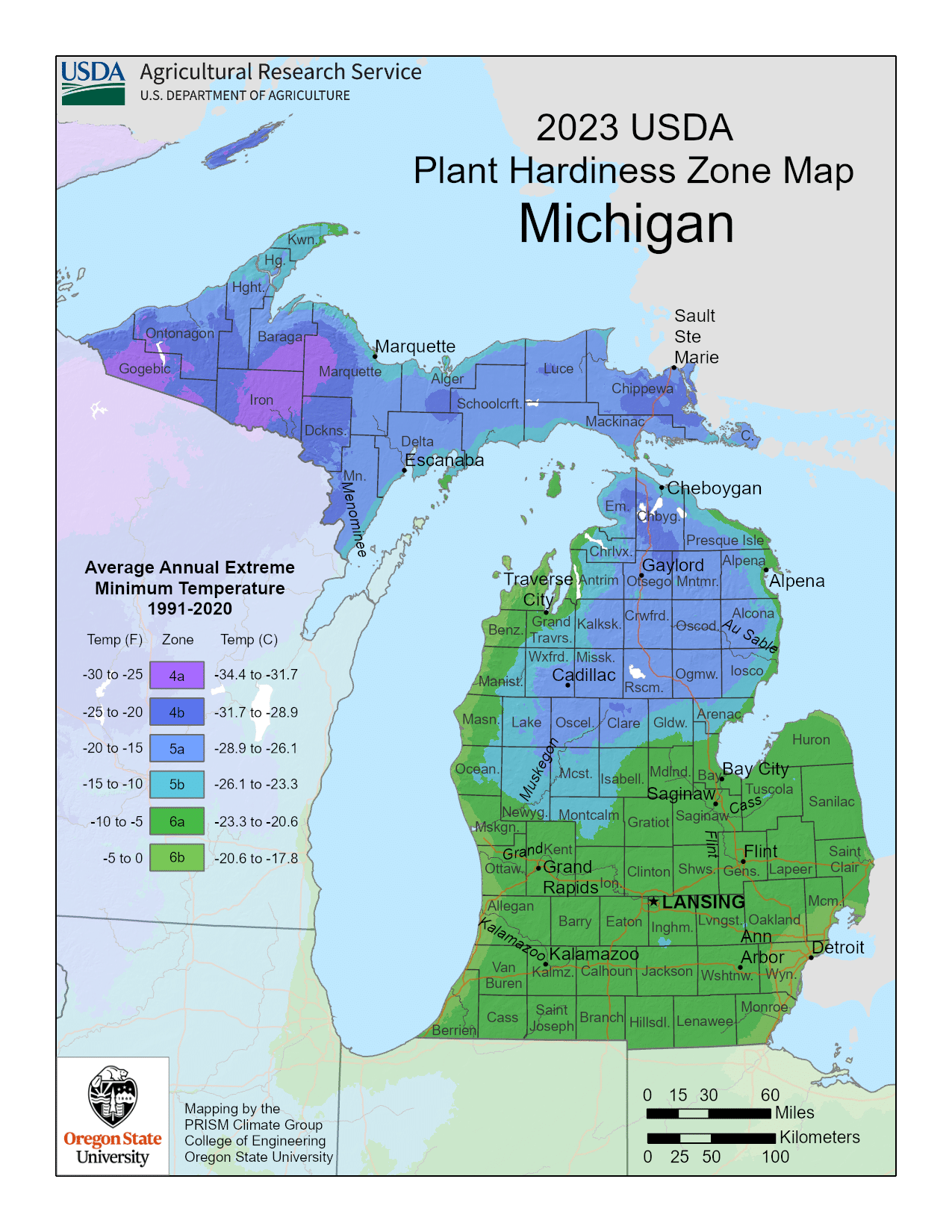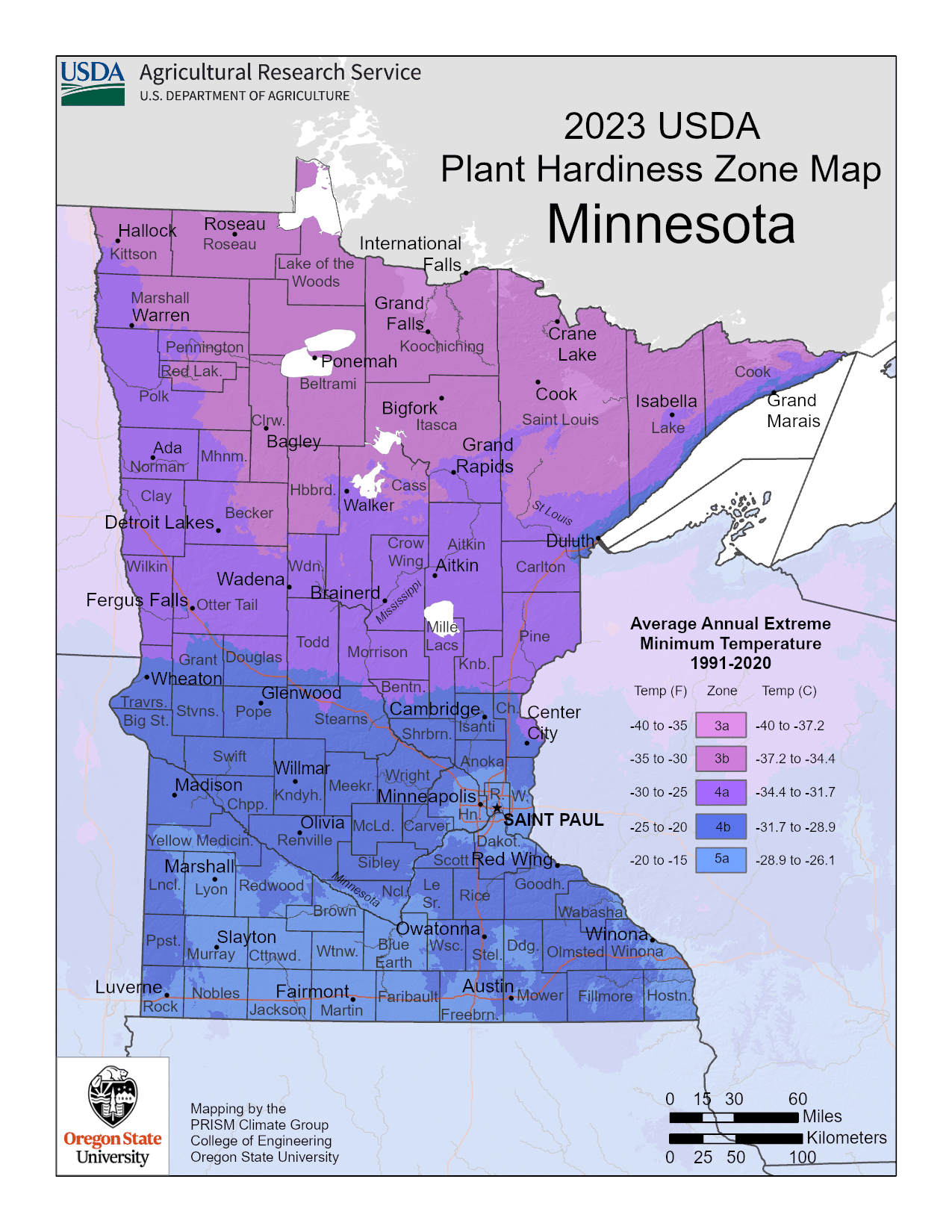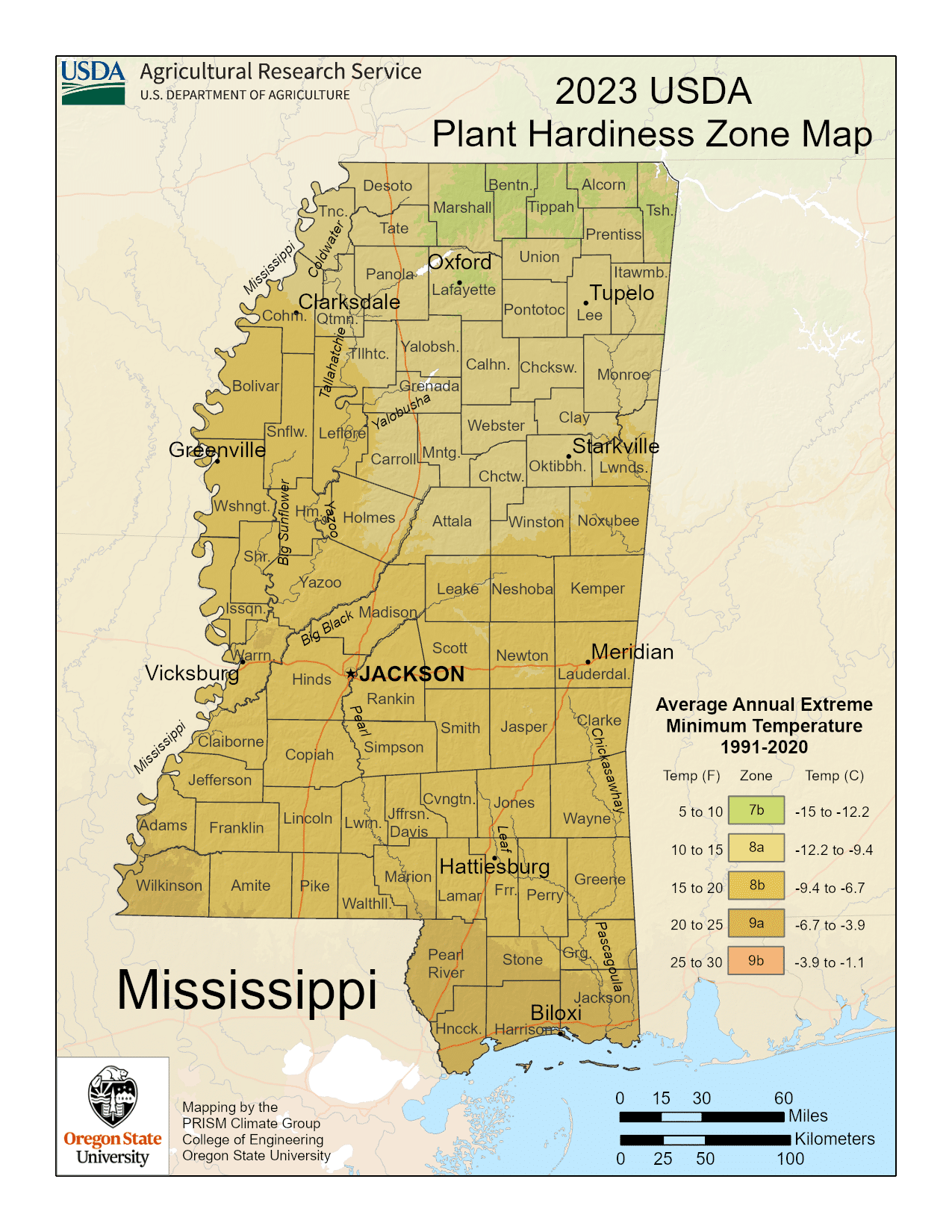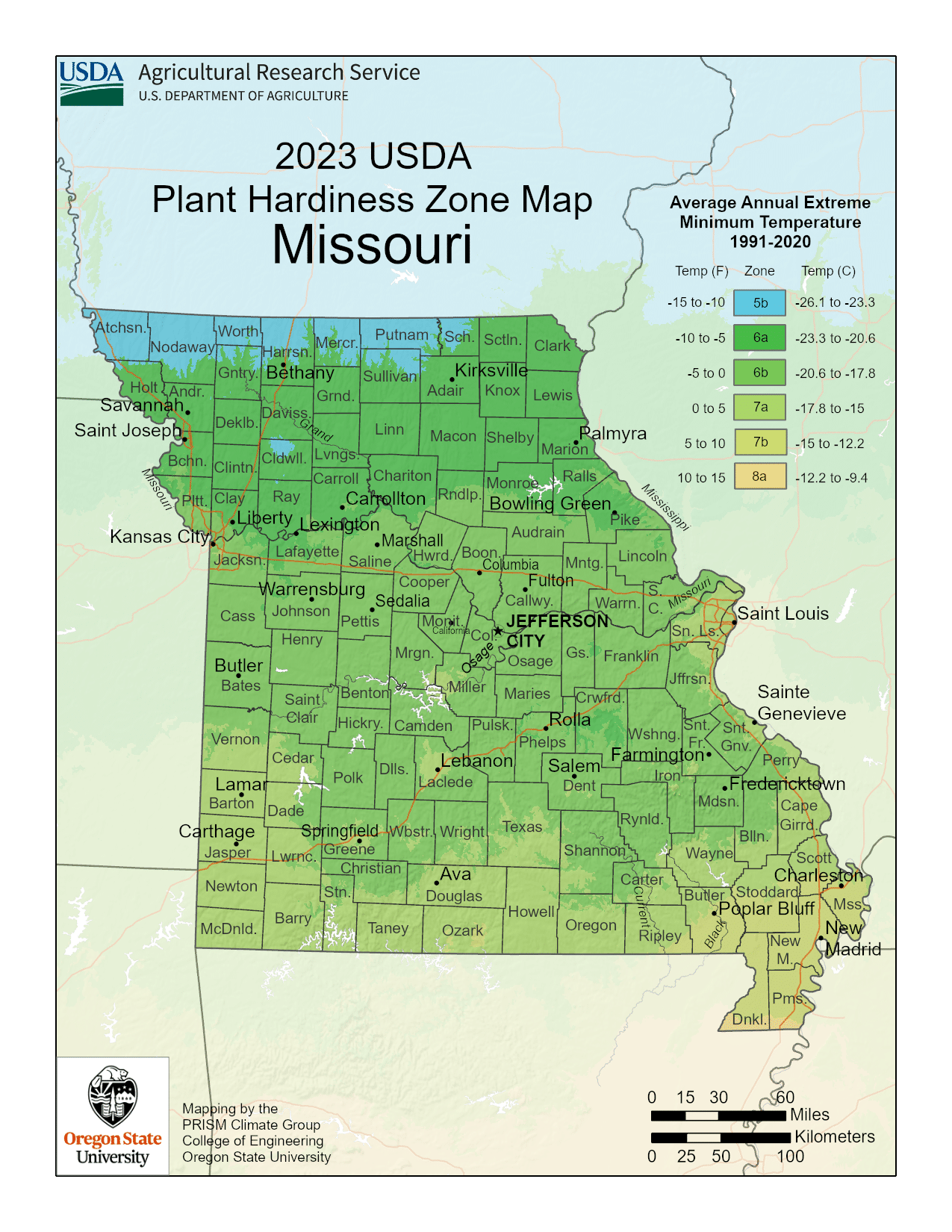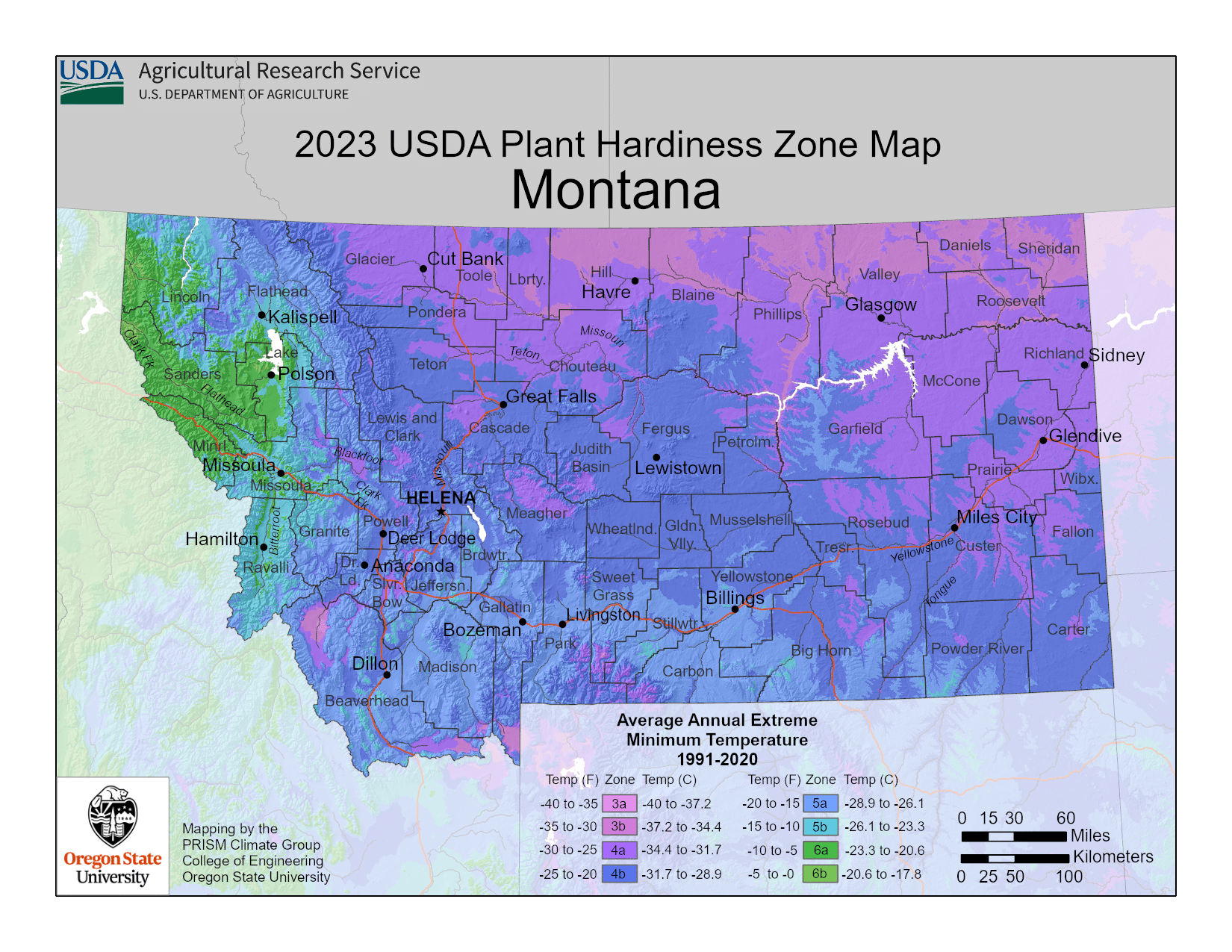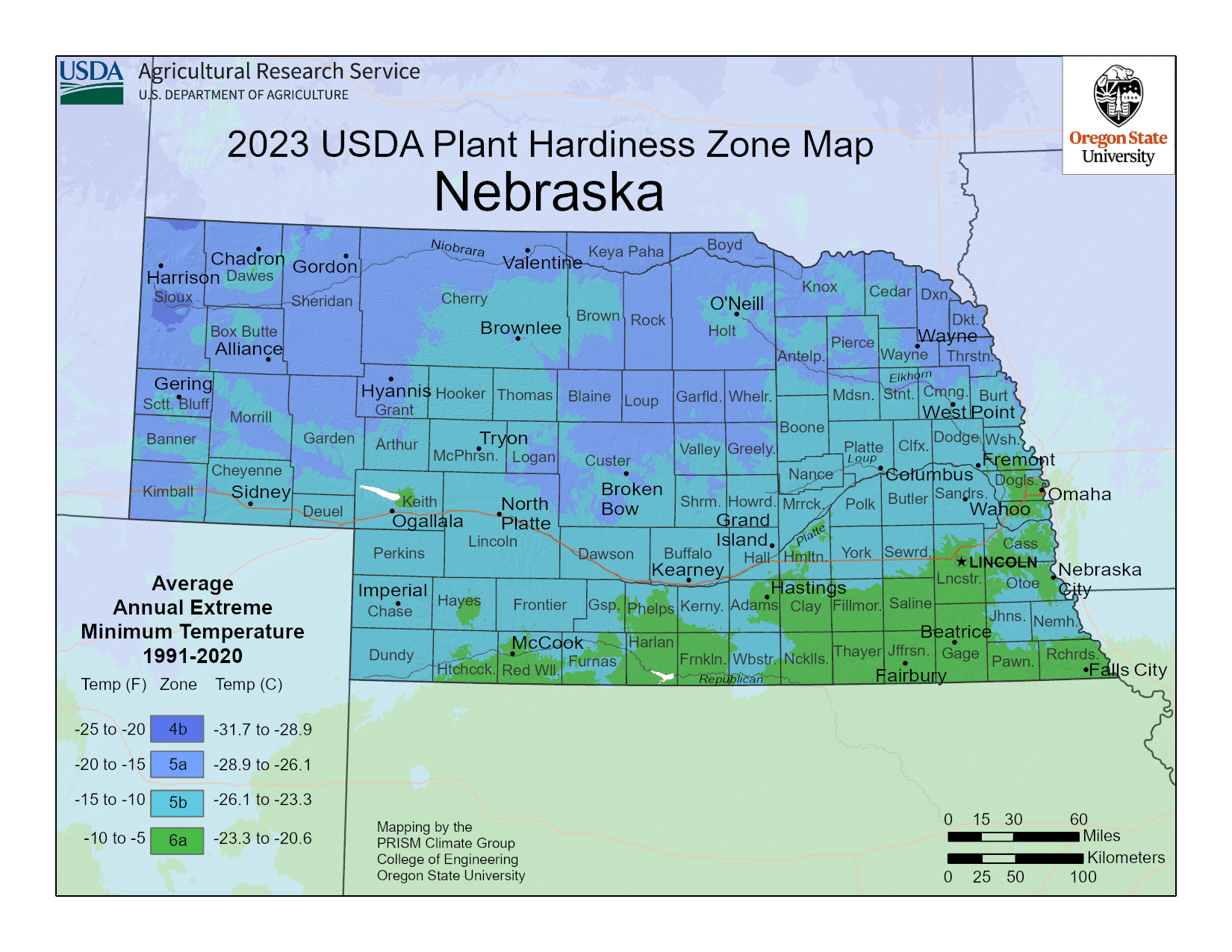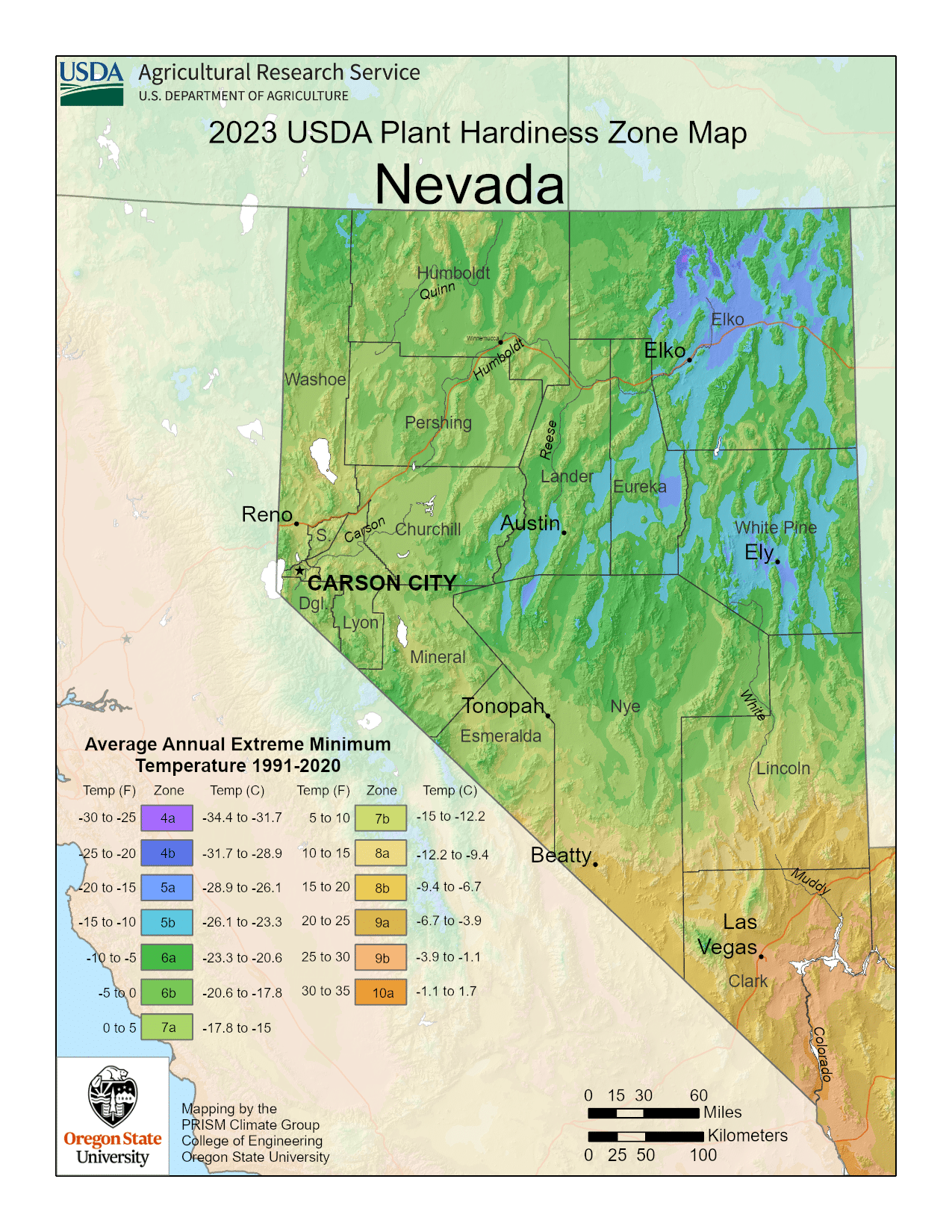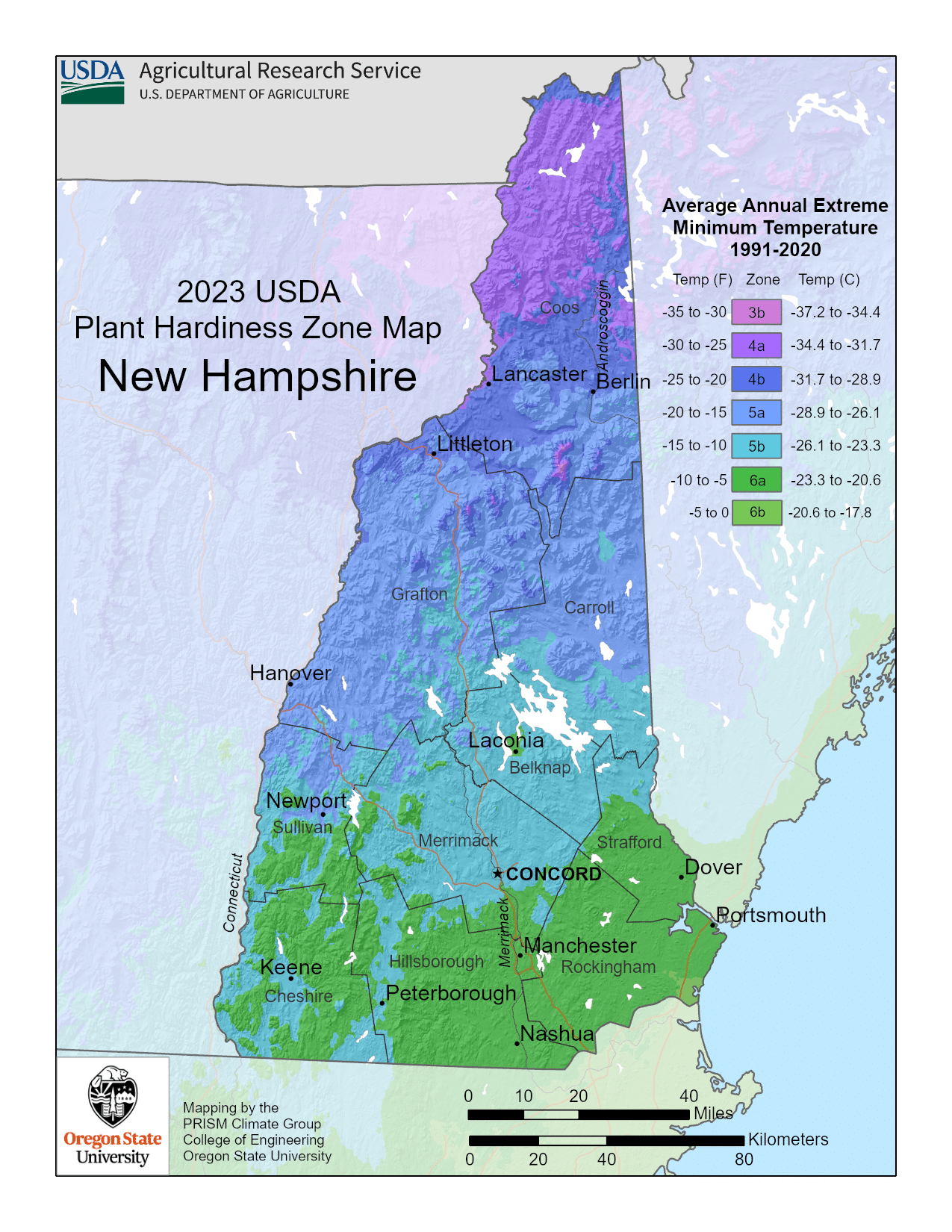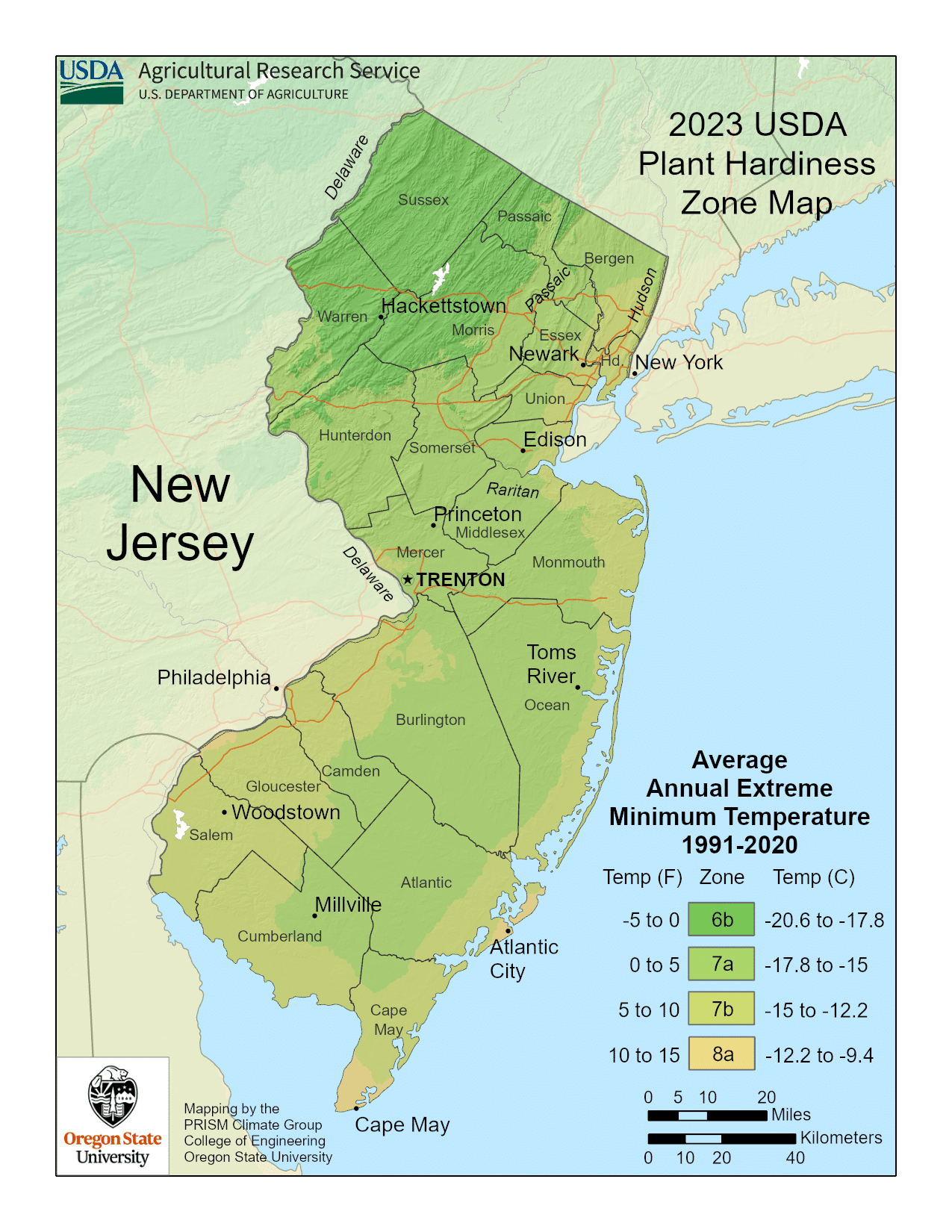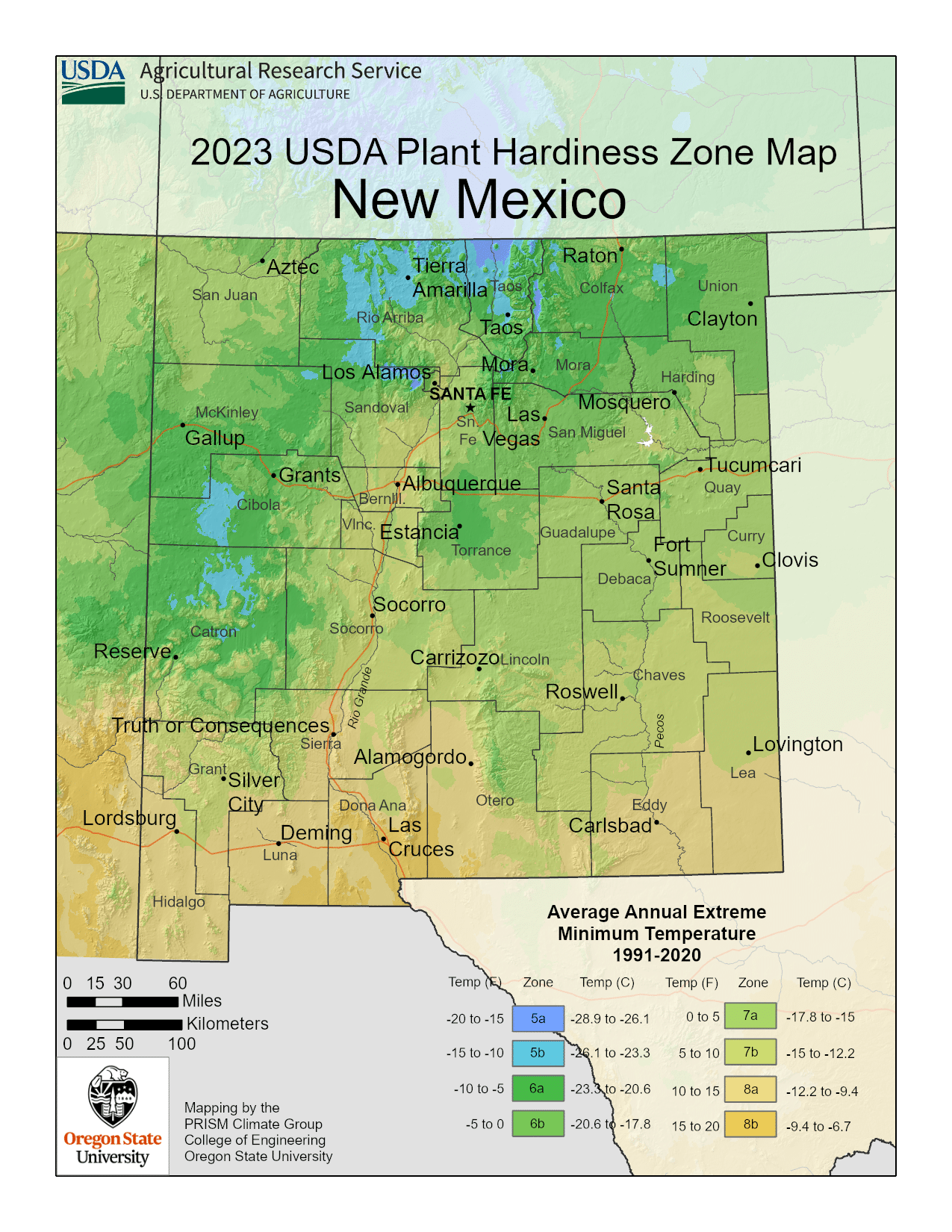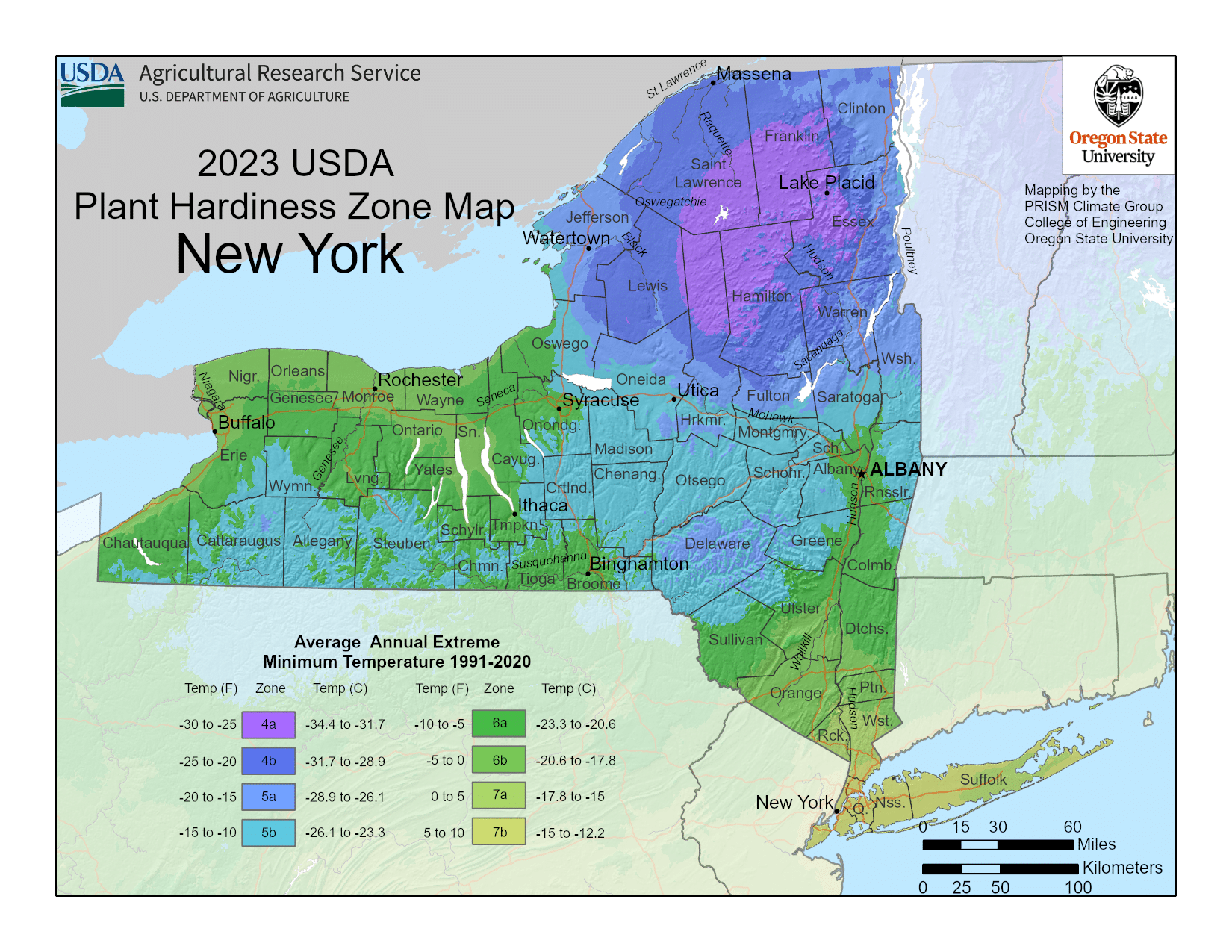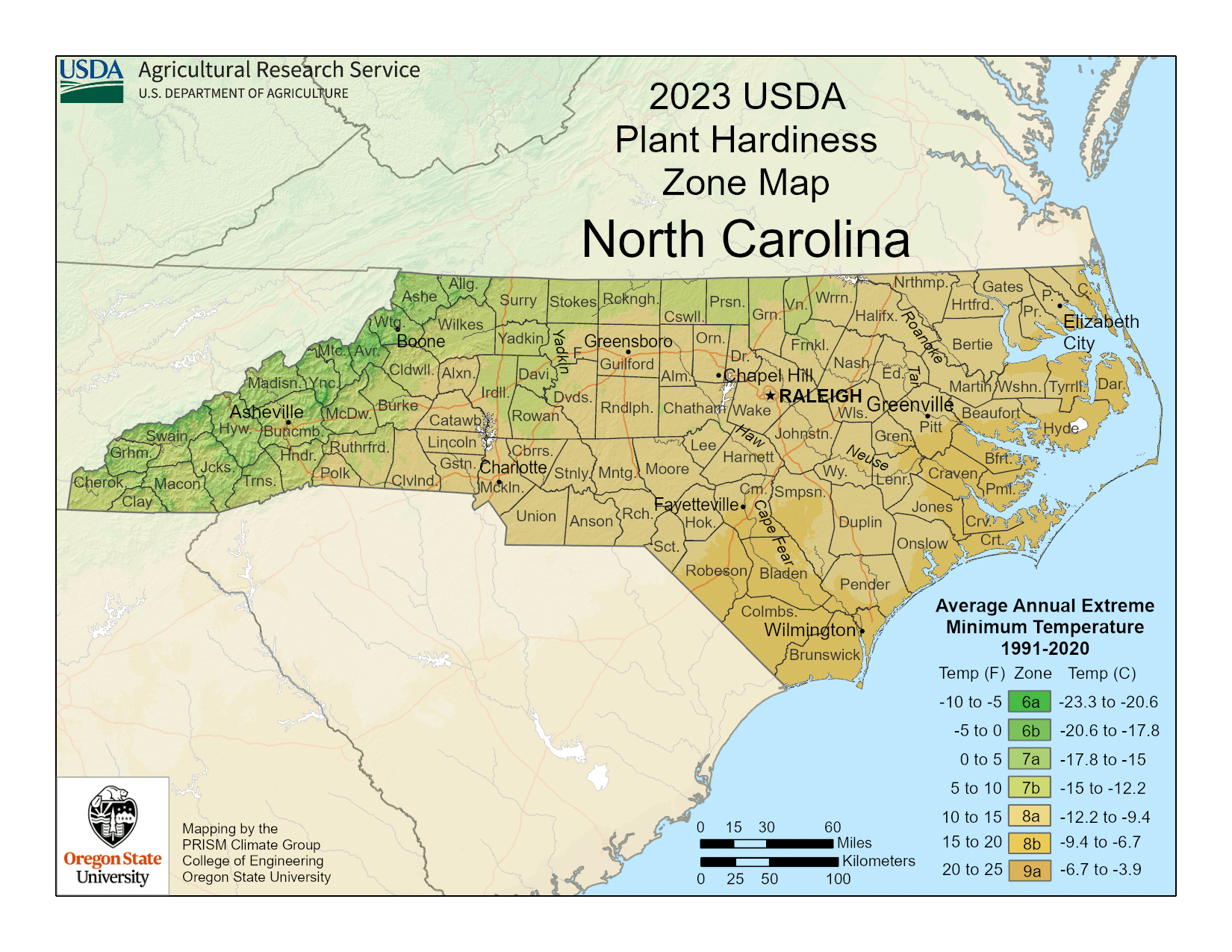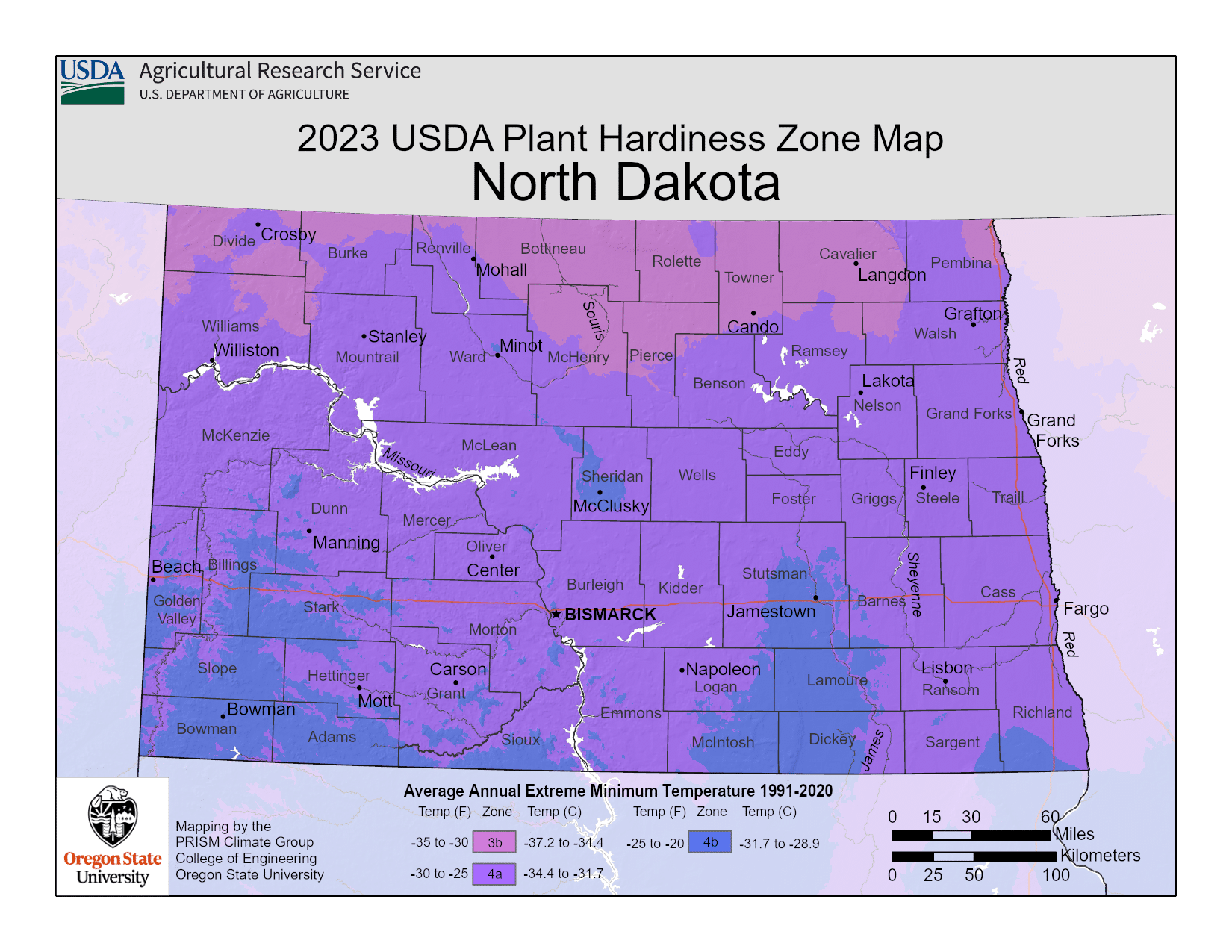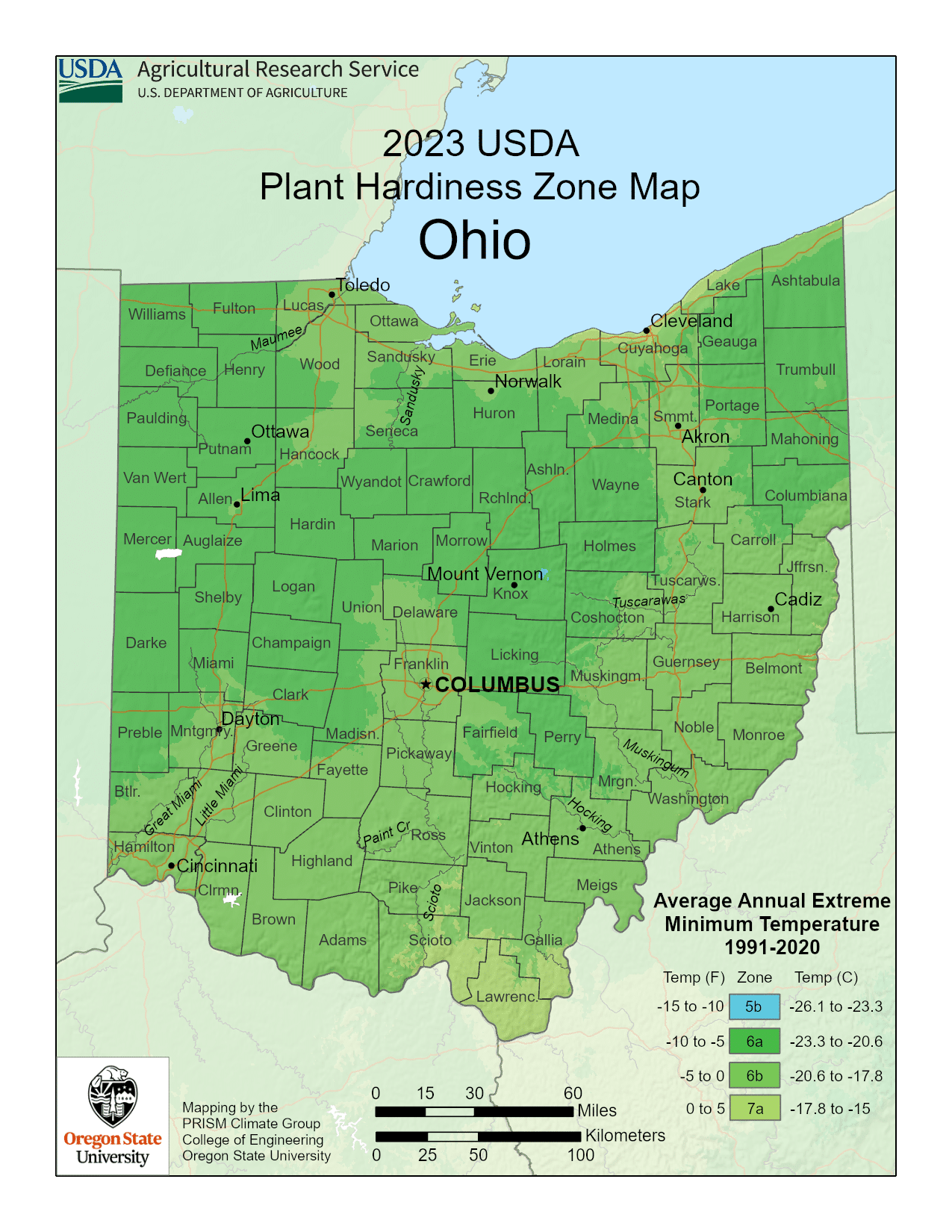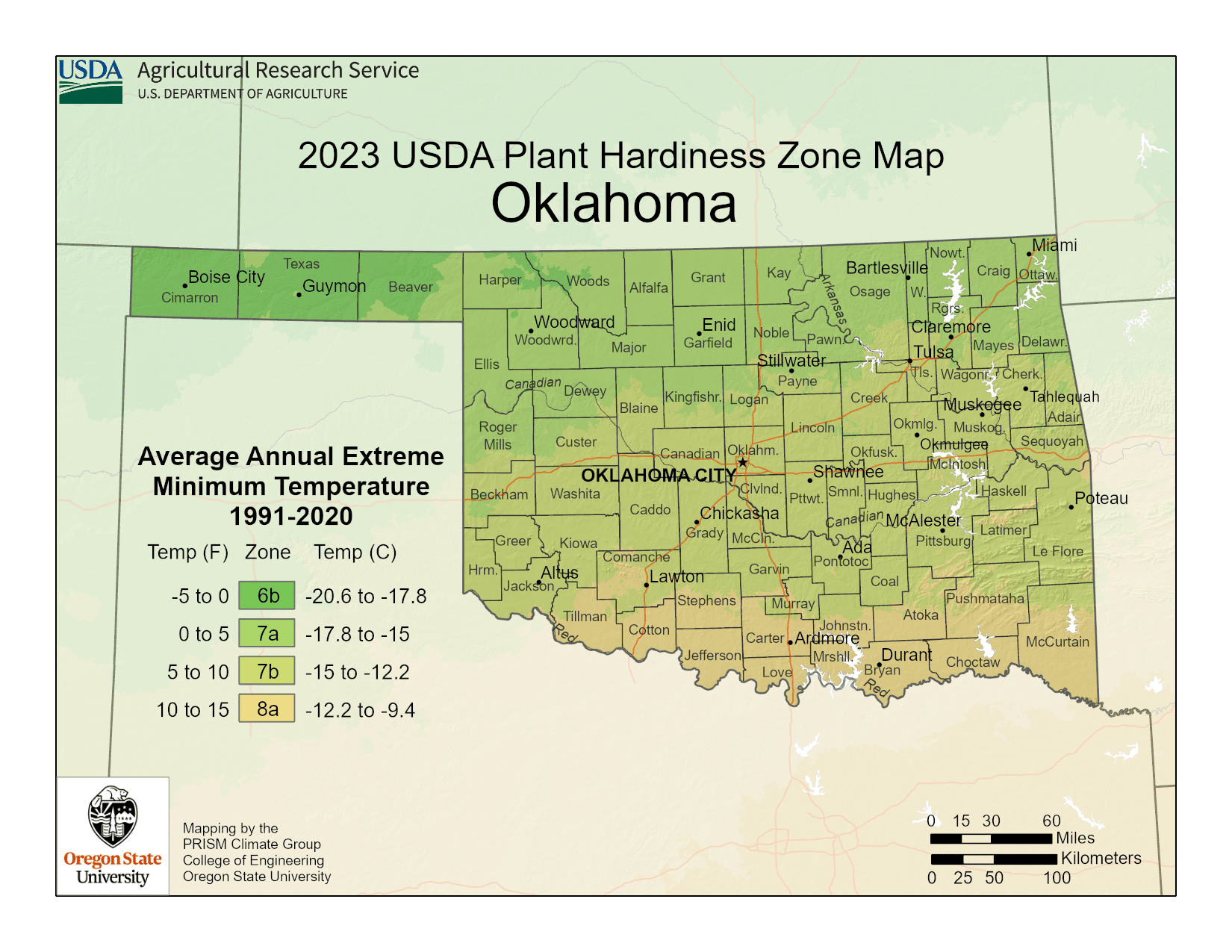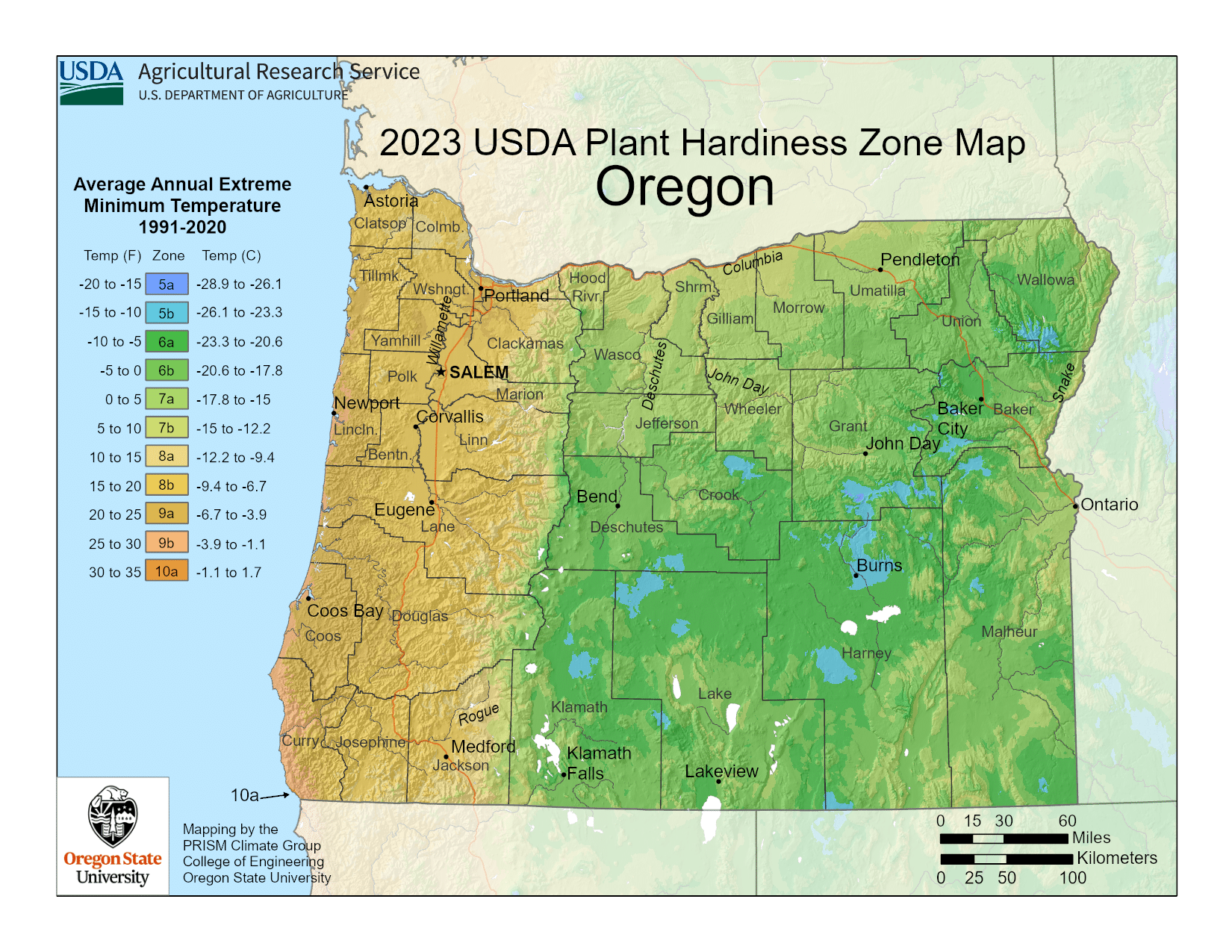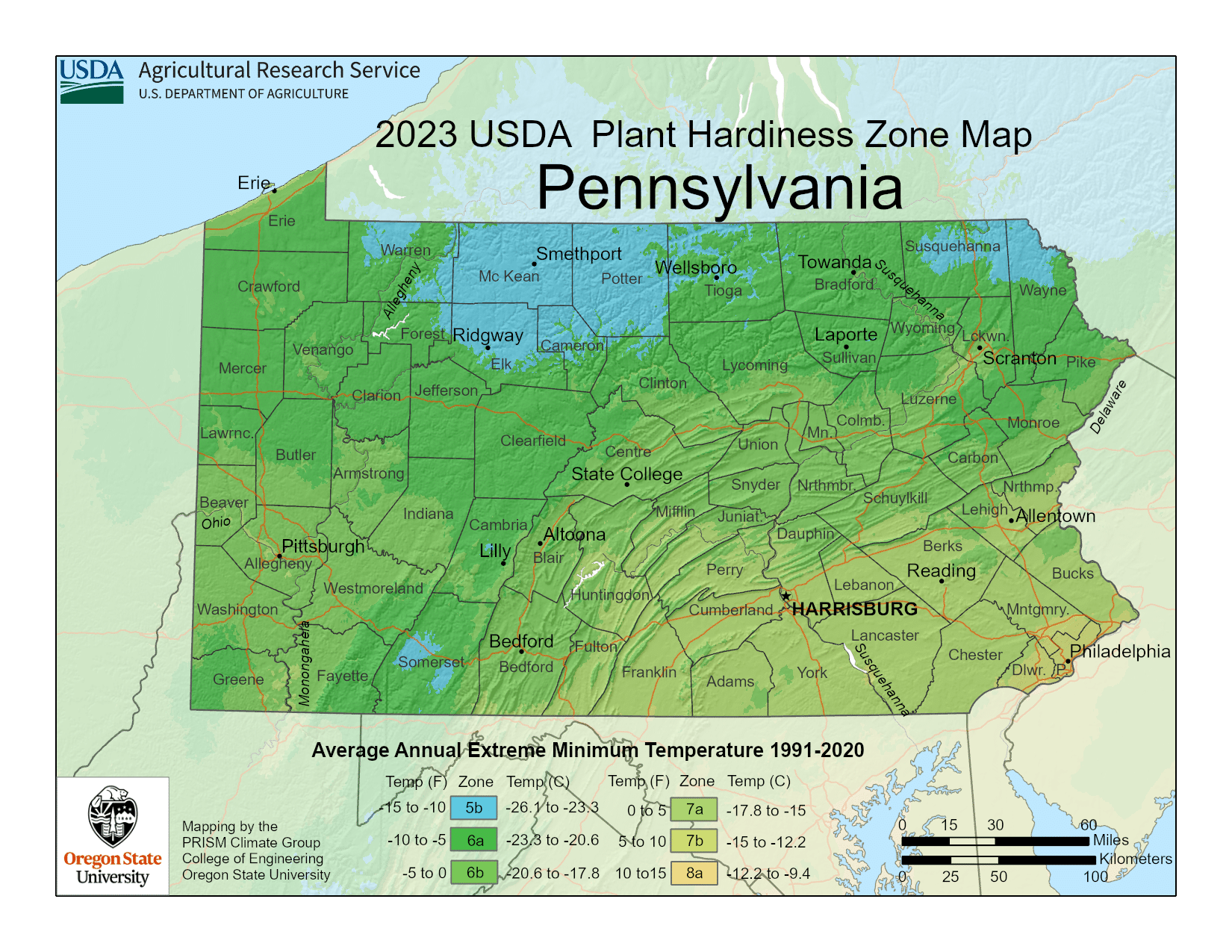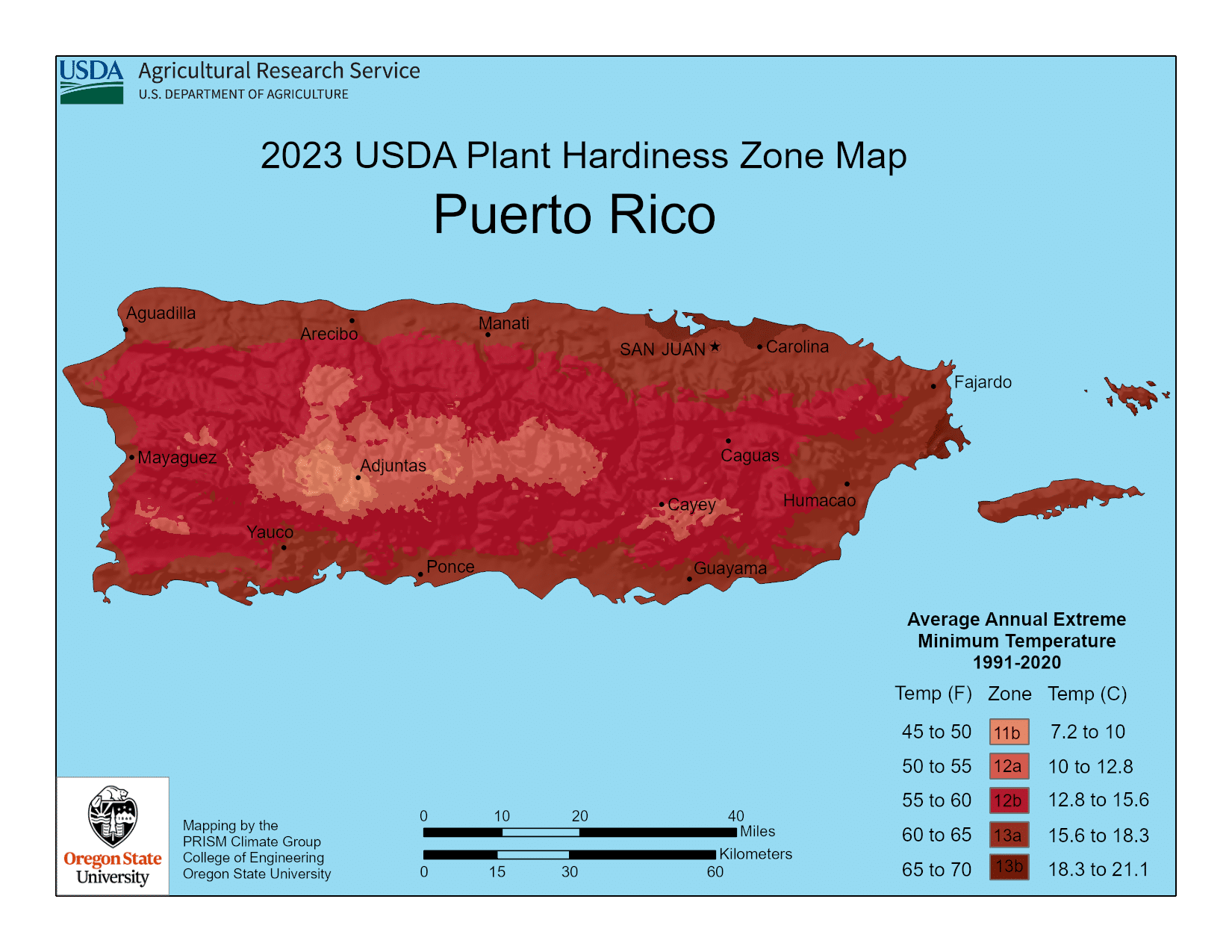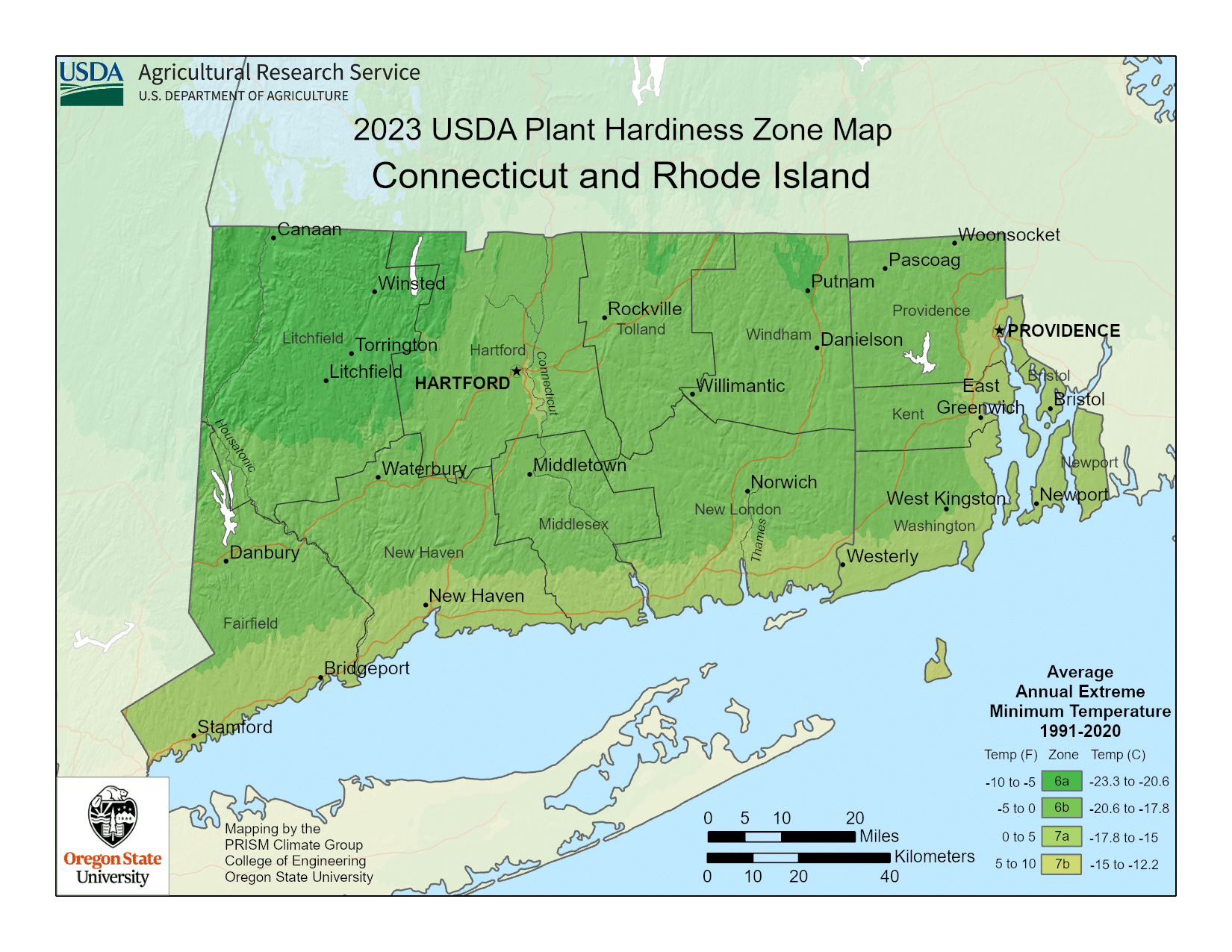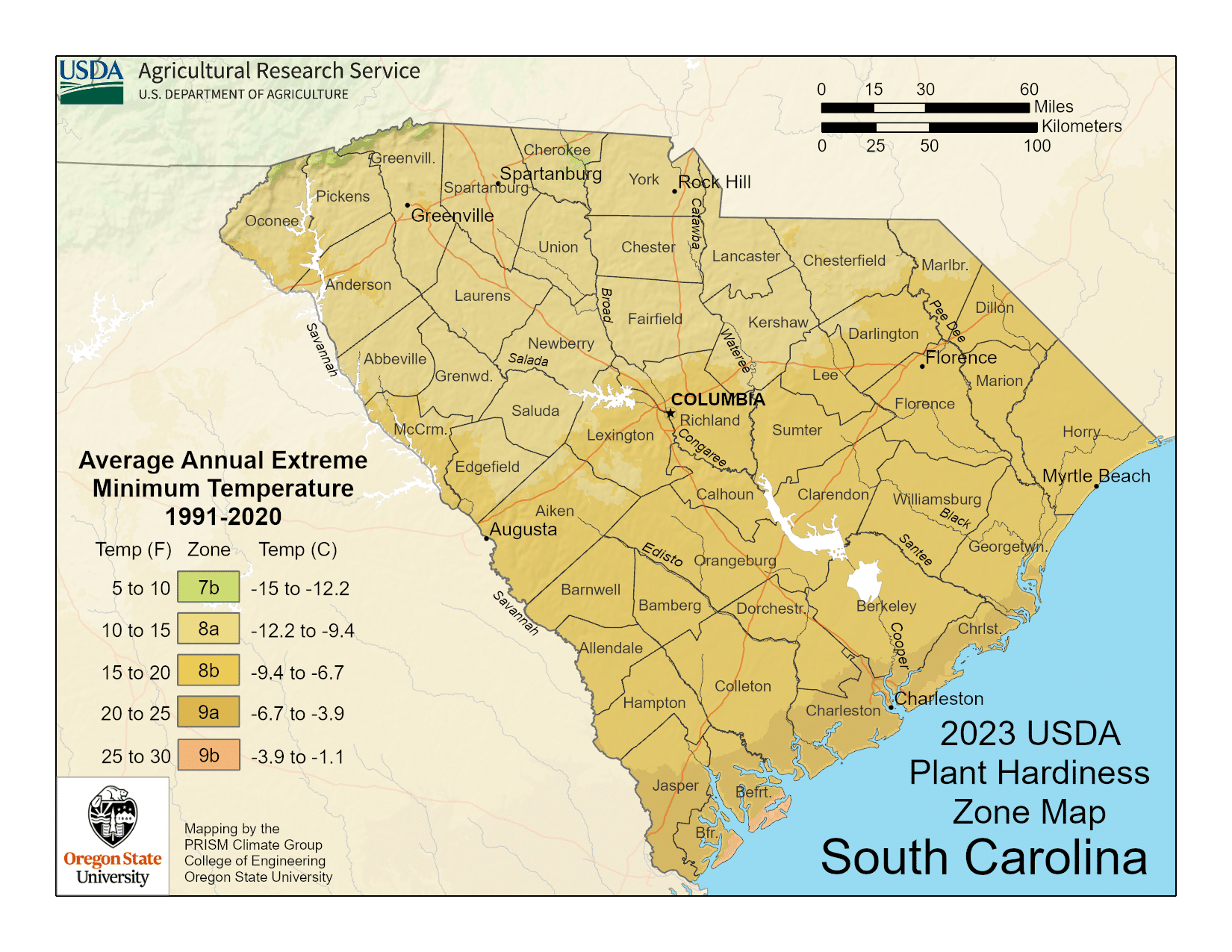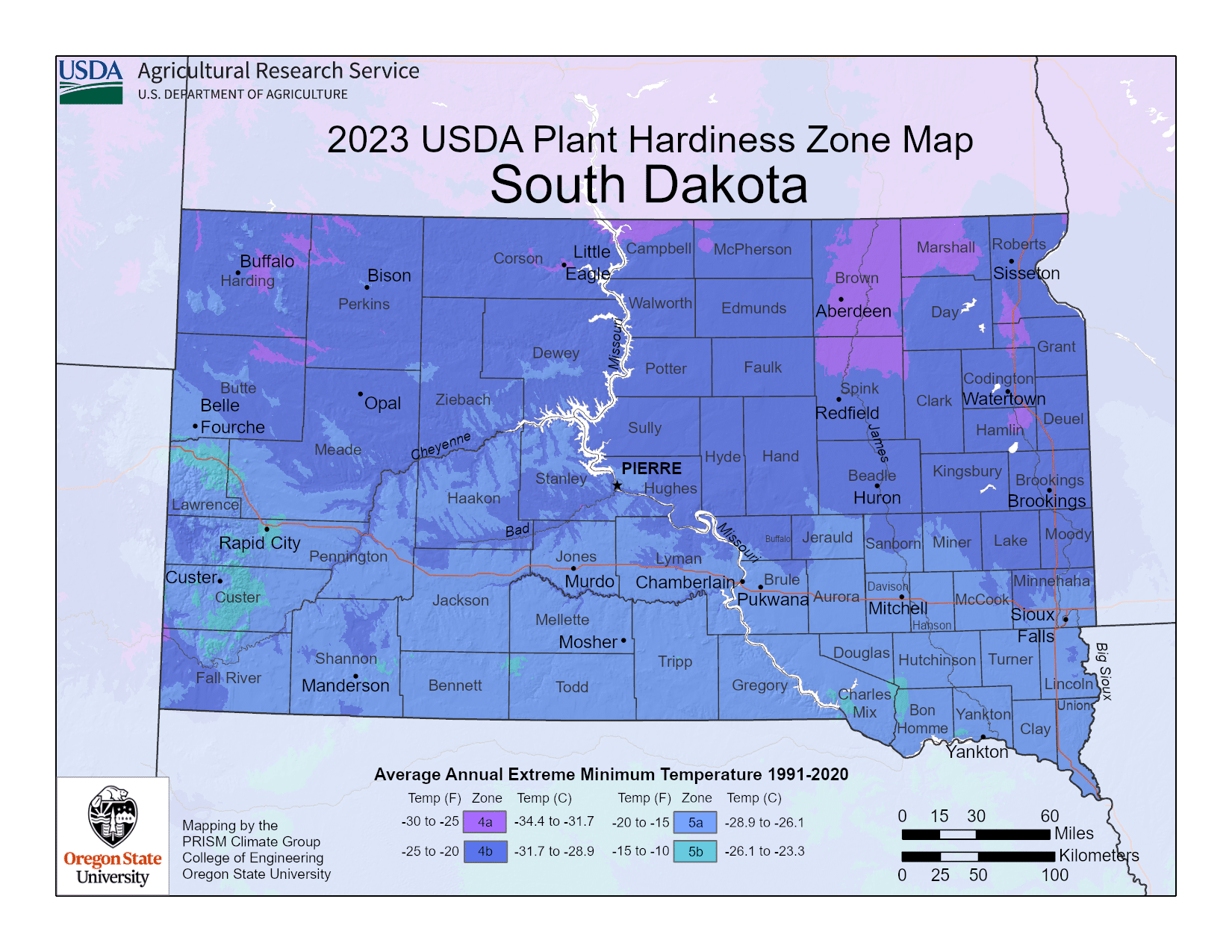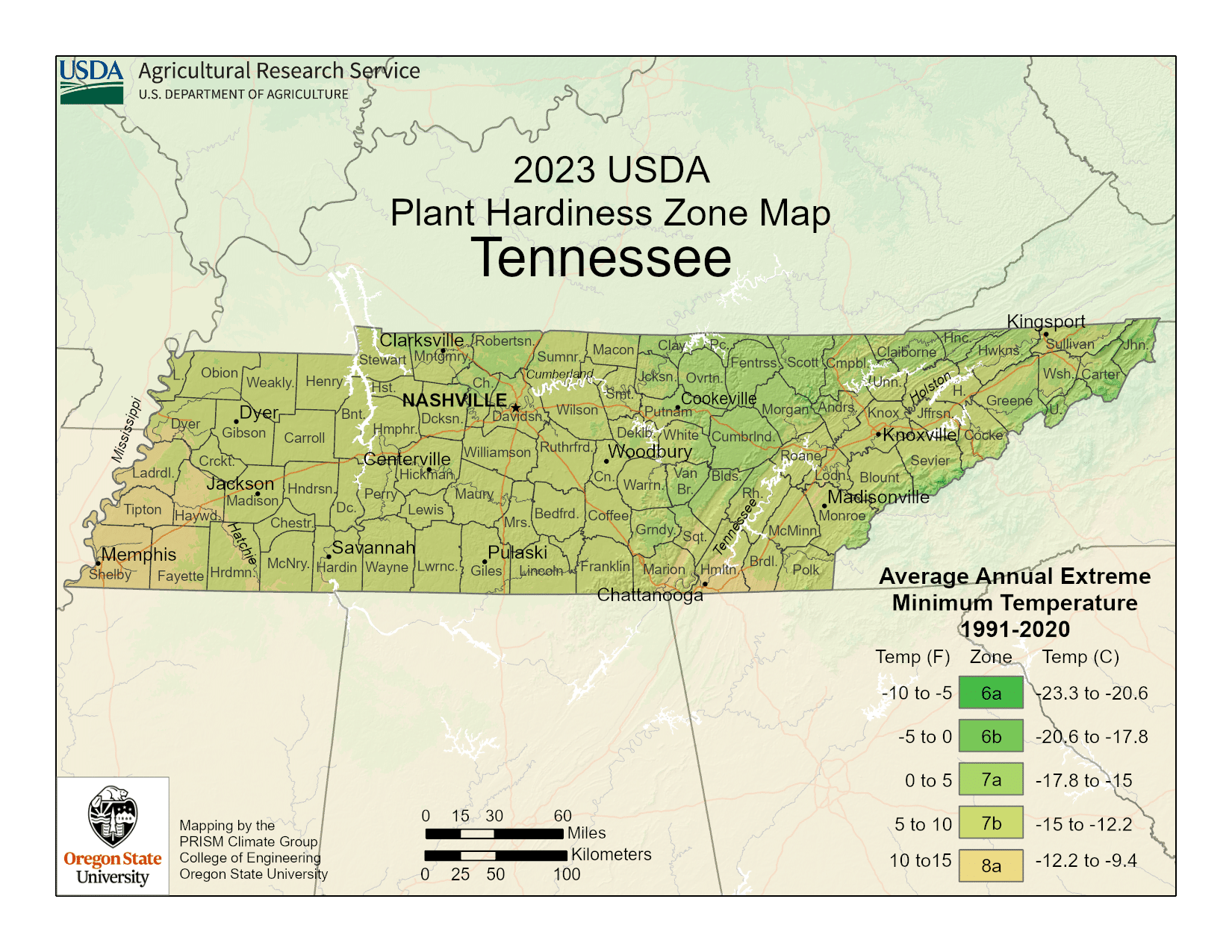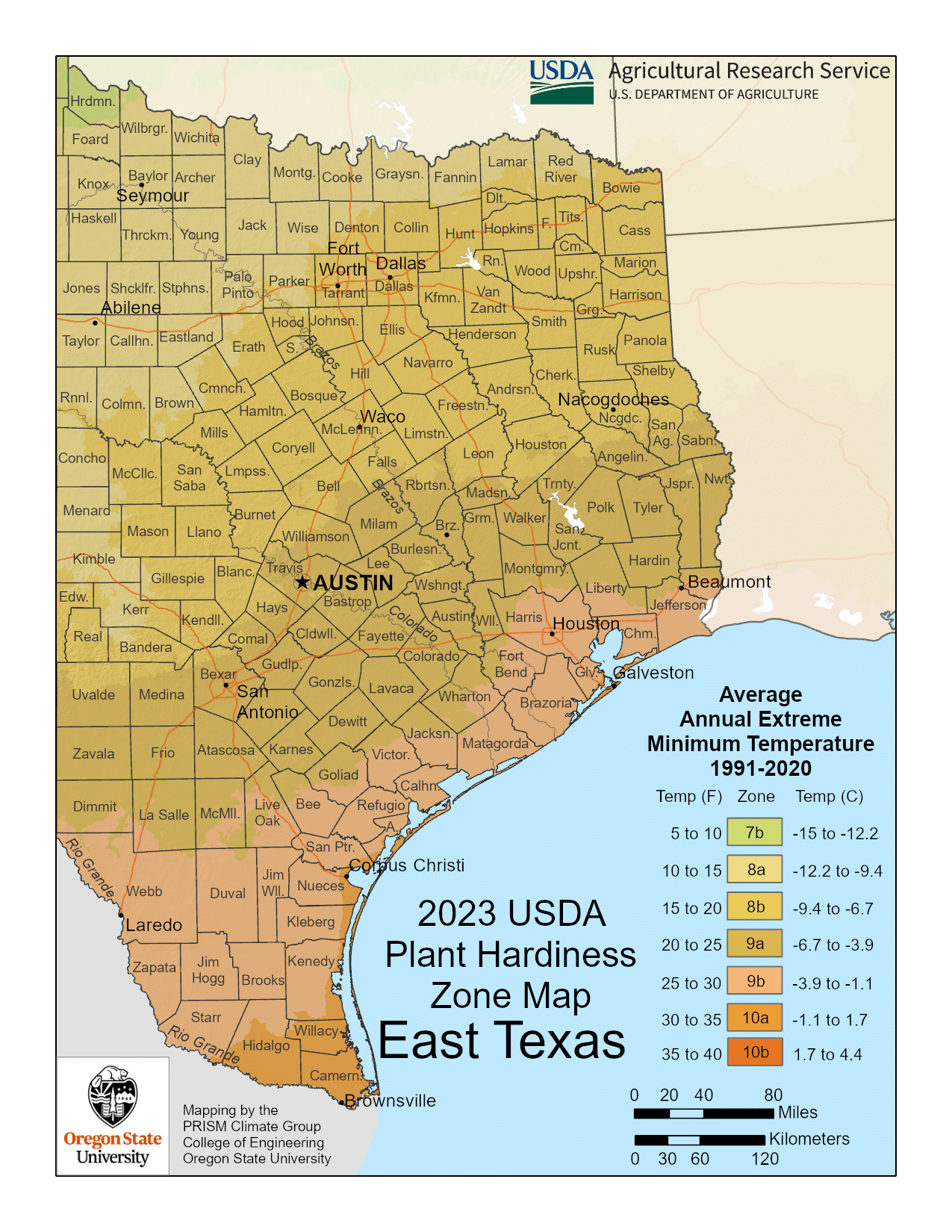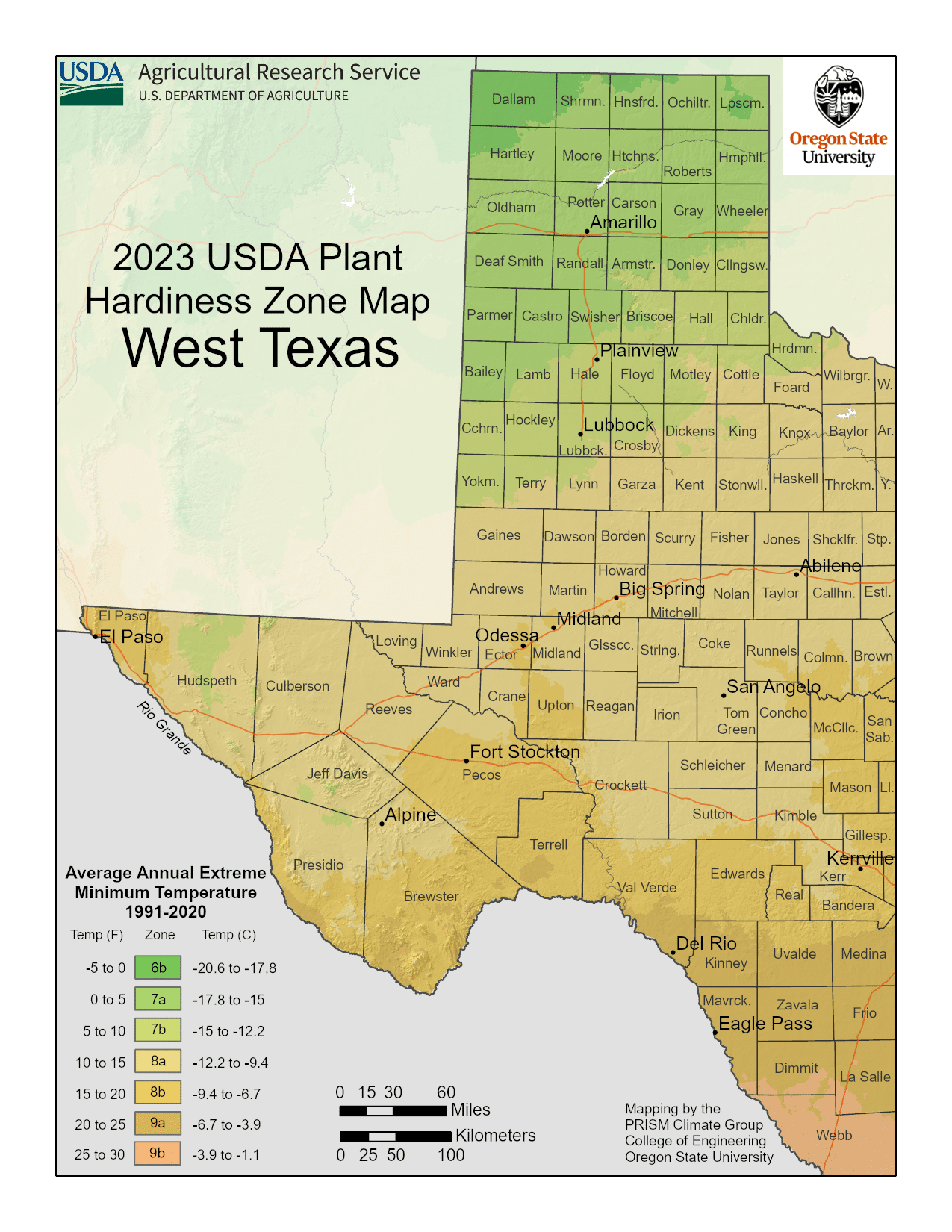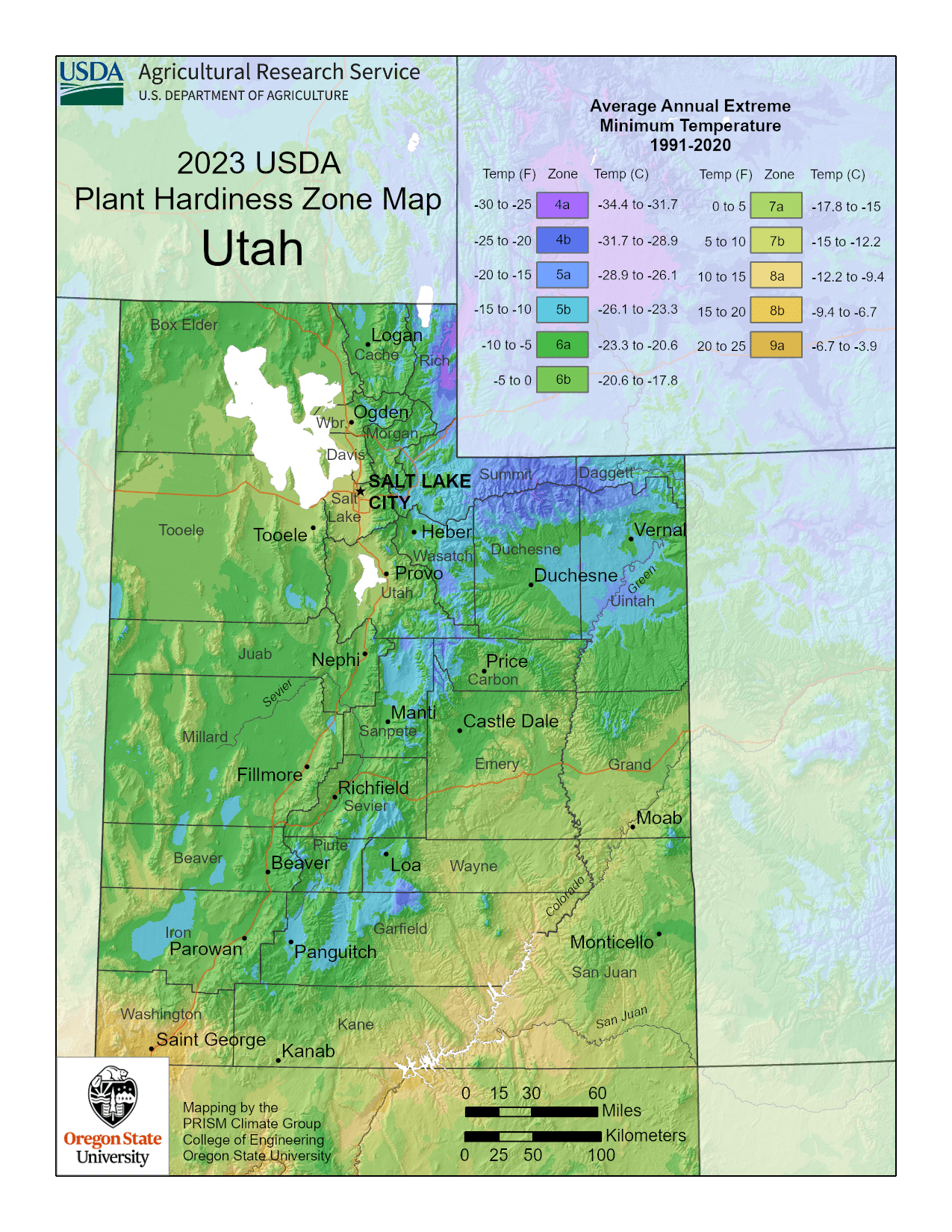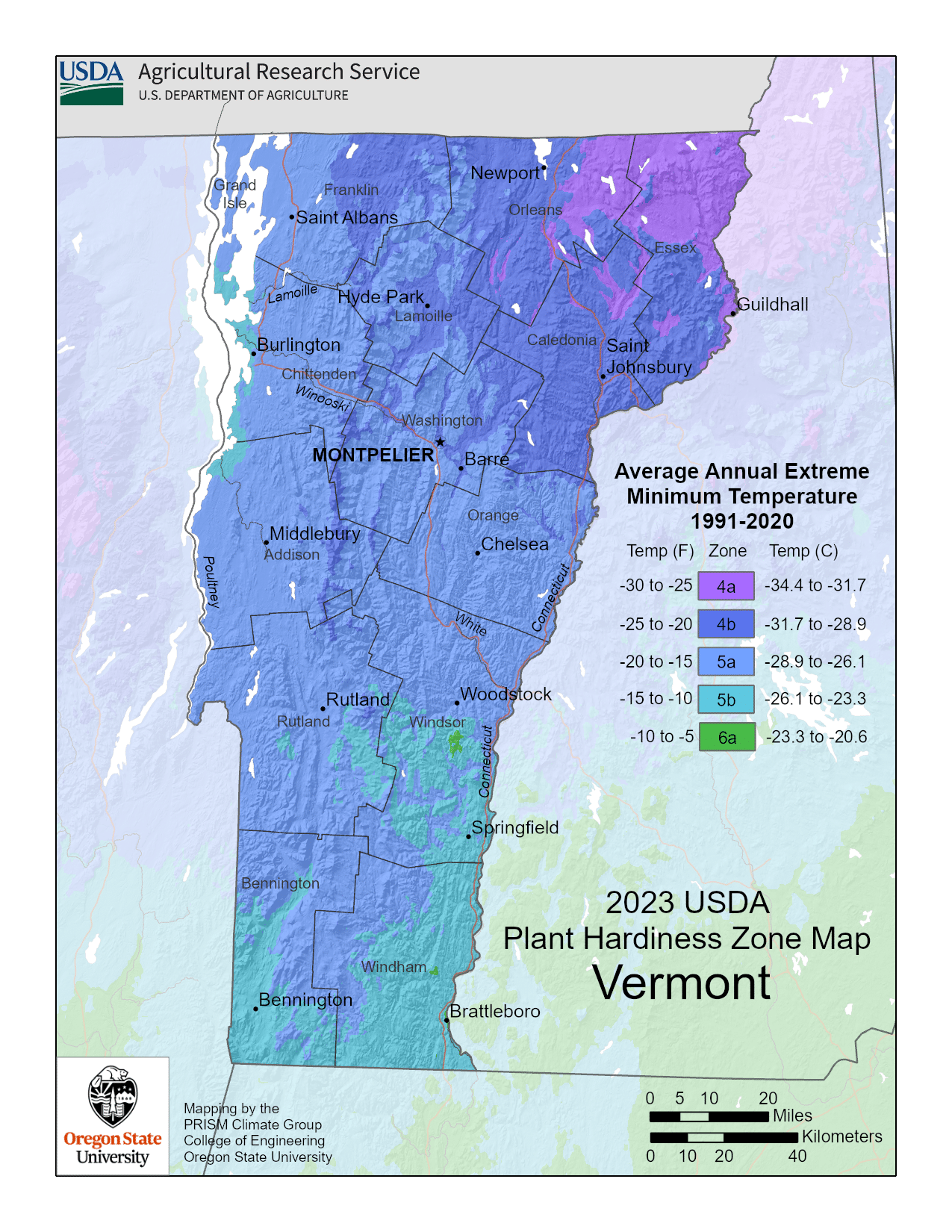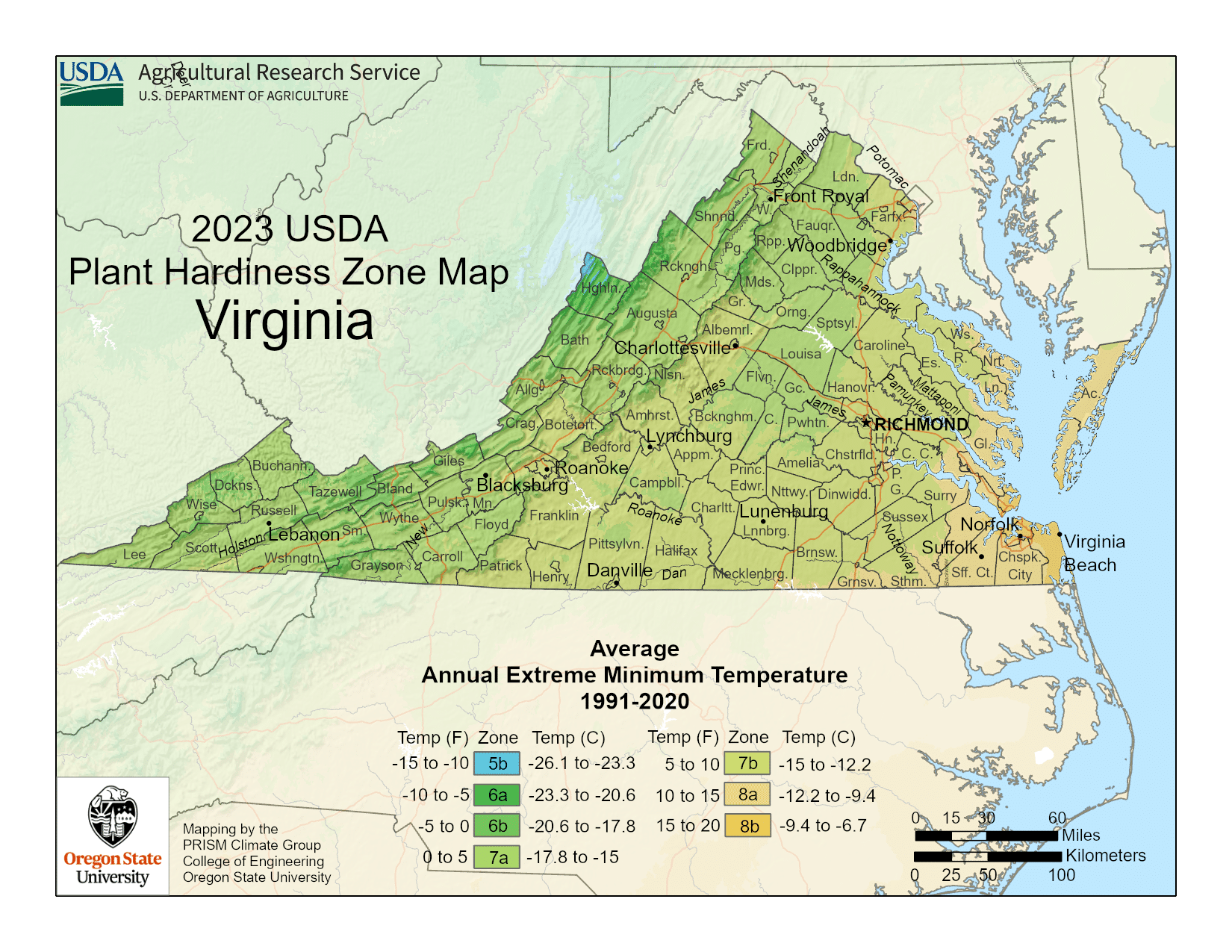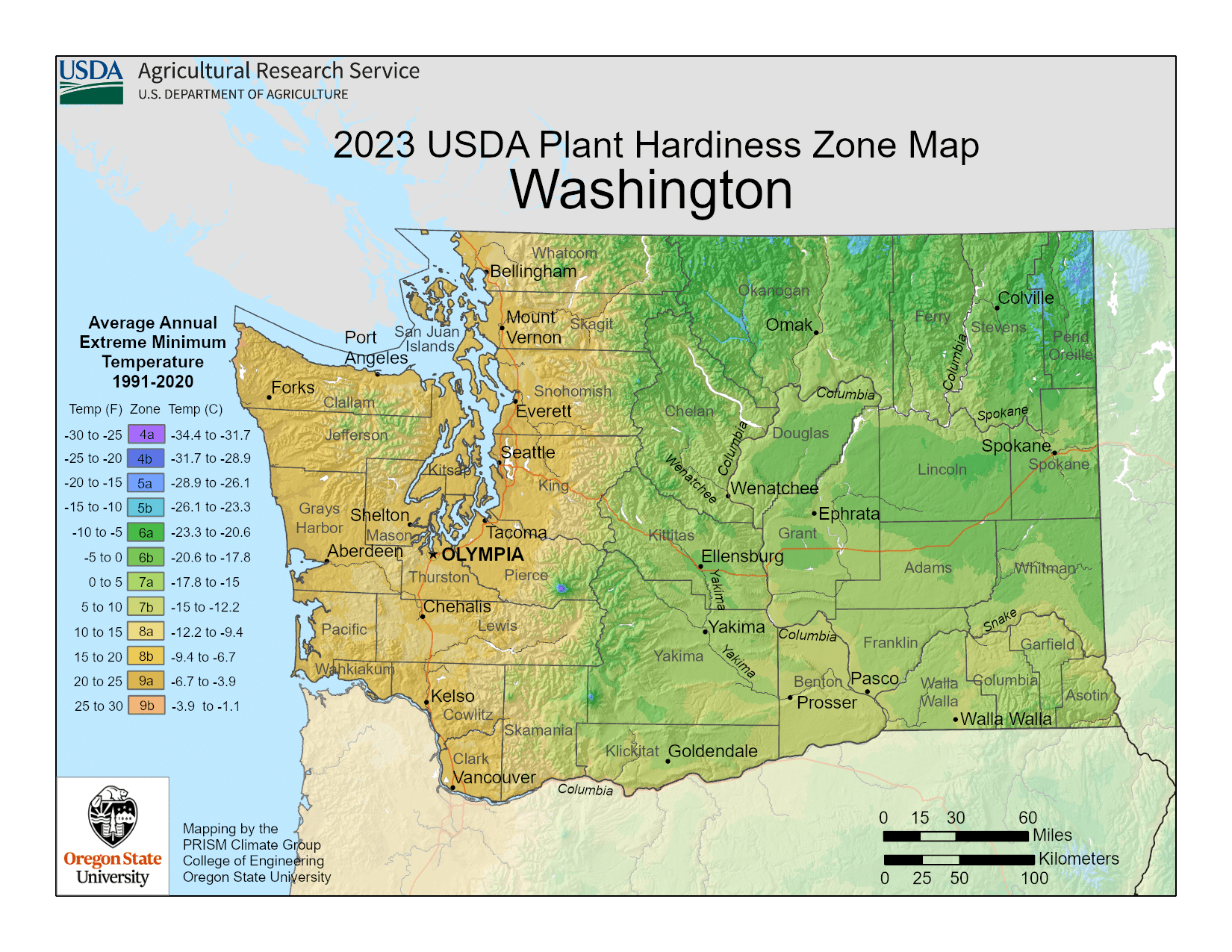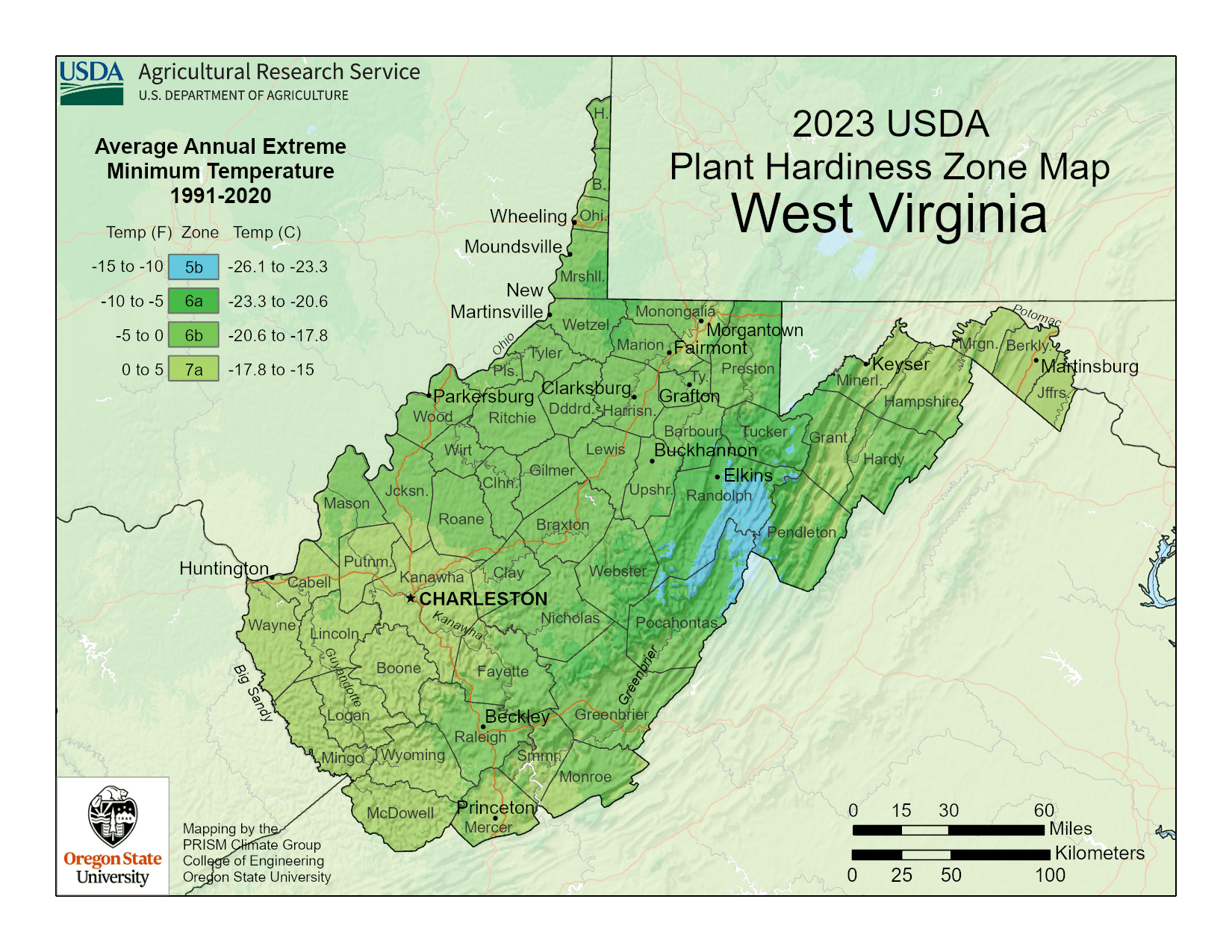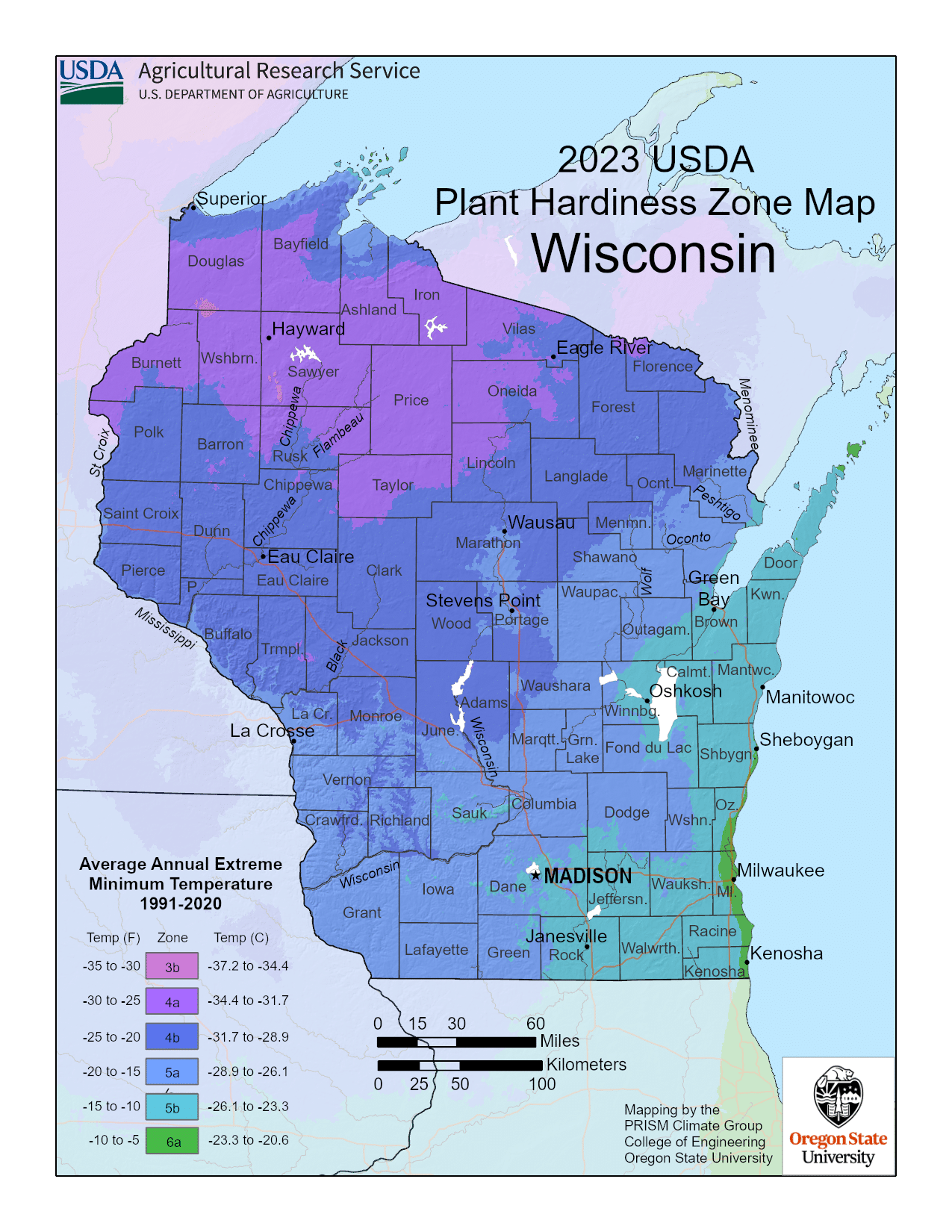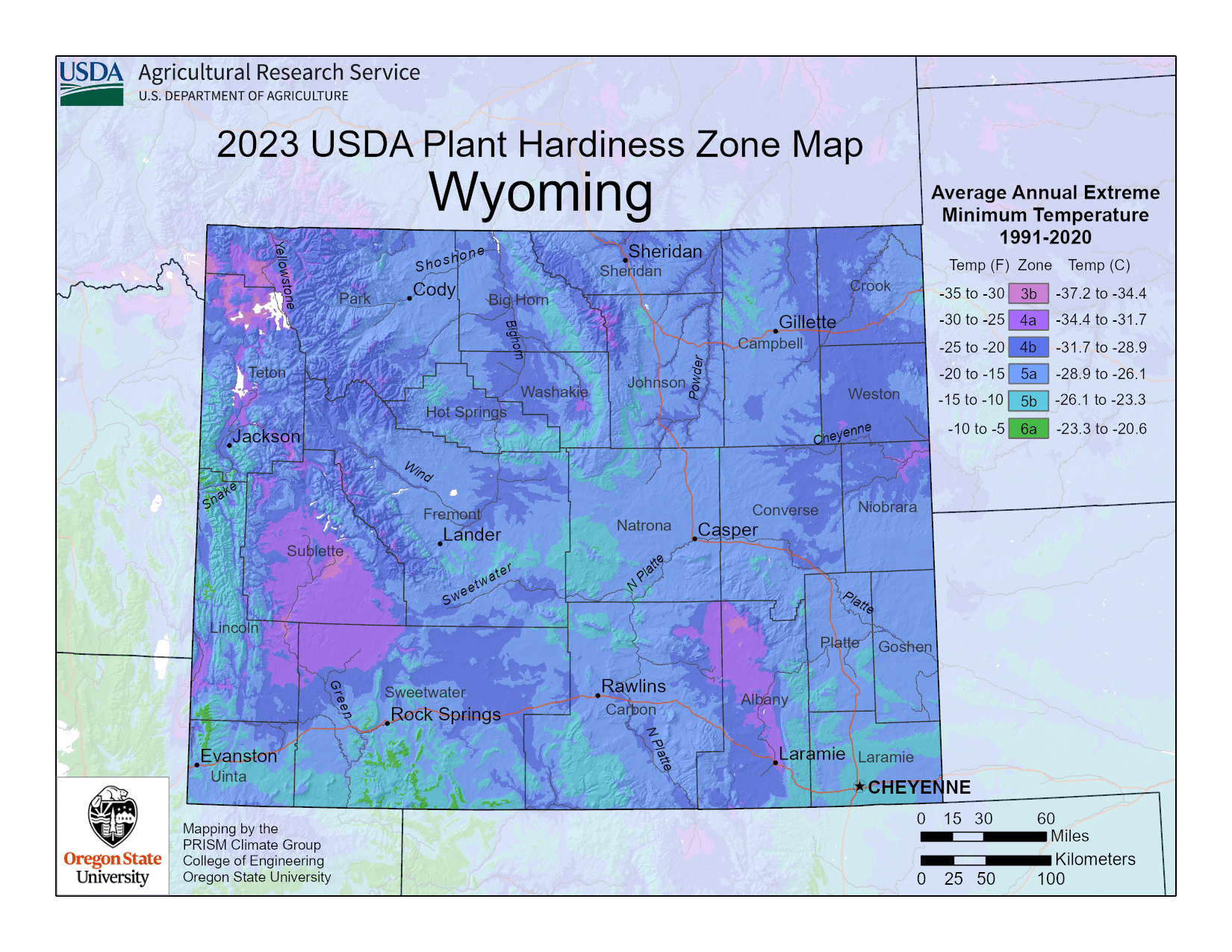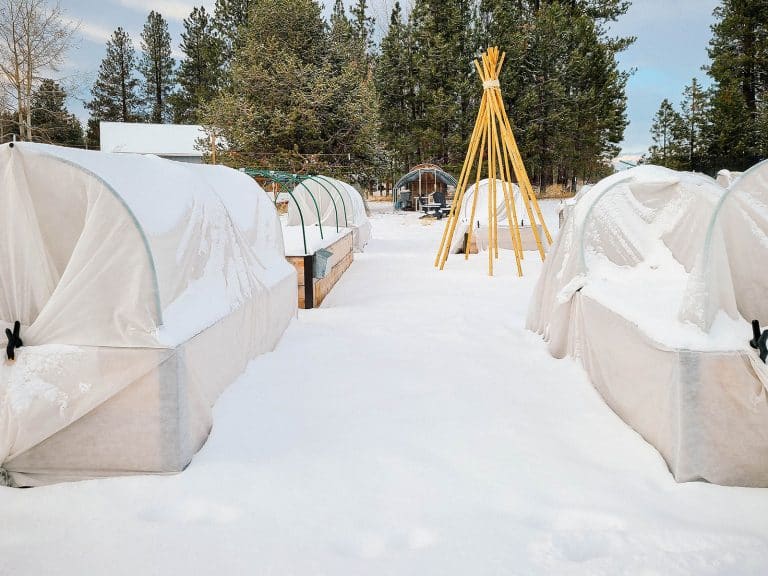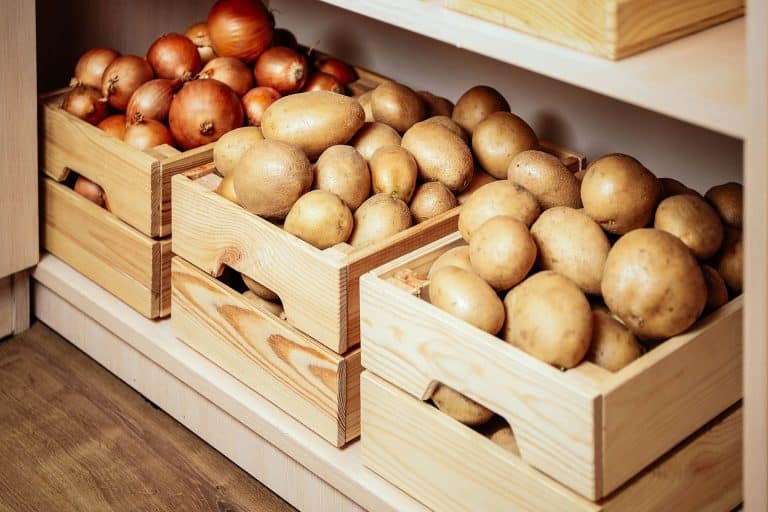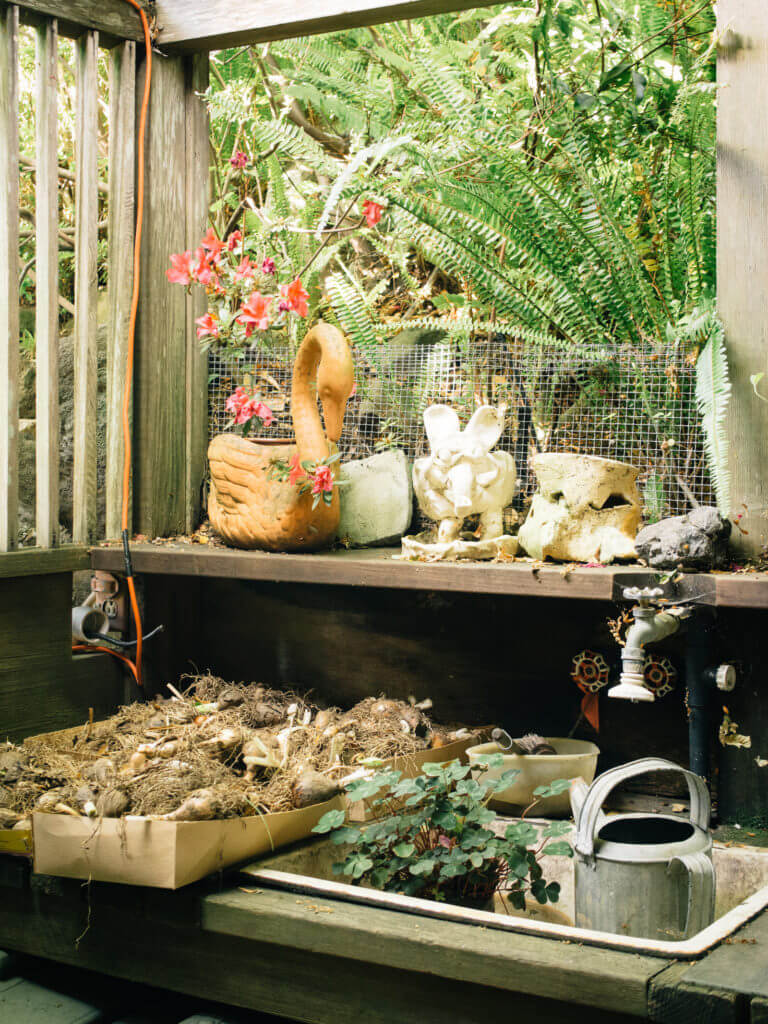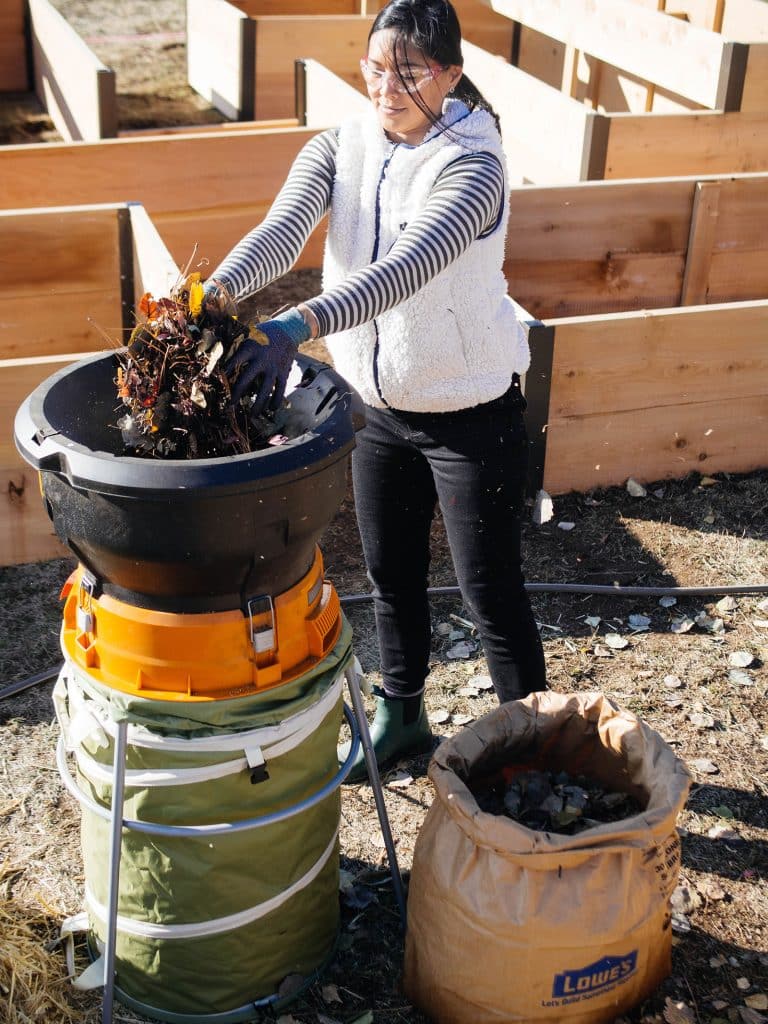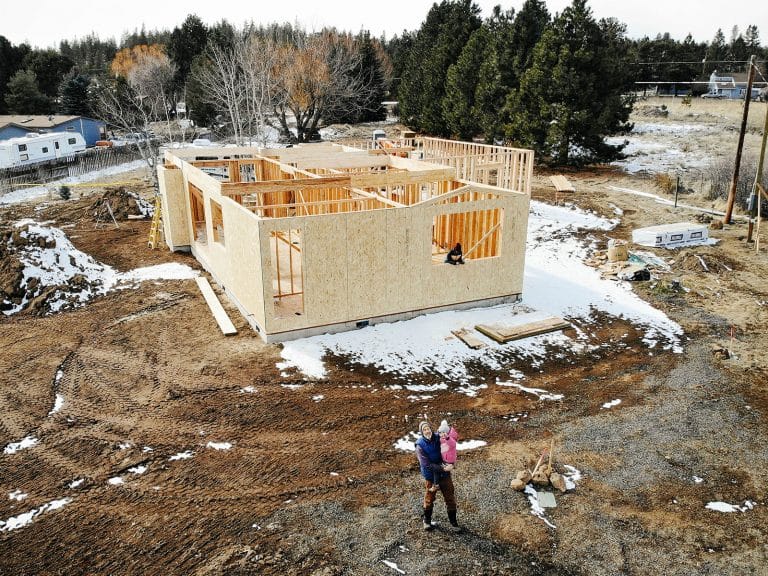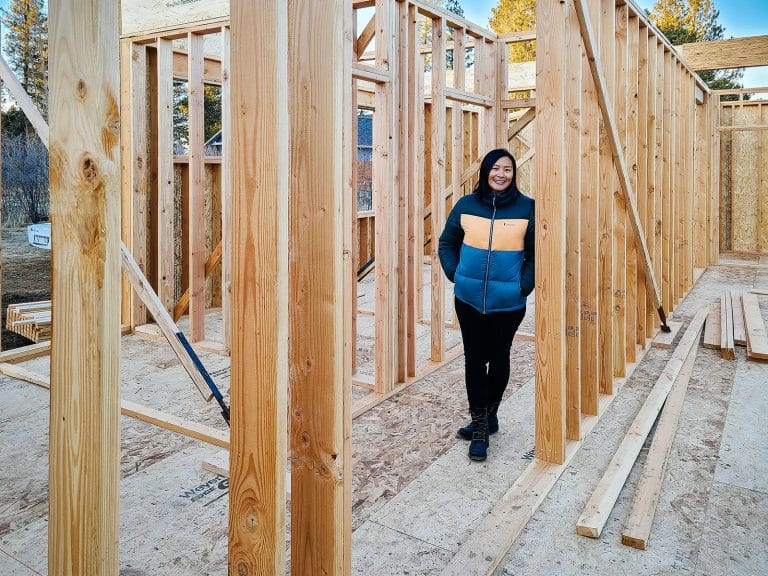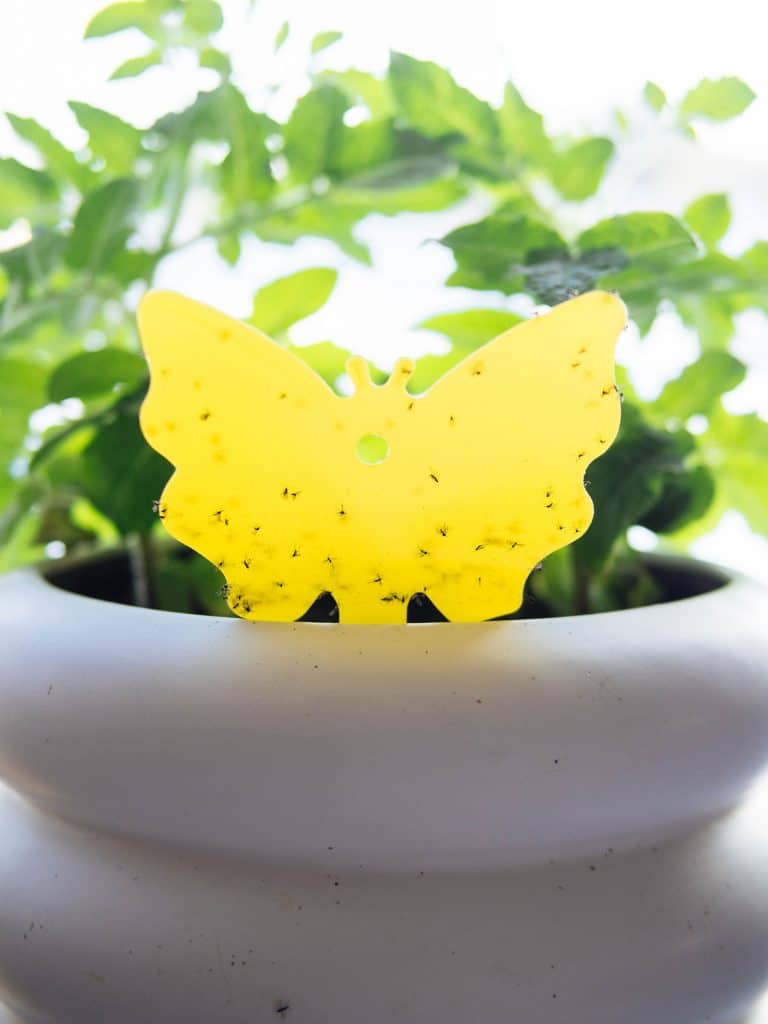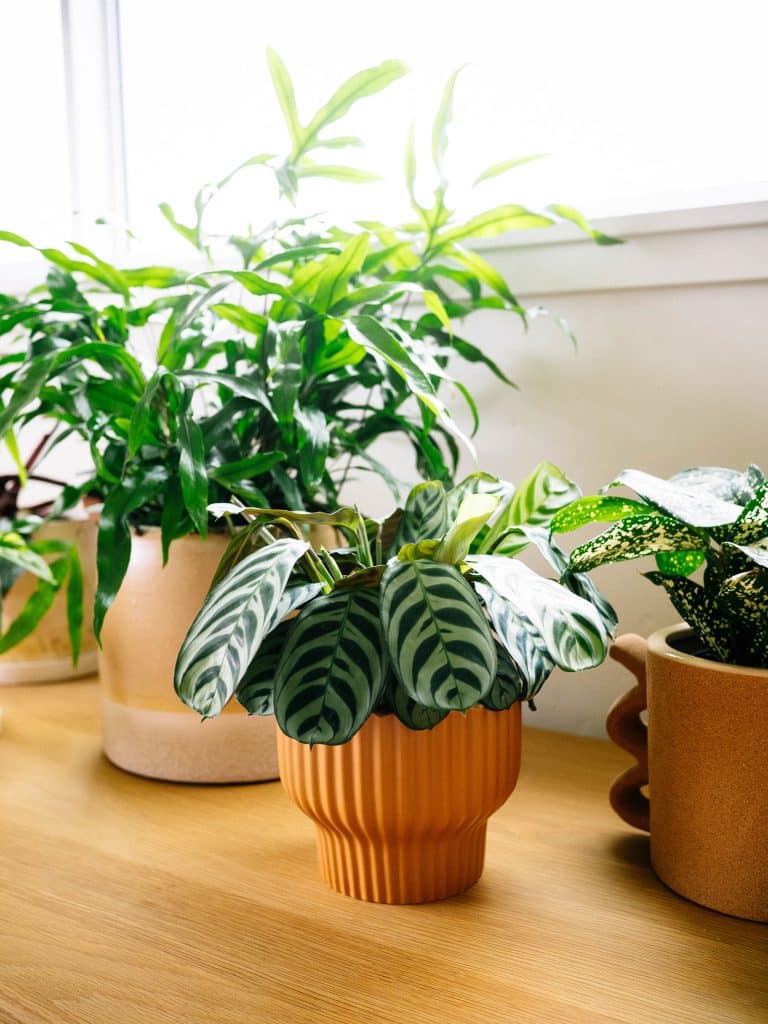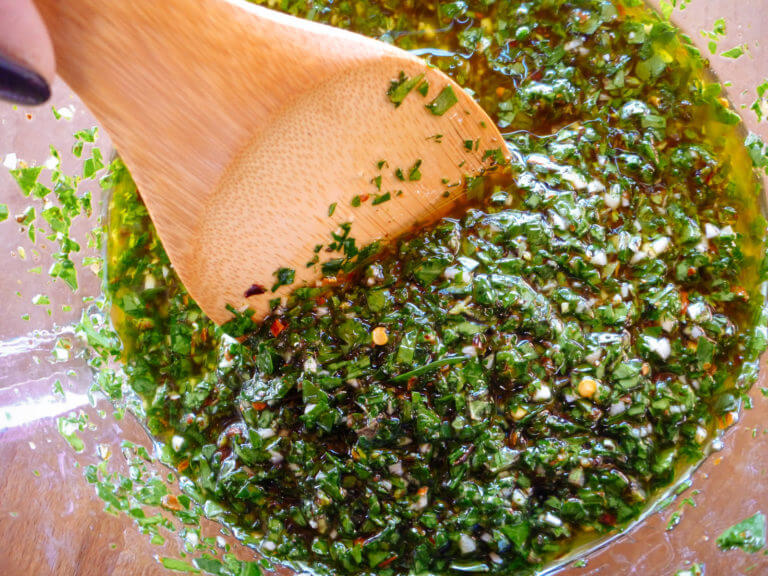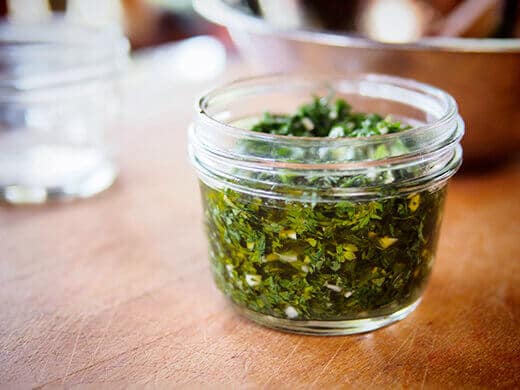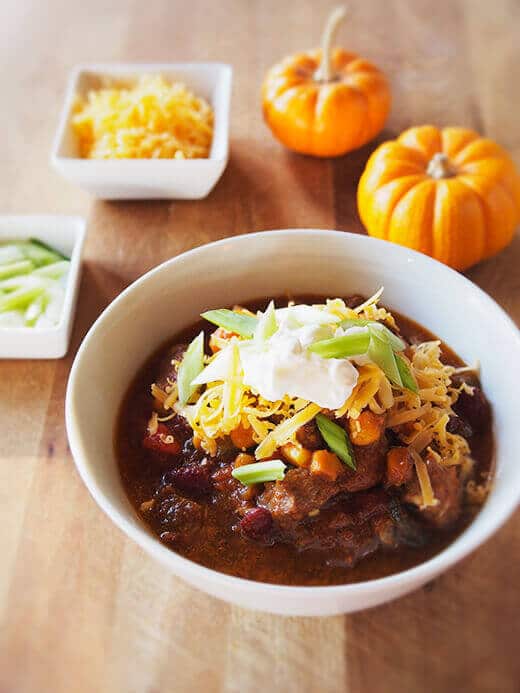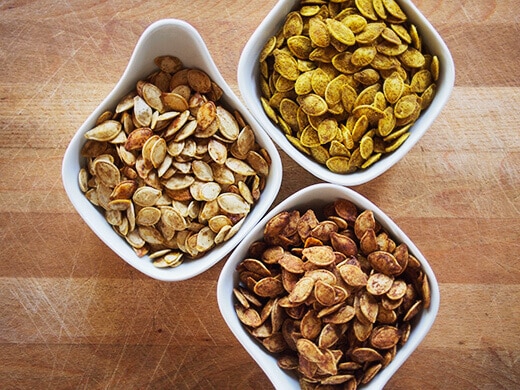Do you know what growing zone you’re in? Or what that even means? Contrary to popular belief, USDA hardiness zones are not a good indicator of what you can or cannot grow. Your zone can tell you one thing only—and knowing what that is will help you choose the right plants for your climate.
Find your USDA zone
Zipcode data is provided by the PRISM Climate Group at Oregon State University. Not every US zipcode is part of this dataset, so if nothing happens when you enter your zipcode, try the next closest zipcode in your town.
Your growing zone tells you one thing
The terms “growing zone,” “USDA zone,” “gardening zone,” and “planting zone” all refer to hardiness ratings from the USDA Plant Hardiness Zone Map (PHZM), which divides North America into 13 growing zones based on their average lowest temperatures in winter.
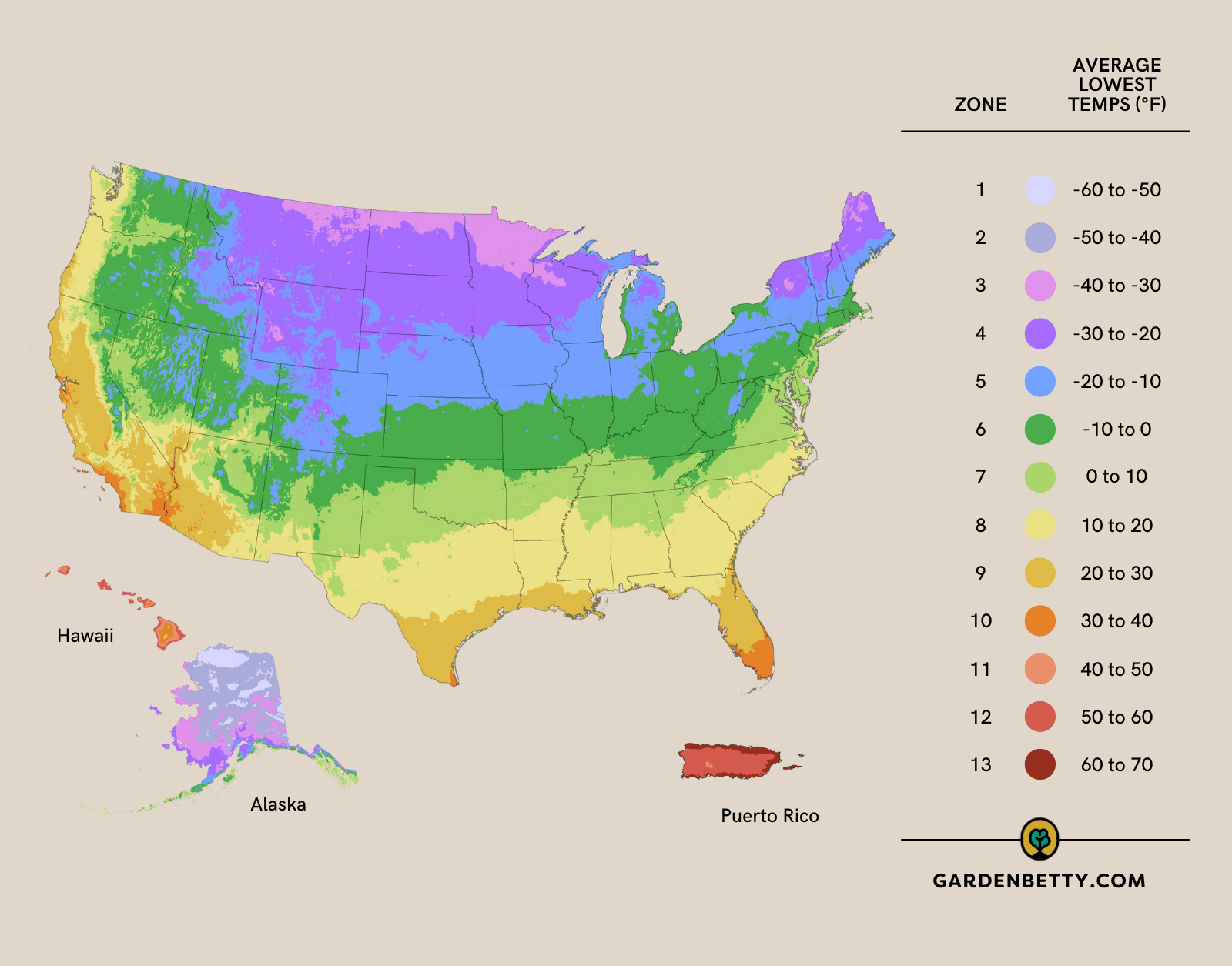
Each zone is 10°F warmer (or colder) than the next zone, and each zone is further divided into “a” and “b” half zones (in 5° increments) to give a more accurate indication of temperature variations.
Plant hardiness zones help farmers, gardeners, and landscapers determine which perennials are likely to thrive in their climate. The lower the number, the greater the cold tolerance.
For example, a plant that’s hardy to zone 6 can handle a winter low of 0°F to -10°F, while a zone 5 plant is adapted to withstand temperatures of -10°F to -20°F. If we drill down even more, plants in zone 6a should tolerate lows of -5°F to -10°F, while plants in zone 6b should tolerate 0°F to 5°F.
Zones 10 and above include tropical and subtropical climates such as Southern California, South Florida, Hawaii, Puerto Rico, and parts of Texas and Arizona, which rarely or never see a freeze.
Here’s the complete temperature range for each hardiness zone, according to the PHZM:
| Zone | Temp (°F) | Zone | Temp (°F) |
|---|---|---|---|
| 1a | -60 to -55 | 8a | 10 to 15 |
| 1b | -55 to -50 | 8b | 15 to 20 |
| 2a | -50 to -45 | 9a | 20 to 25 |
| 2b | -45 to -40 | 9b | 25 to 30 |
| 3a | -40 to -35 | 10a | 30 to 35 |
| 3b | -35 to -30 | 10b | 35 to 40 |
| 4a | -30 to -25 | 11a | 40 to 45 |
| 4b | -25 to -20 | 11b | 45 to 50 |
| 5a | -20 to -15 | 12a | 50 to 55 |
| 5b | -15 to -10 | 12b | 55 to 60 |
| 6a | -10 to -5 | 13a | 60 to 65 |
| 6b | -5 to 0 | 13b | 65 to 70 |
| 7a | 0 to 5 | ||
| 7b | 5 to 10 |
Your growing zone tells you what will survive winter in your area. Let’s say you want to add some perennial herbs to your garden.
You pick up a rosemary and see that it’s hardy to zones 8 and 9. If you live in zone 7, it’s unlikely to make it through a typical winter unless you pot it up and overwinter it indoors. You need to choose a hardier variety (like Arp rosemary) or a hardier herb (like thyme), or treat the rosemary as an annual herb.
When shopping for plants, you might come across labels with a wide range of hardiness zones, such as zones 3 to 8. That means the plant will do well in all those zones, but will struggle in warmer climates. An example would be many popular fall-planted flower bulbs (like daffodils and tulips), which need cold temperatures to stimulate blooming in spring.
That’s really all your growing zone can tell you.
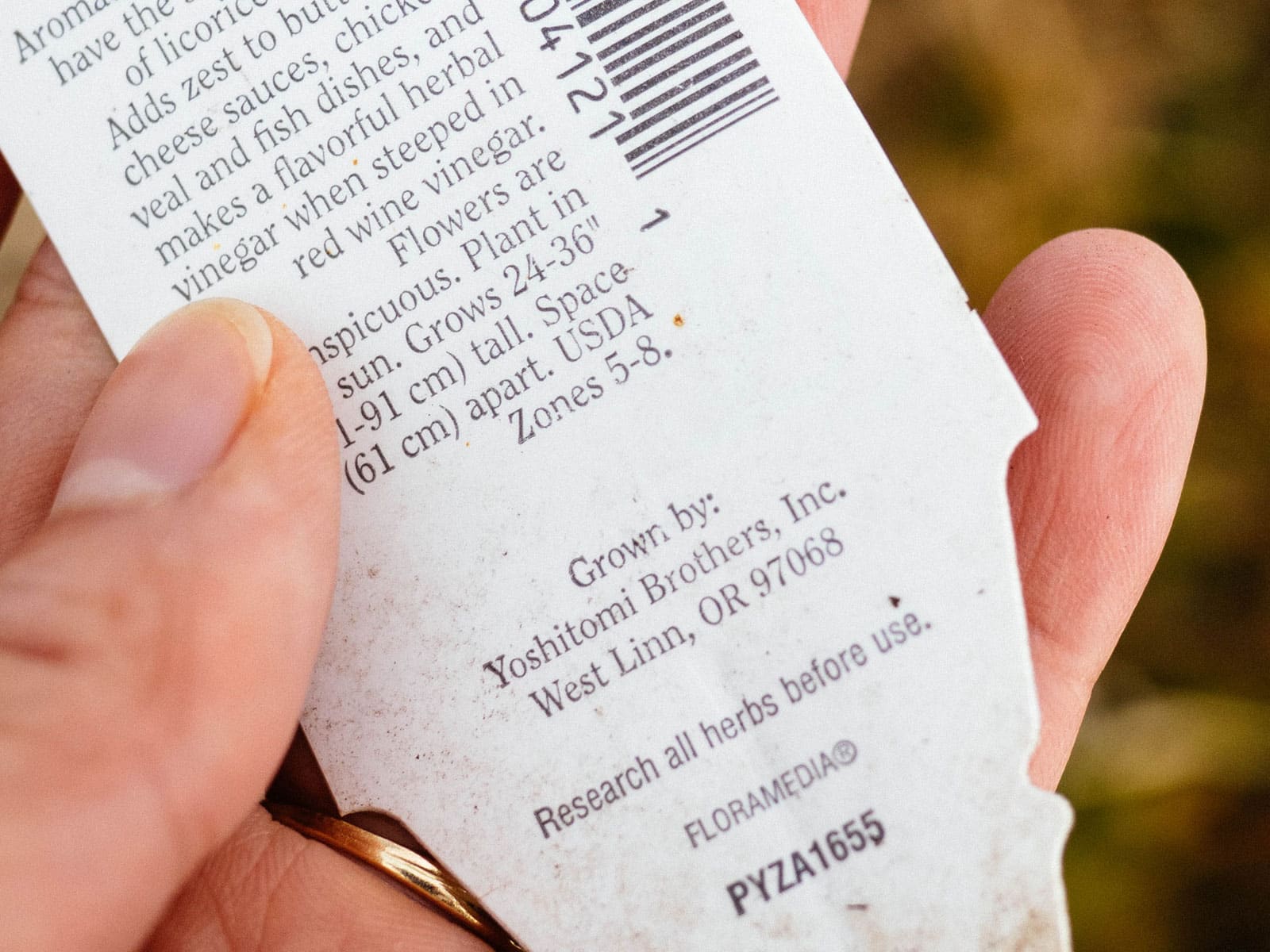
What a growing zone CAN’T tell you
Unfortunately, there’s way more a growing zone cannot tell you when it comes to planting. Your zone can’t tell you…
… How long you might experience extremely cold weather
Your hardiness zone doesn’t really indicate how often or how long you can expect freezing temperatures. Many frost-tolerant plants can withstand brief freezes, especially under frost covers or an insulating layer of snow. However, these same plants will die if freezing temperatures persist for several days or weeks.
… When it’s time to plant in spring (or fall)
Your growing zone can’t tell you when it’s safe to plant in spring or when the first frost is expected in fall. Even within the same zone, two different cities can have frost dates that are months apart!
Take, for example, Pittsburgh, PA, which falls in zone 6b and has an expected last frost date of April 24. Where I live in Bend, OR (also zone 6b), our last frost isn’t until June 26!
Pittsburgh’s first frost falls around October 14, while in Bend, we can expect our first frost around September 7—a full month earlier. That’s a huge difference in the number of frost-free days between the two cities.
Quick tip
If you’re looking for a reliable chart that tells you when you should sow seeds or set out transplants, use my interactive tool to create a personalized planting calendar, based on your actual frost dates.
… What your microclimate is like
Even though I live in zone 6b, I’m in a much colder microclimate than the rest of Bend (usually 5°F to 10°F colder in winter). I’m also in a dry, high desert region and don’t have the benefit of protective snow cover like colder zones get. Because of that, I consider my “true” zone to be 5, and only buy perennials that are hardy to zones 5 or below.
As I mentioned in my other post on growing food in winter without a greenhouse, cold temperatures are not the only thing that affect whether your plants will survive; winter desiccation plays a large role.
… What vegetables you can grow
Your hardiness zone can’t tell you the kind of crops that will actually do well in your climate.
Let’s use Portland, OR, and Houston, TX, as examples here (both in zone 9). Gardeners in Portland can grow lettuce through the end of June, when the average highs are around 76°F. (They can even keep lettuce going all summer with a bit of shade and strategic succession planting.) Houston, however, experiences highs of 76°F by April, which means lettuce is best grown through the winter months there.
Related: Try these heat-tolerant lettuce varieties if you live in a warmer zone
What about okra? Zone 9 should be warm enough to grow this heat-loving crop, right? (I had a friend in Houston who once told me they grow two things well: beef and okra!)
While it’s true that okra thrives in the hot Texan sun, it’s not well adapted to Western Oregon’s cool, cloudy summers and lower night temperatures. So in this instance—despite okra technically being able to survive zone 9—it isn’t productive in all zone 9 regions.
… Whether your plants can survive summer in your area
The USDA Plant Hardiness Zone Map focuses on the average coldest temperatures, but doesn’t say anything about the average hottest temperatures in a given zone.
Take the Portland and Houston example above. Despite both of these cities being in zone 9, they have very different climates, particularly in summer. The average high in Portland in August is 80°F and the low is 58°F. In comparison, Houston’s average high in August is 91°F and the low is 76°F.
Notice how Houston’s low temp is nearly 20° higher than Portland’s low temp? Wild, right?! So a plant that would thrive over the summer in Portland would probably struggle in Houston’s searing heat.
Frequently asked questions
For a more a detailed look at how growing zones can vary in your state, find the corresponding map below. I’ve included 54 USDA hardiness zone maps for the United States and select US districts and territories. You can click on each map to view a larger version on the USDA website.


